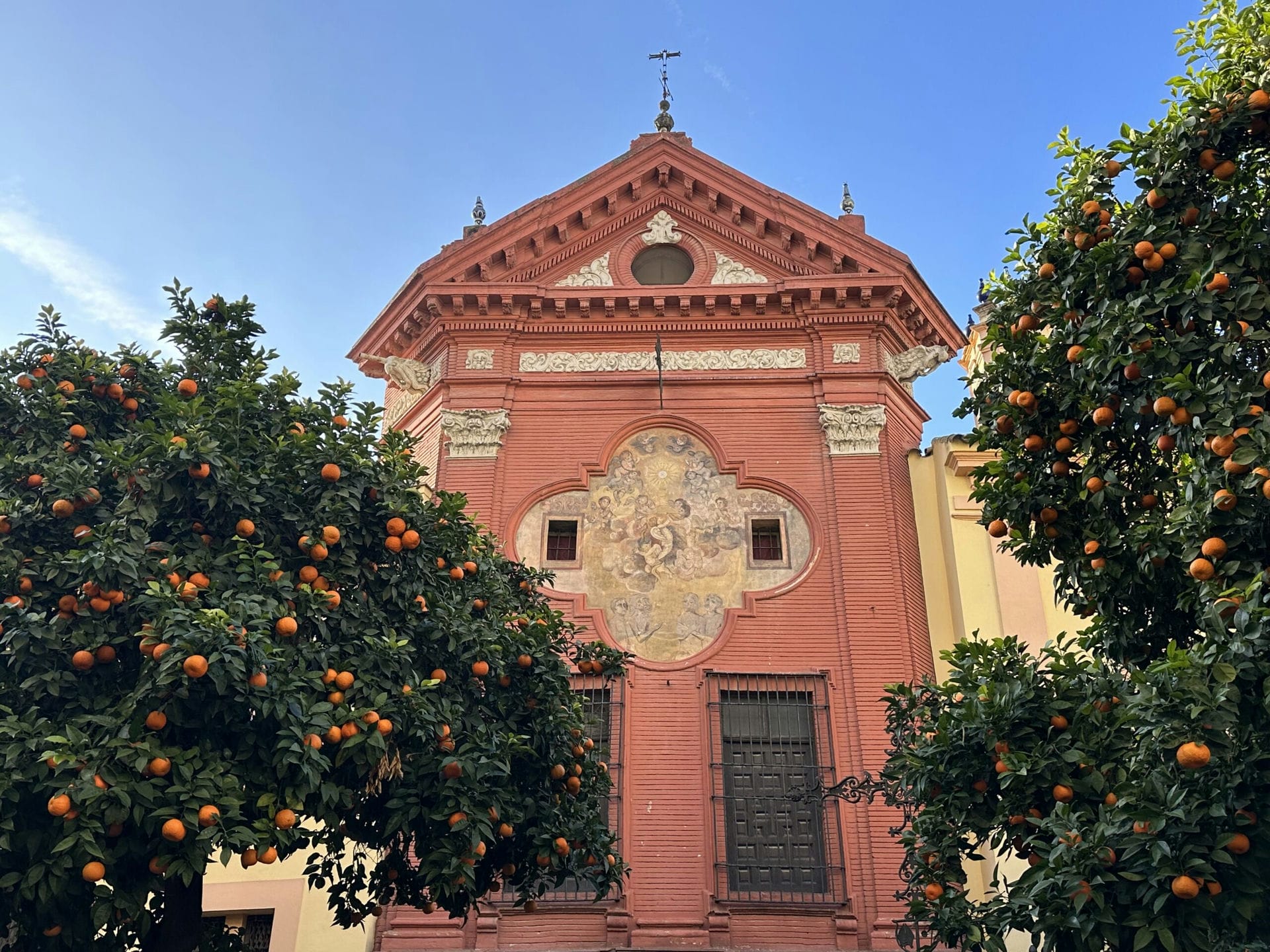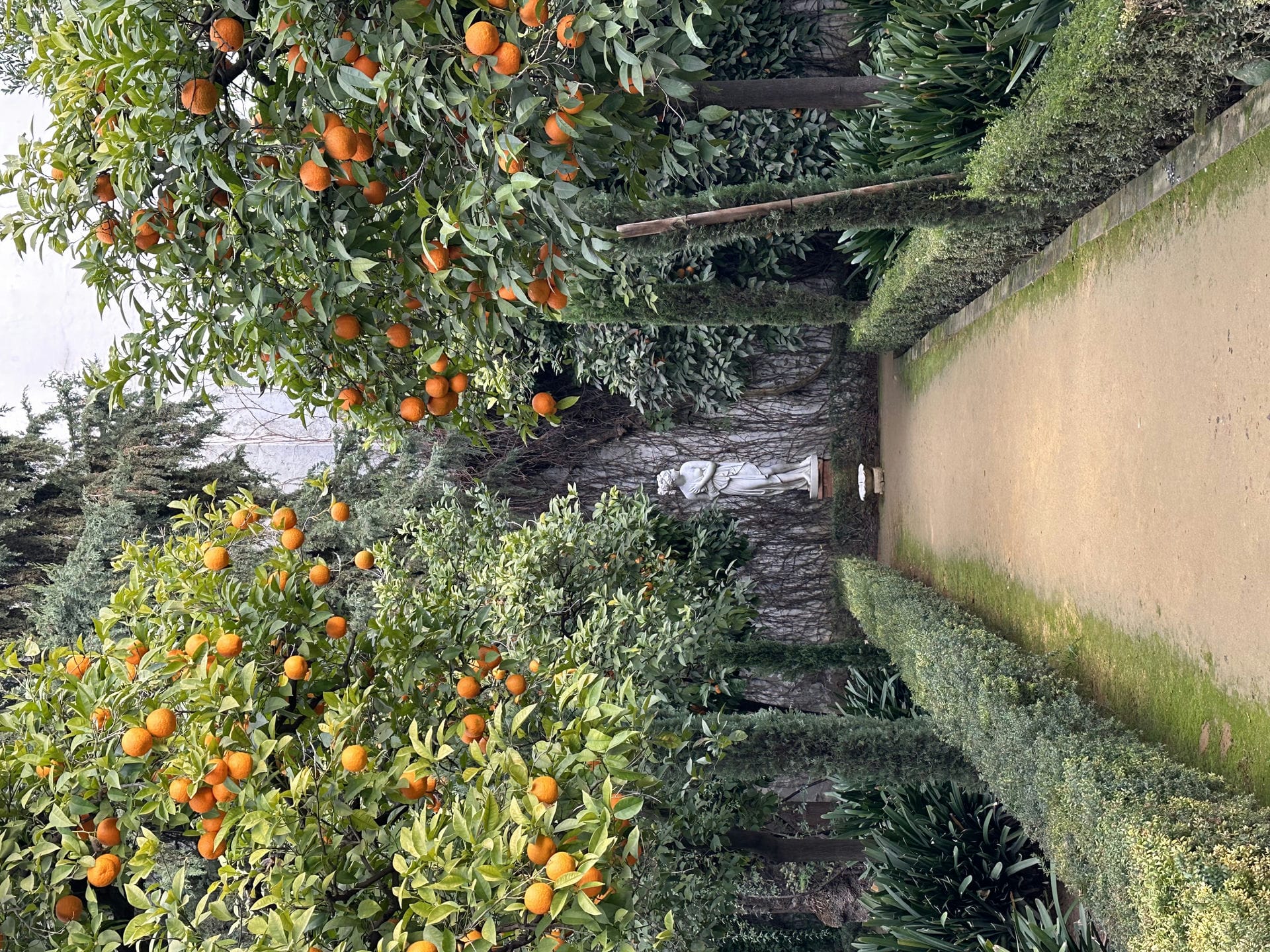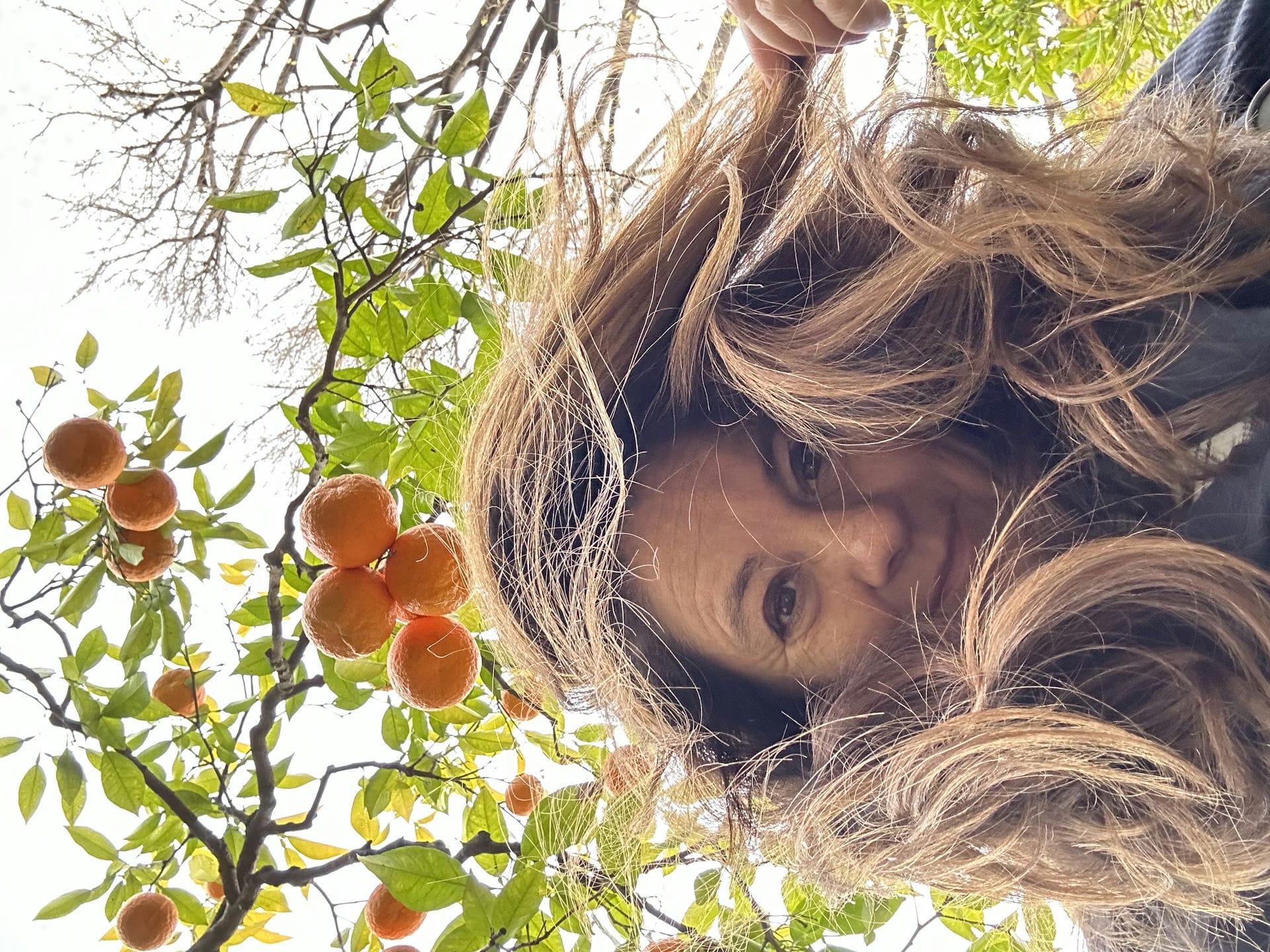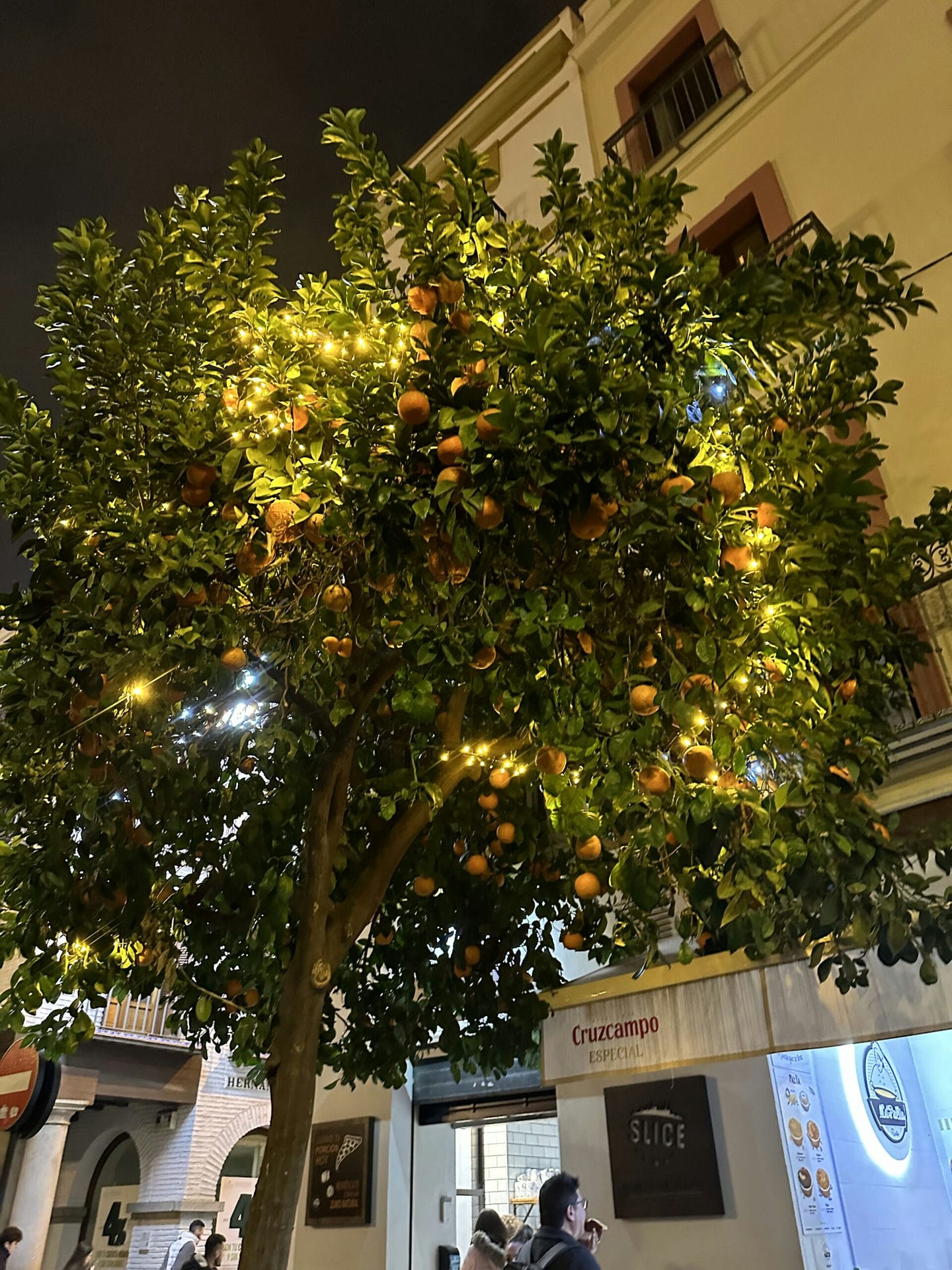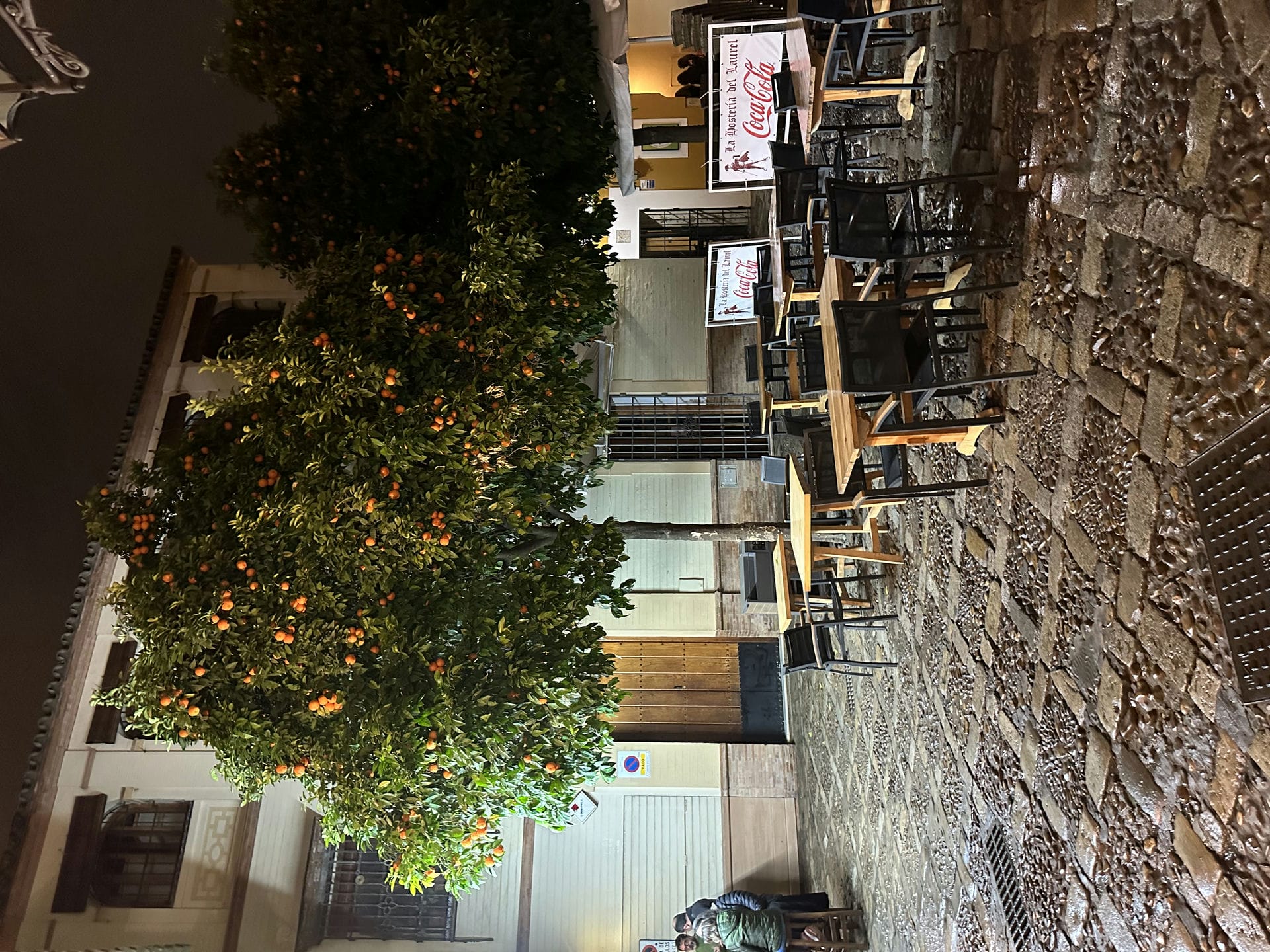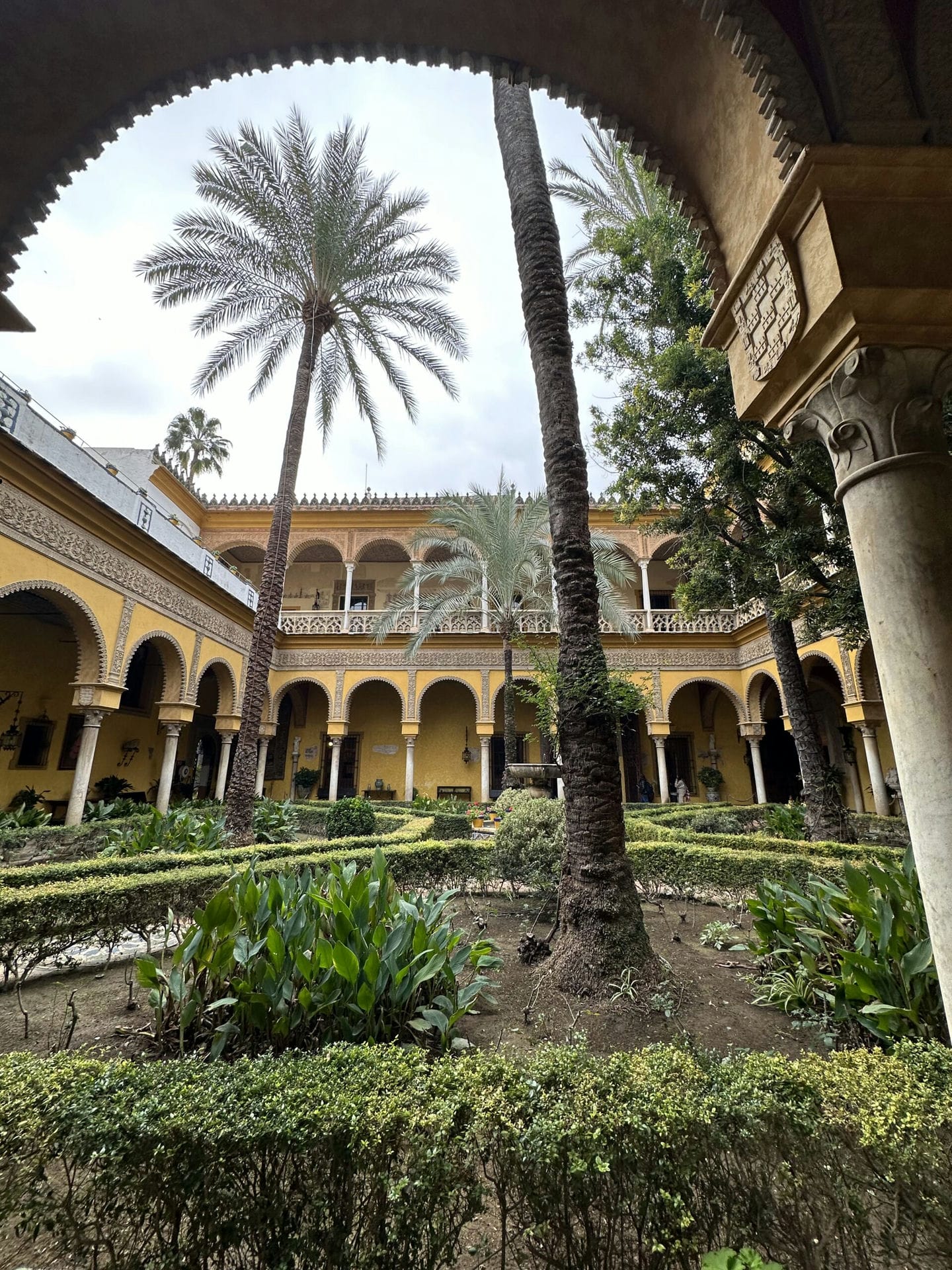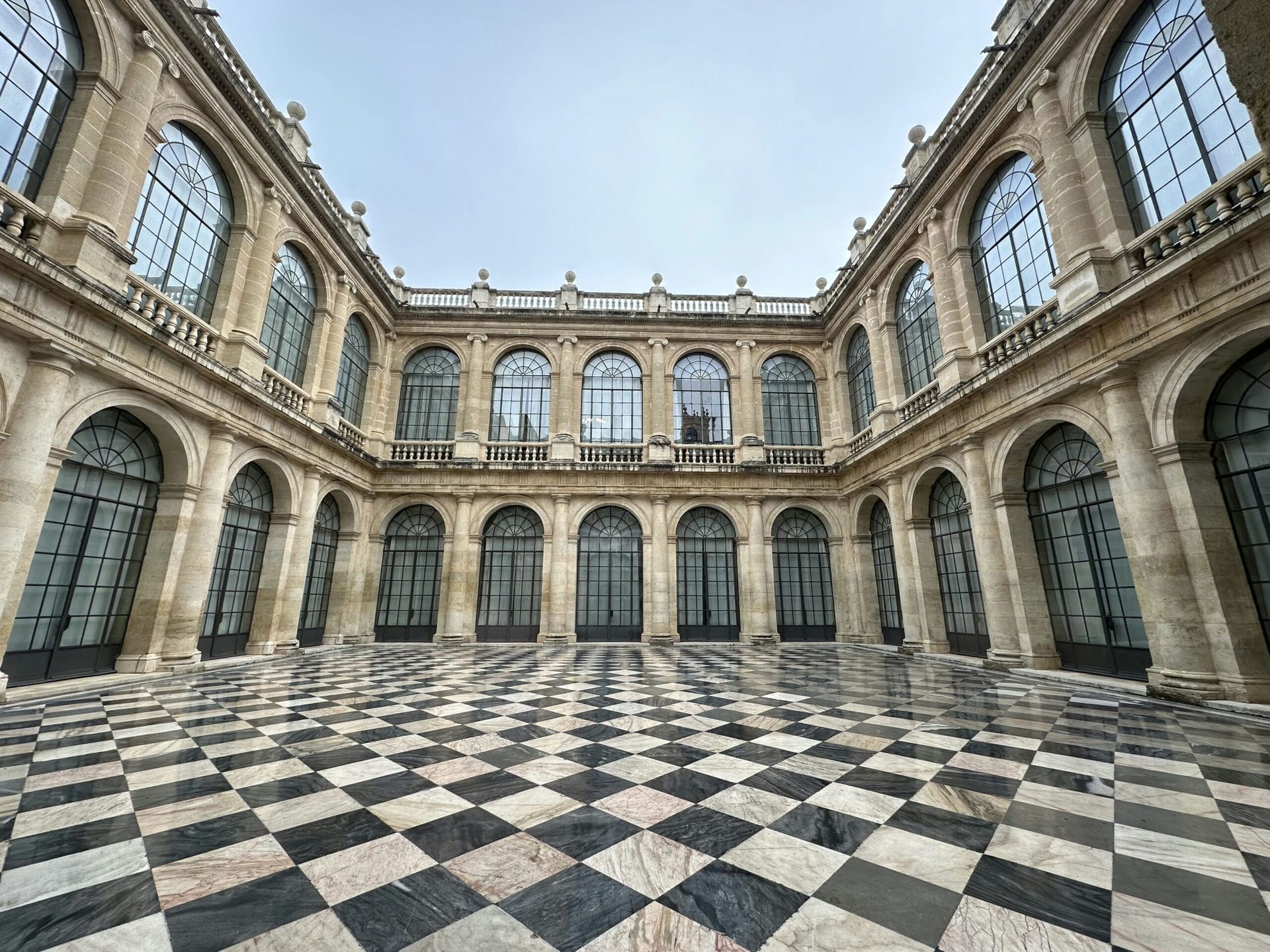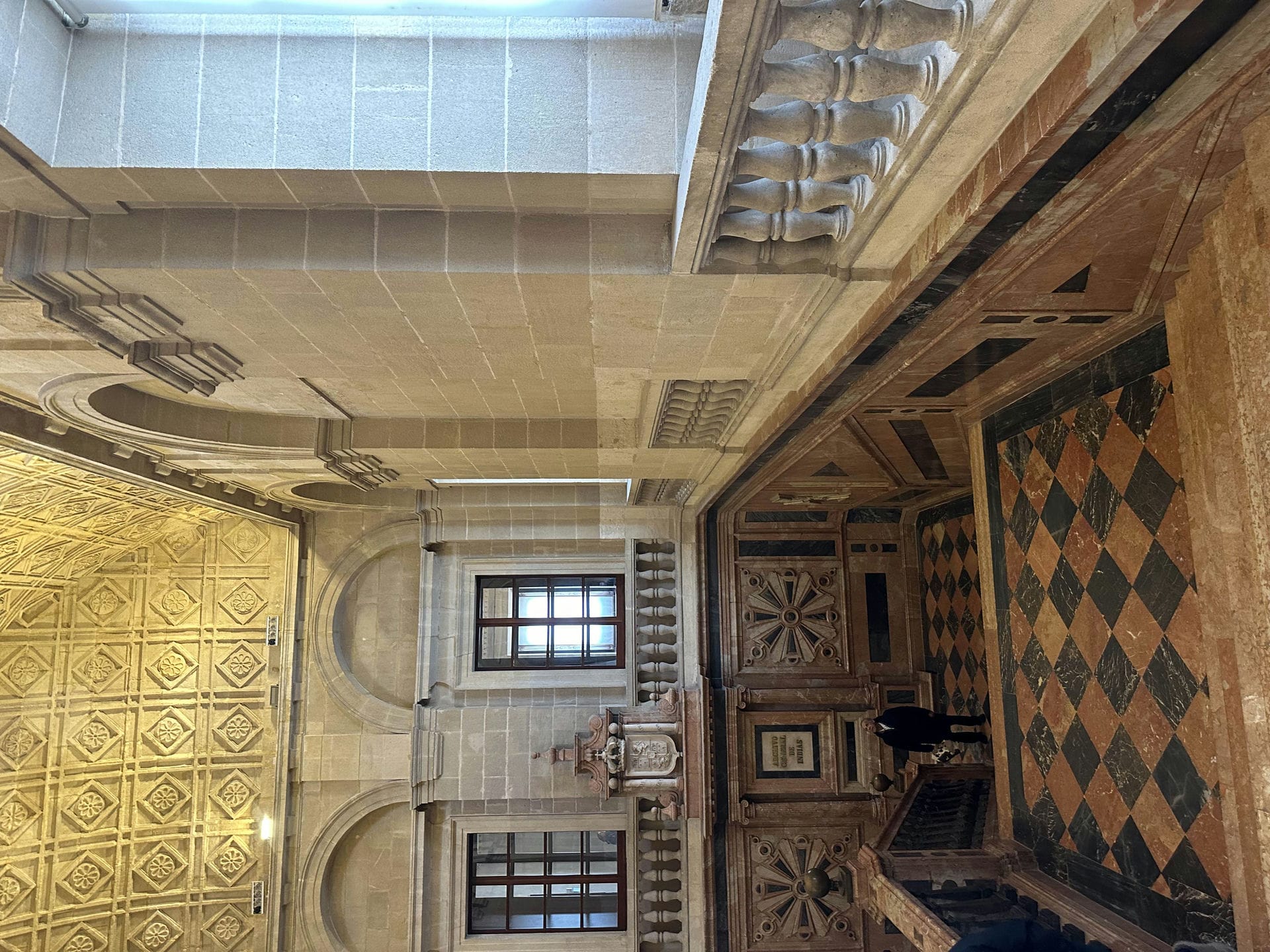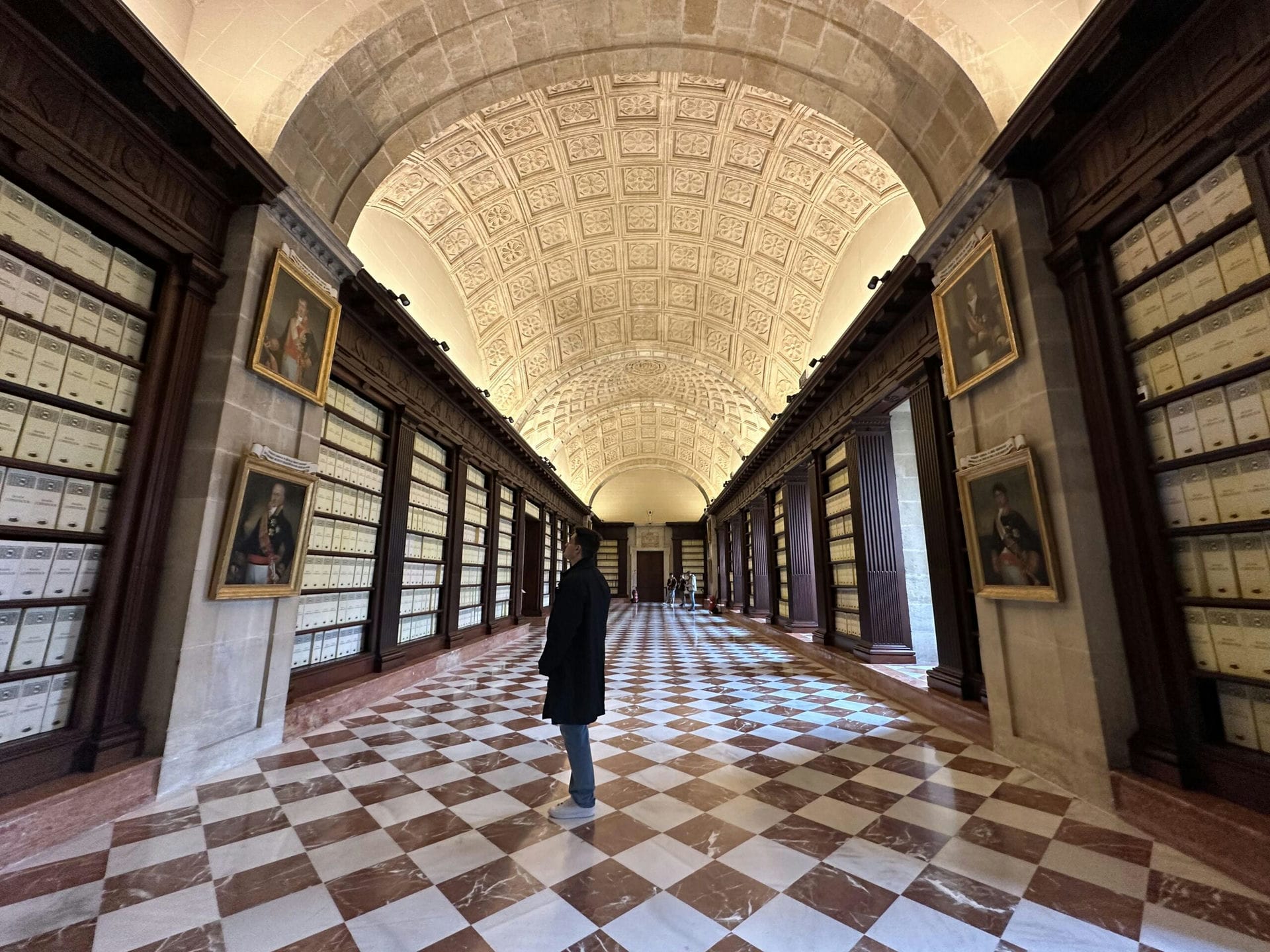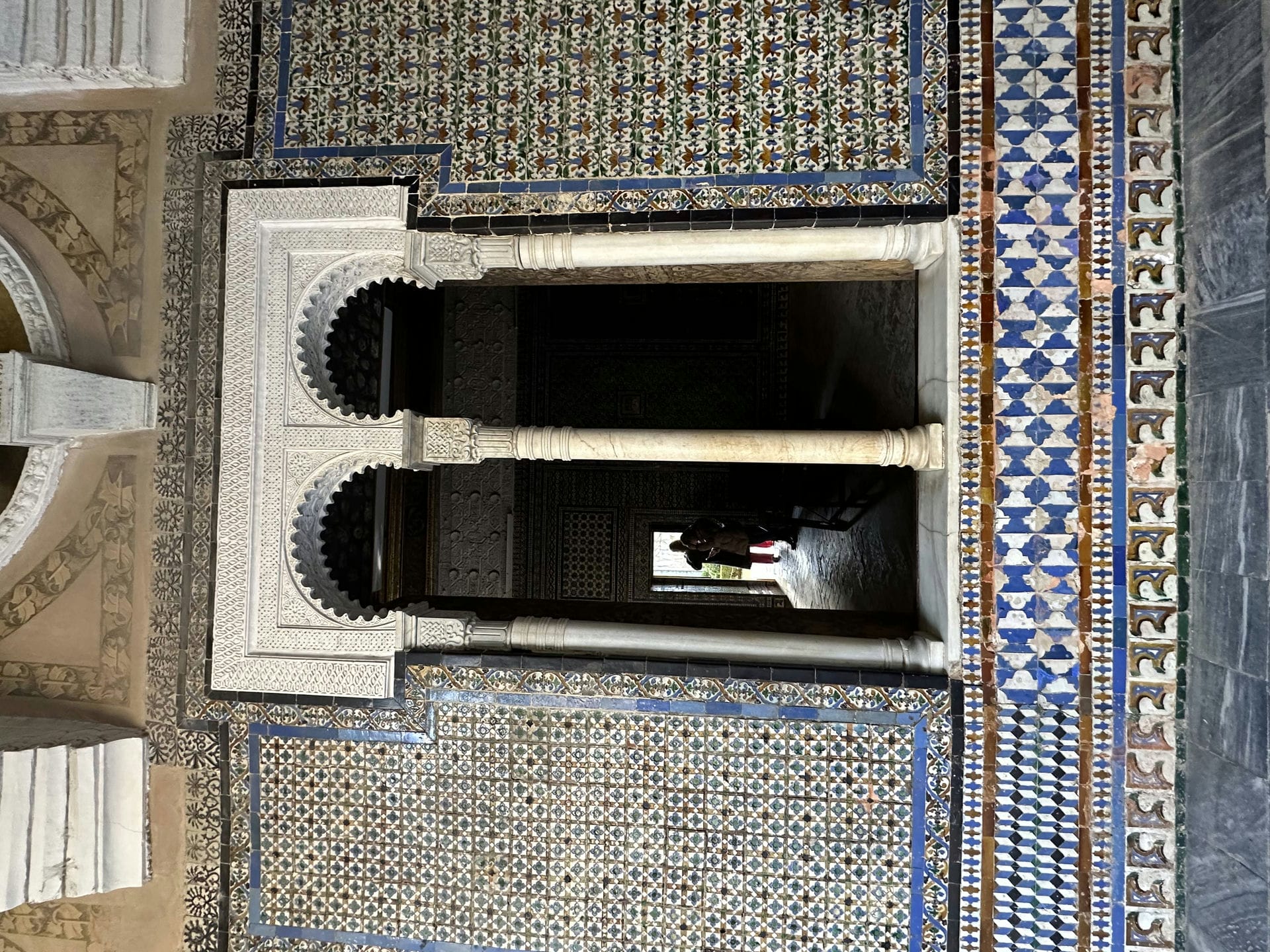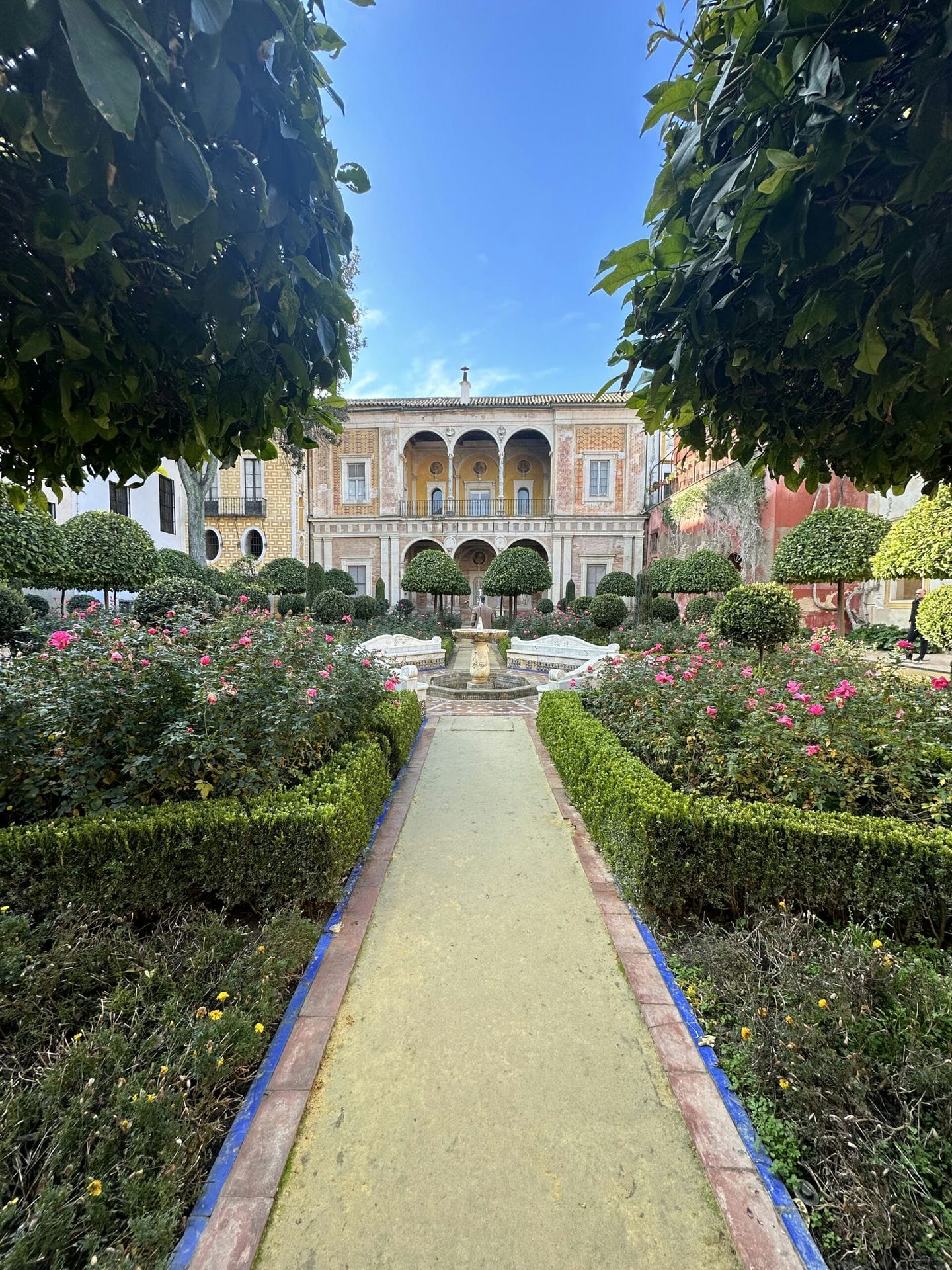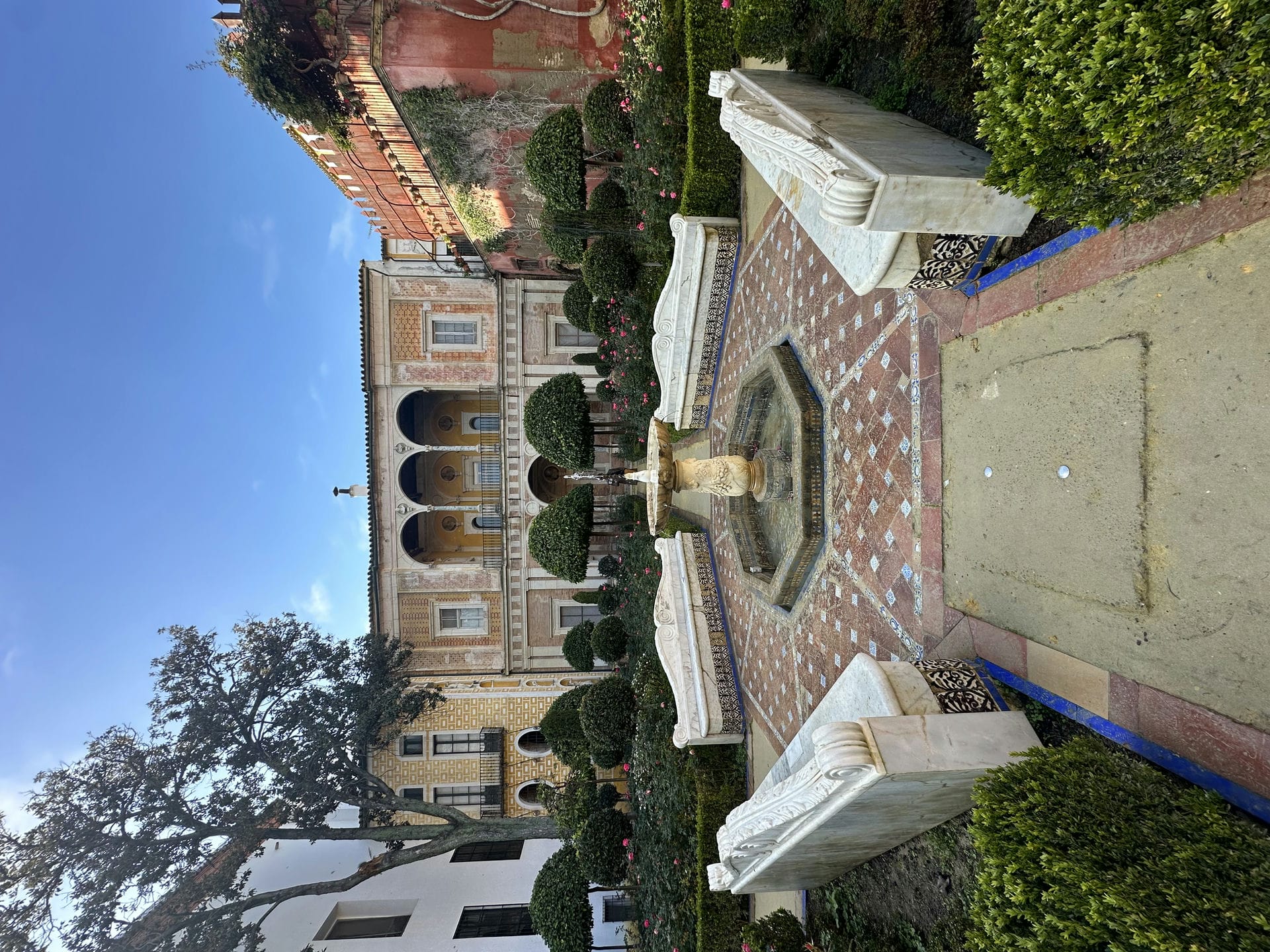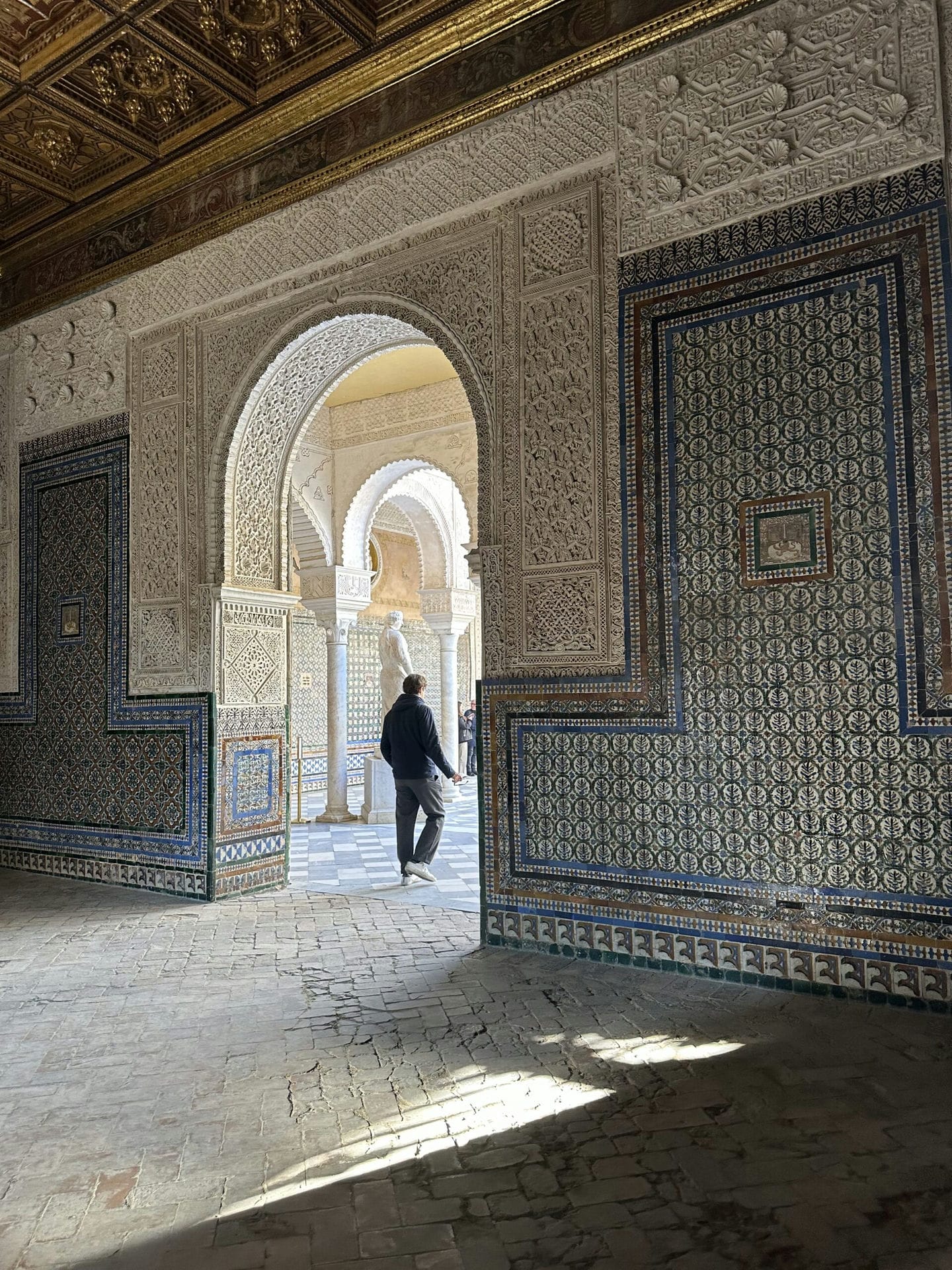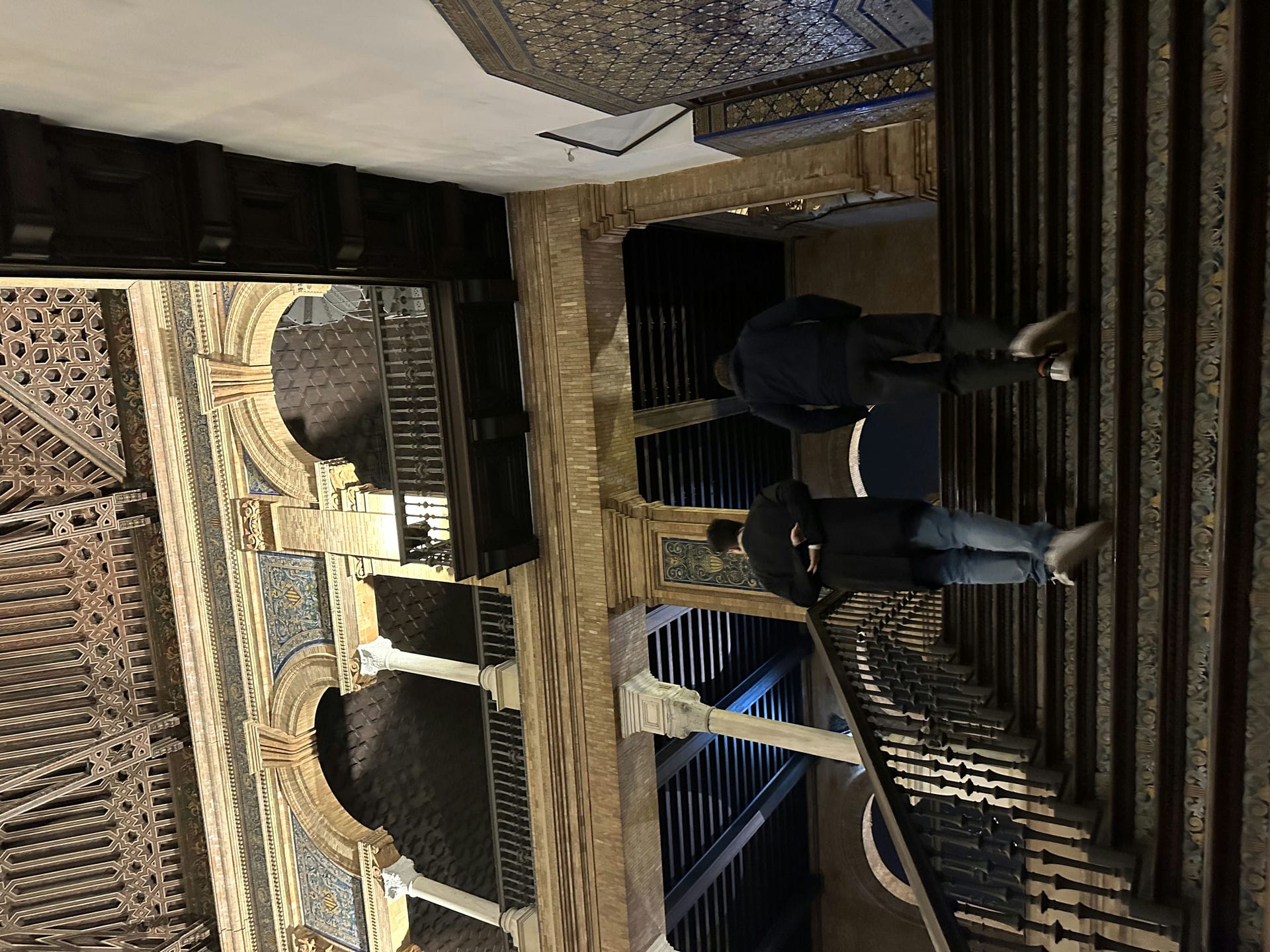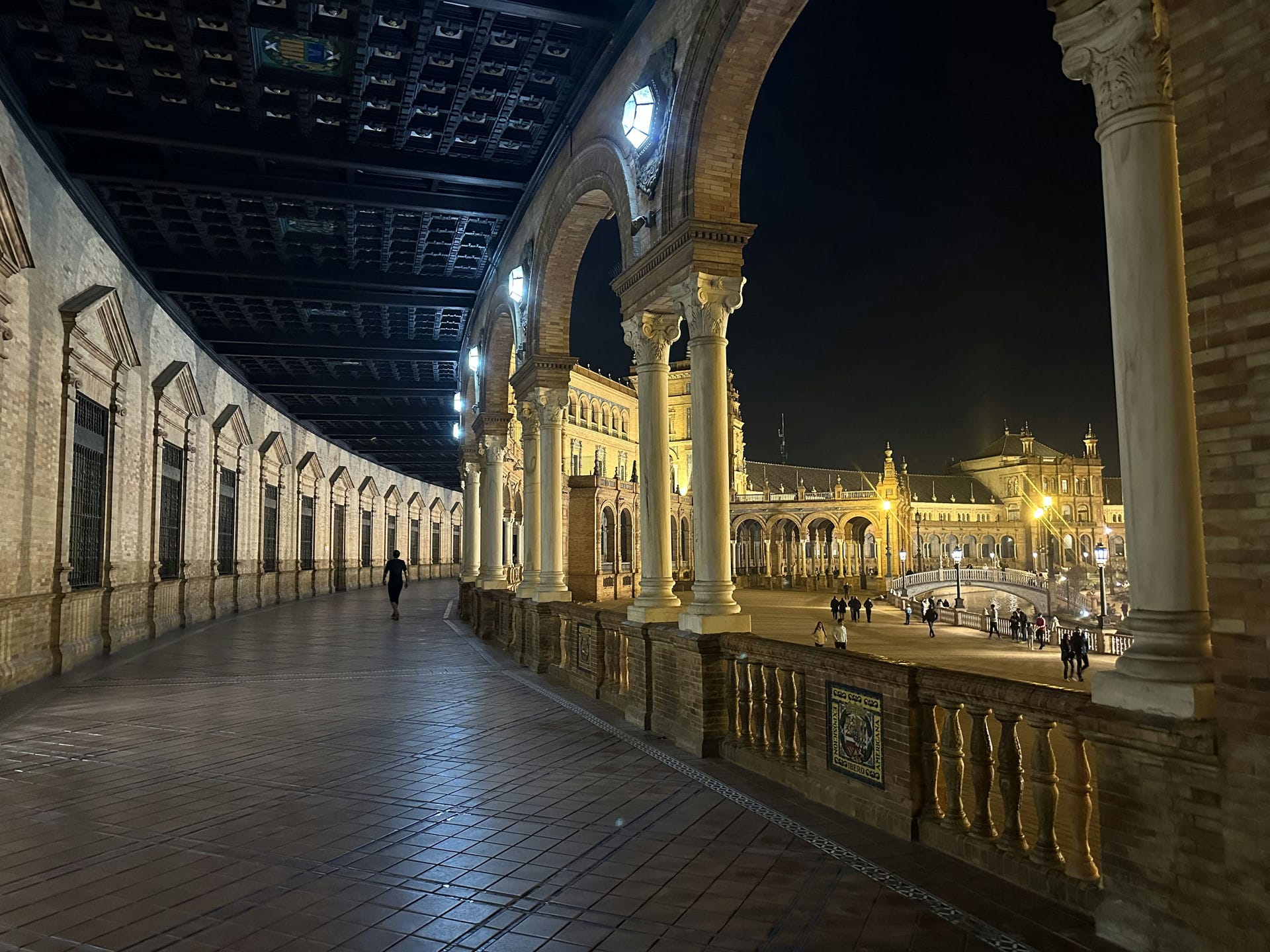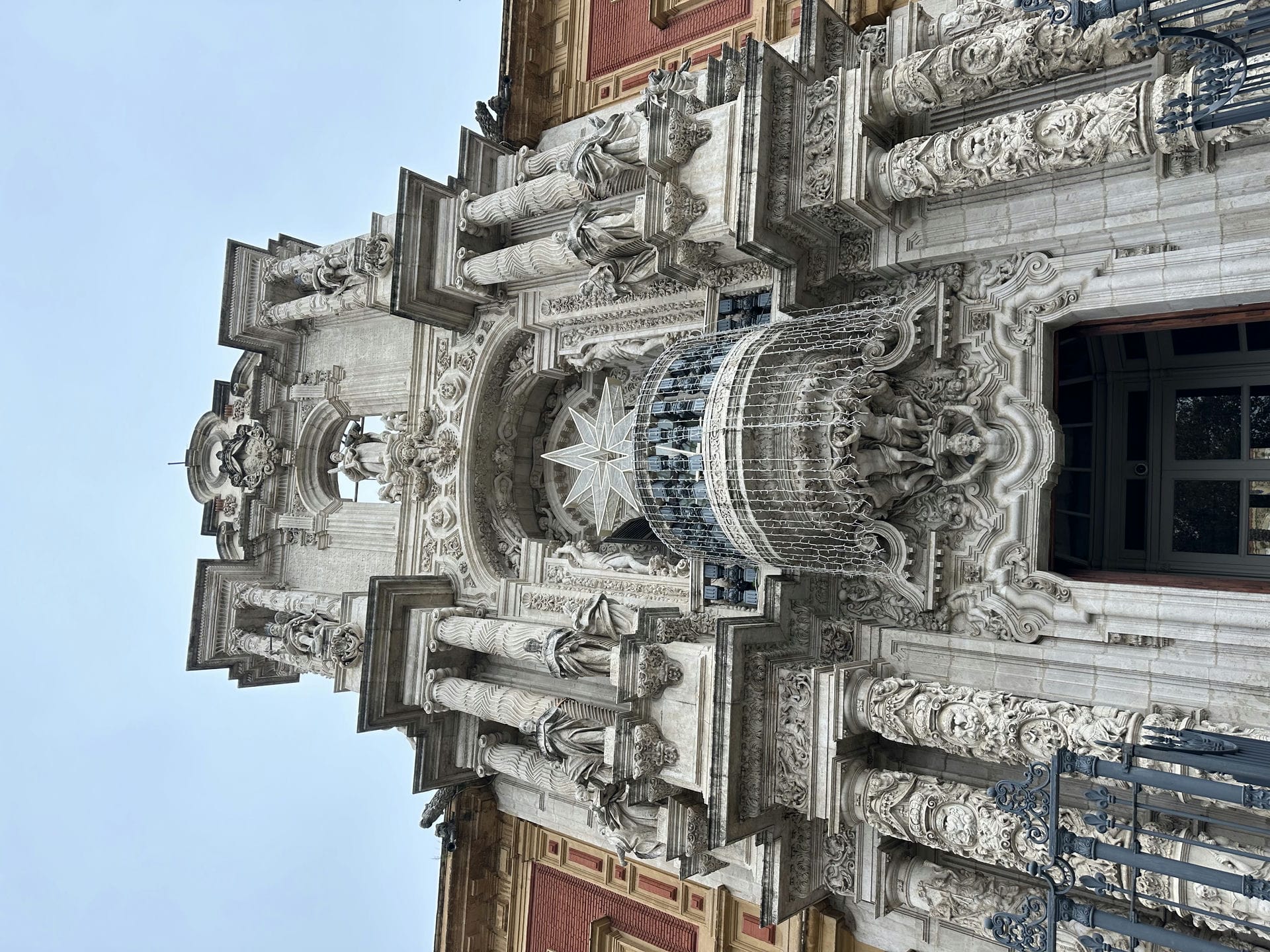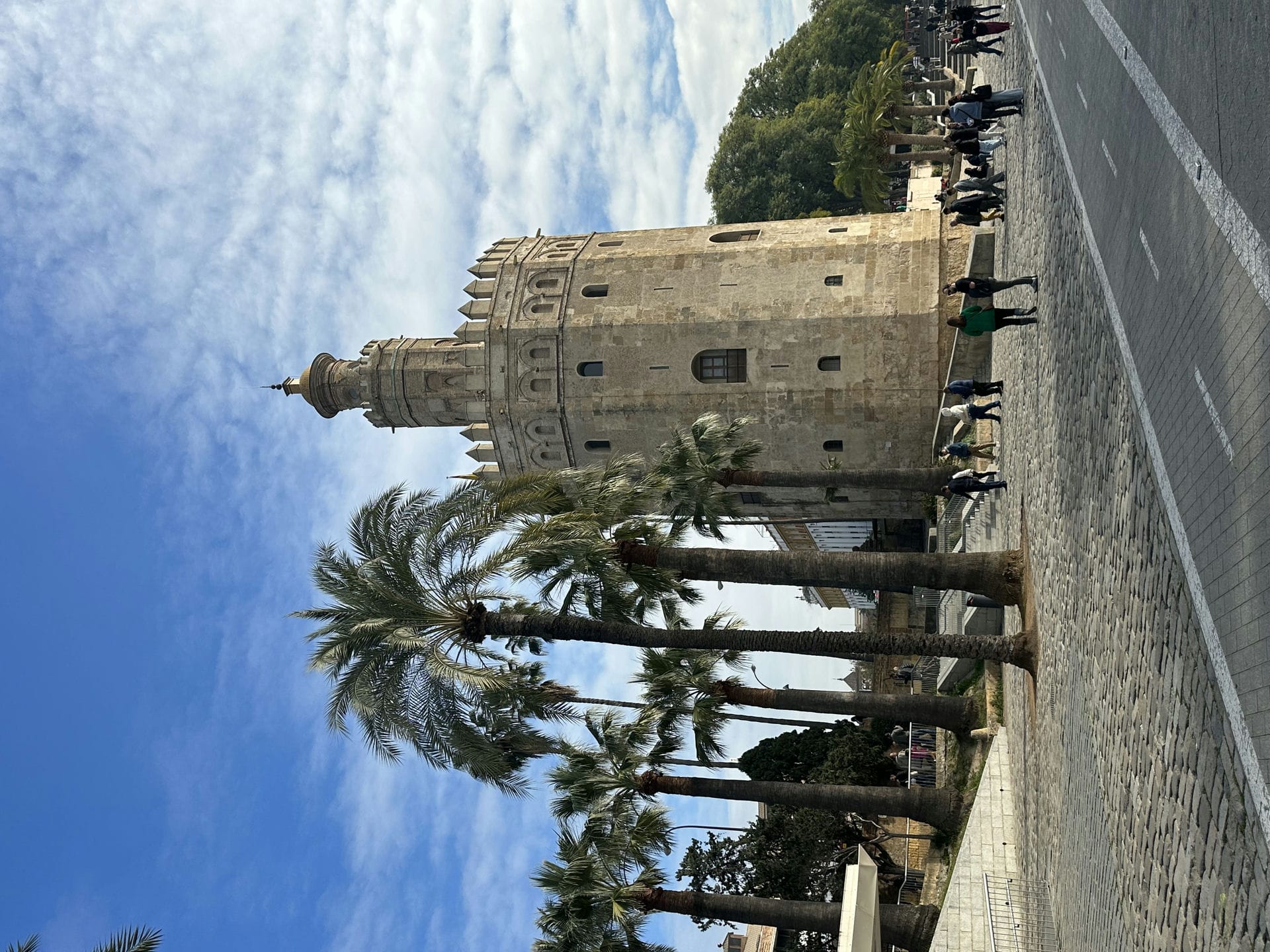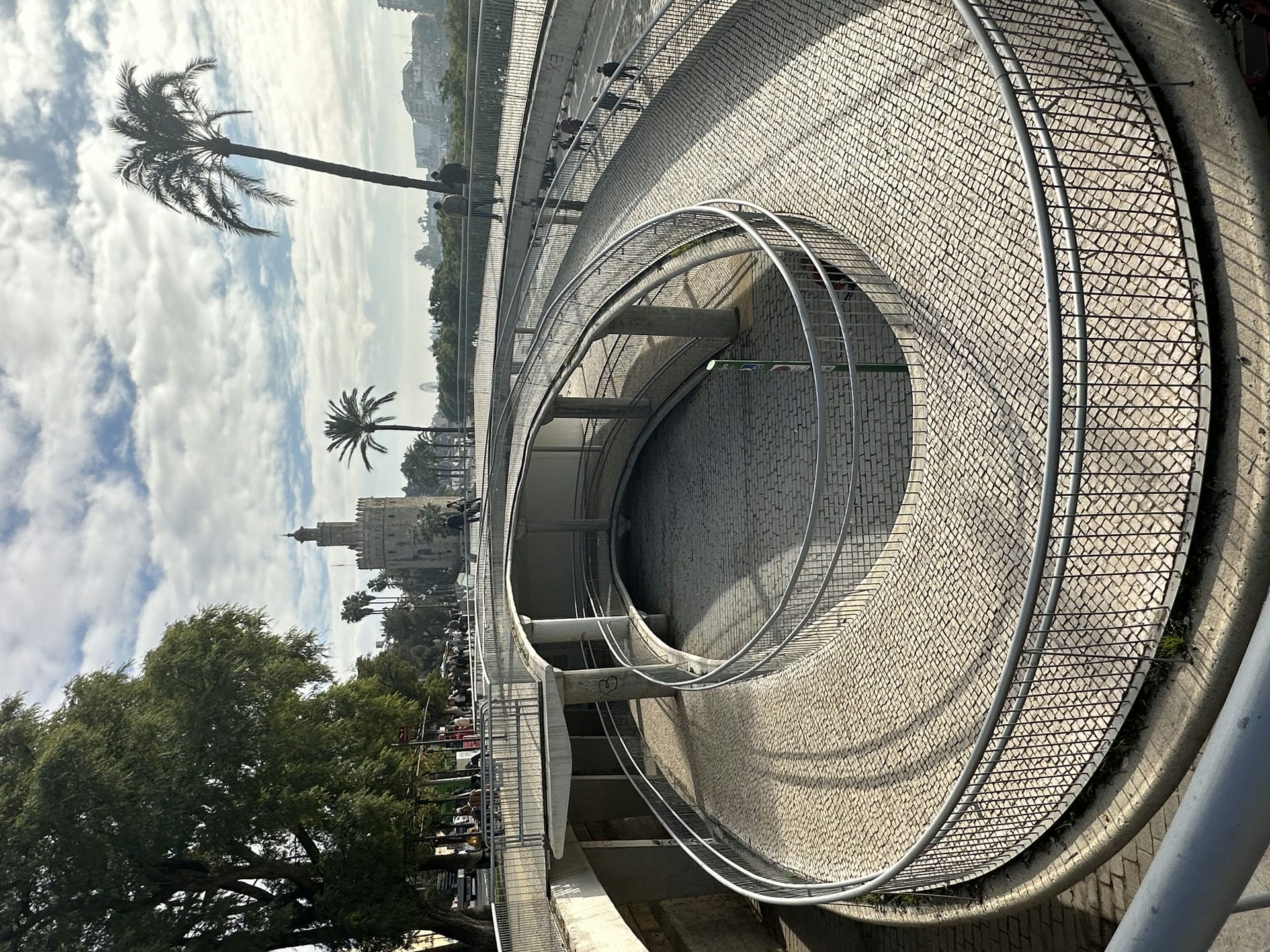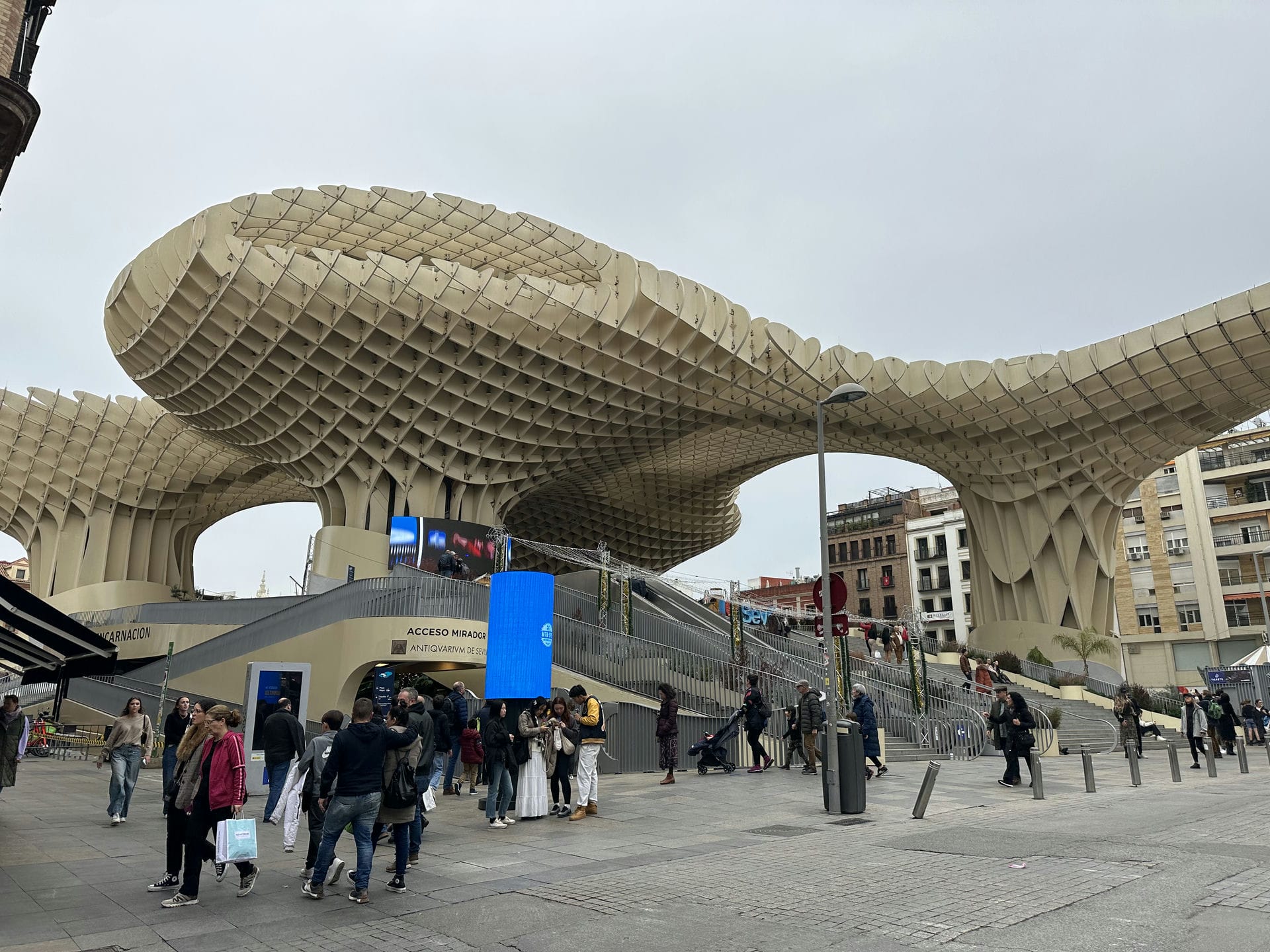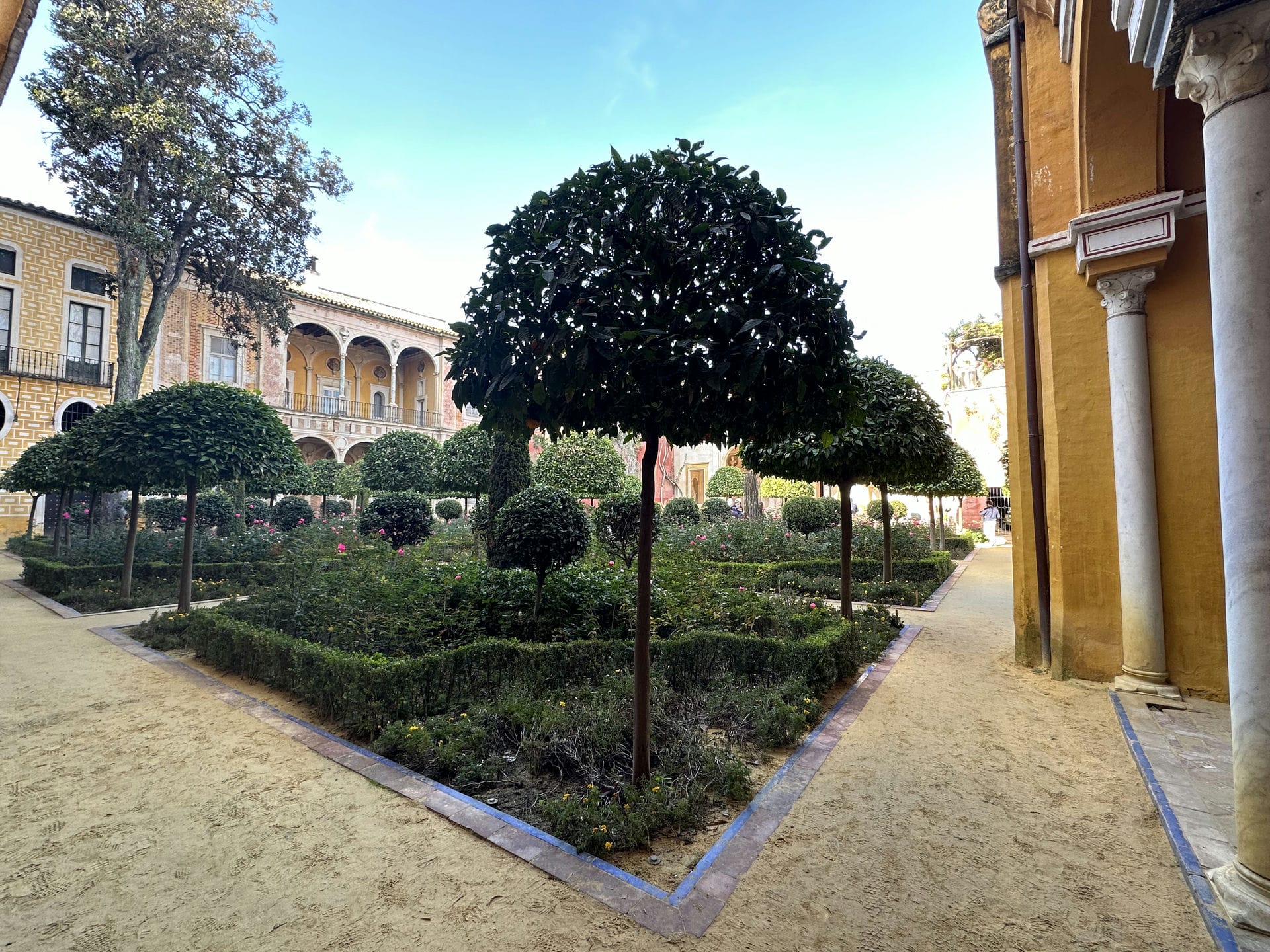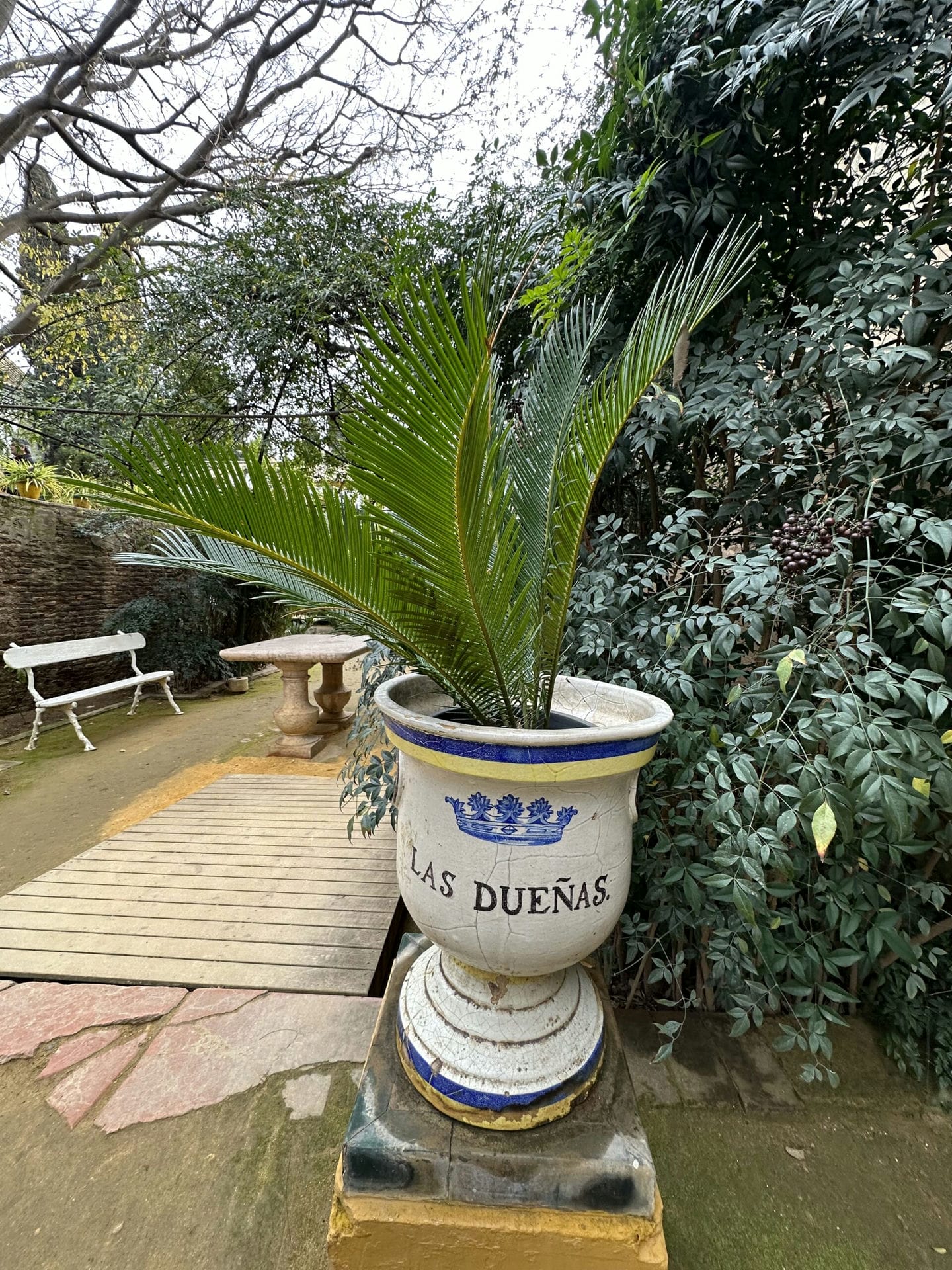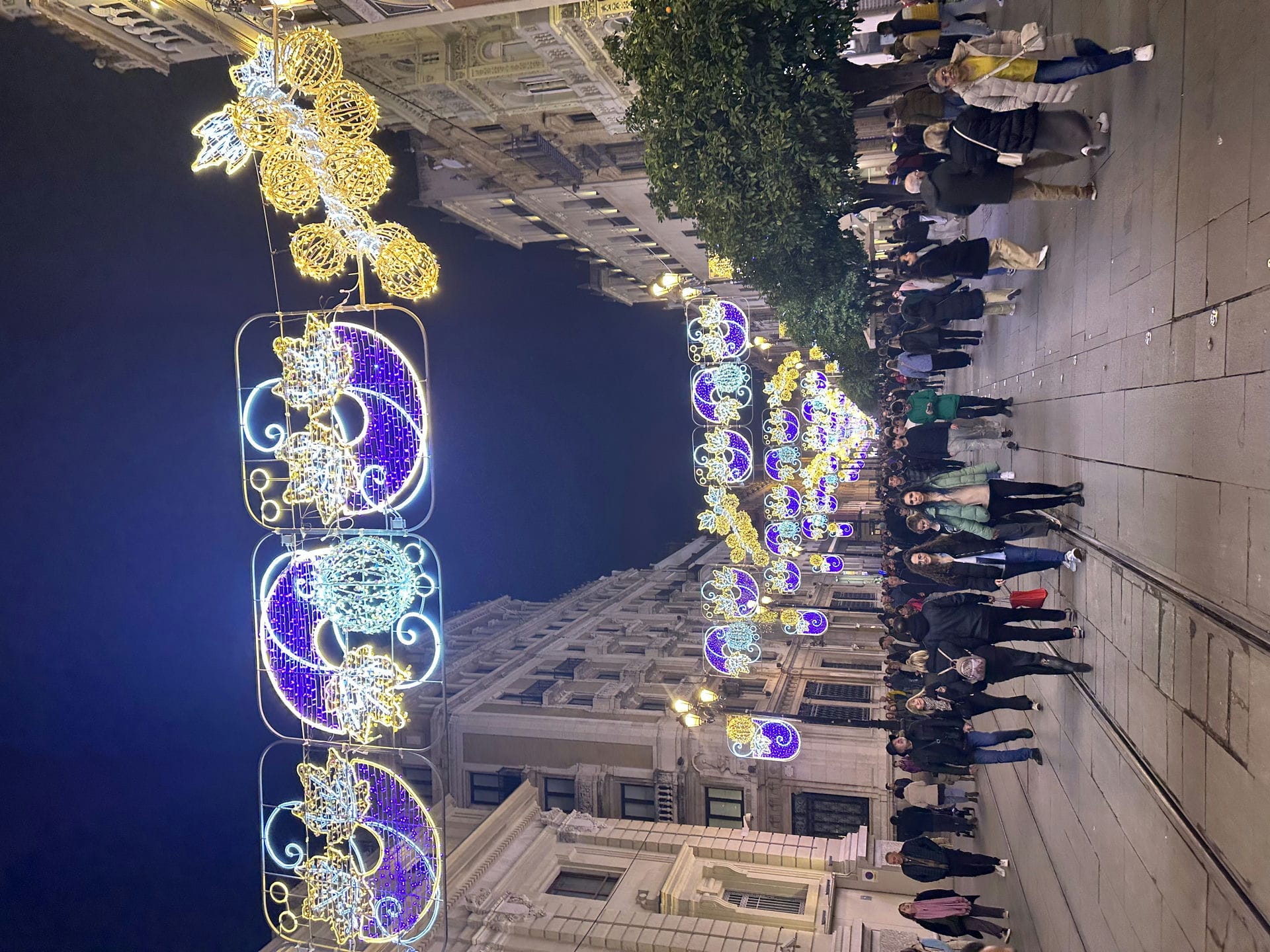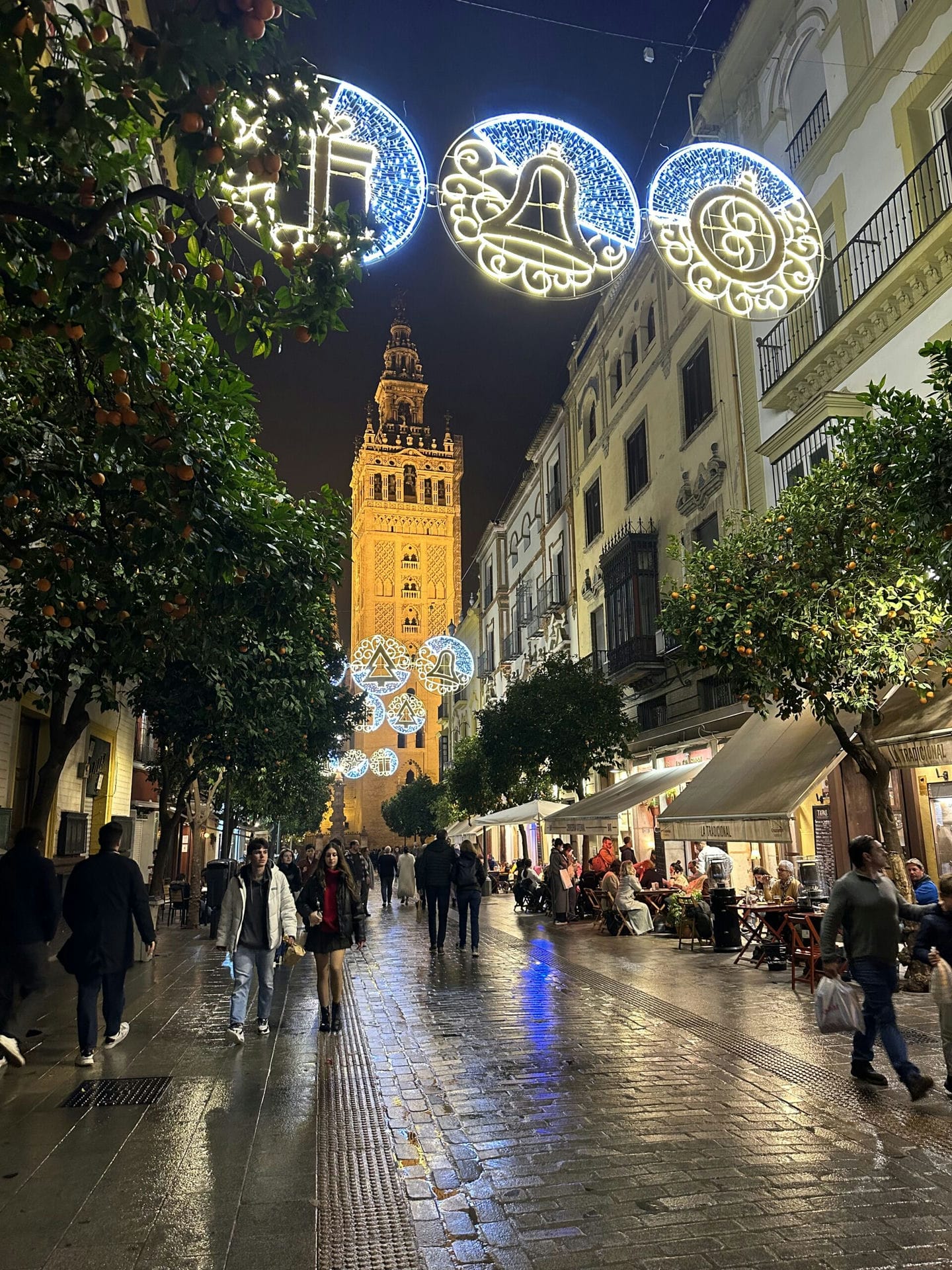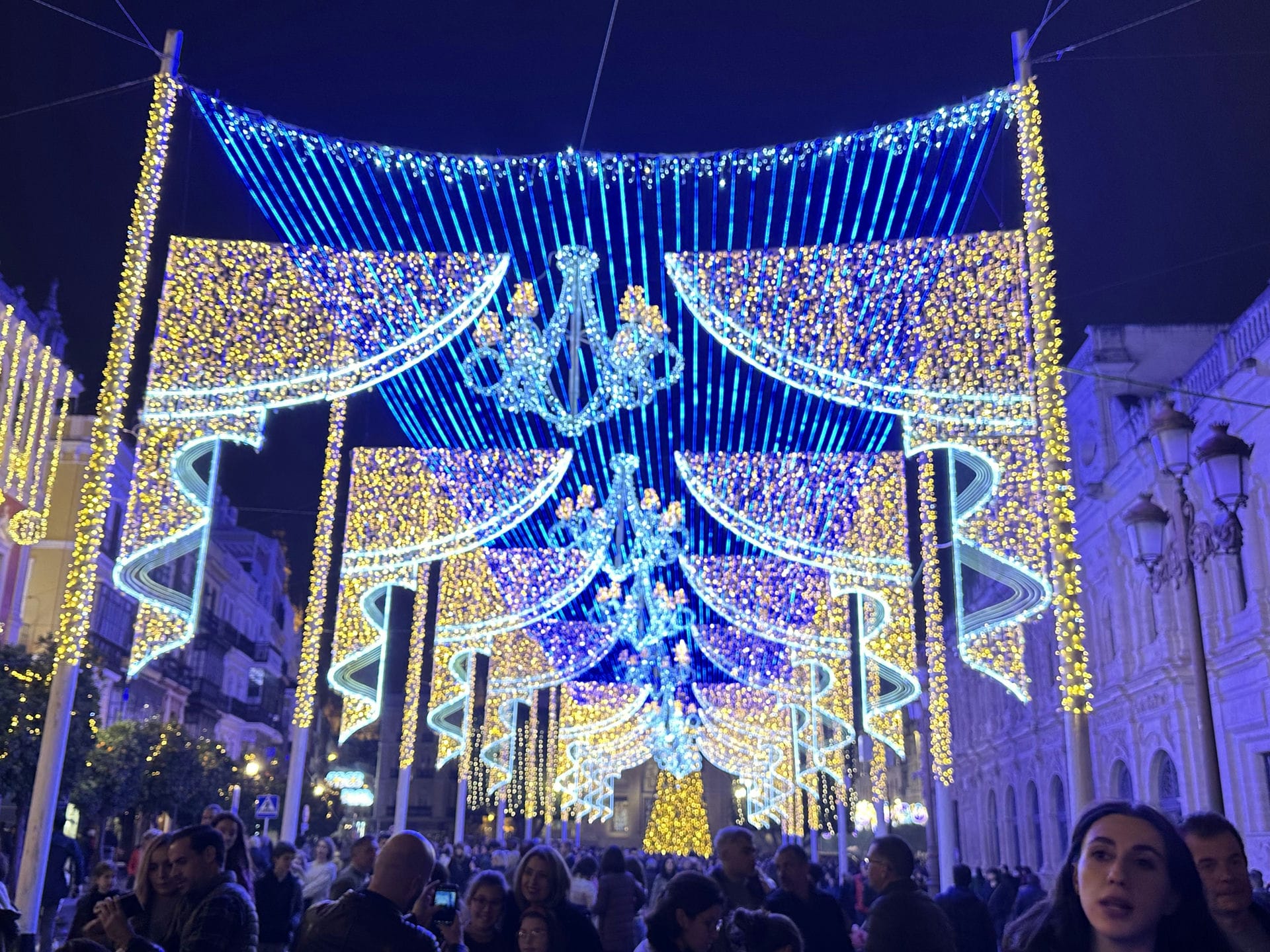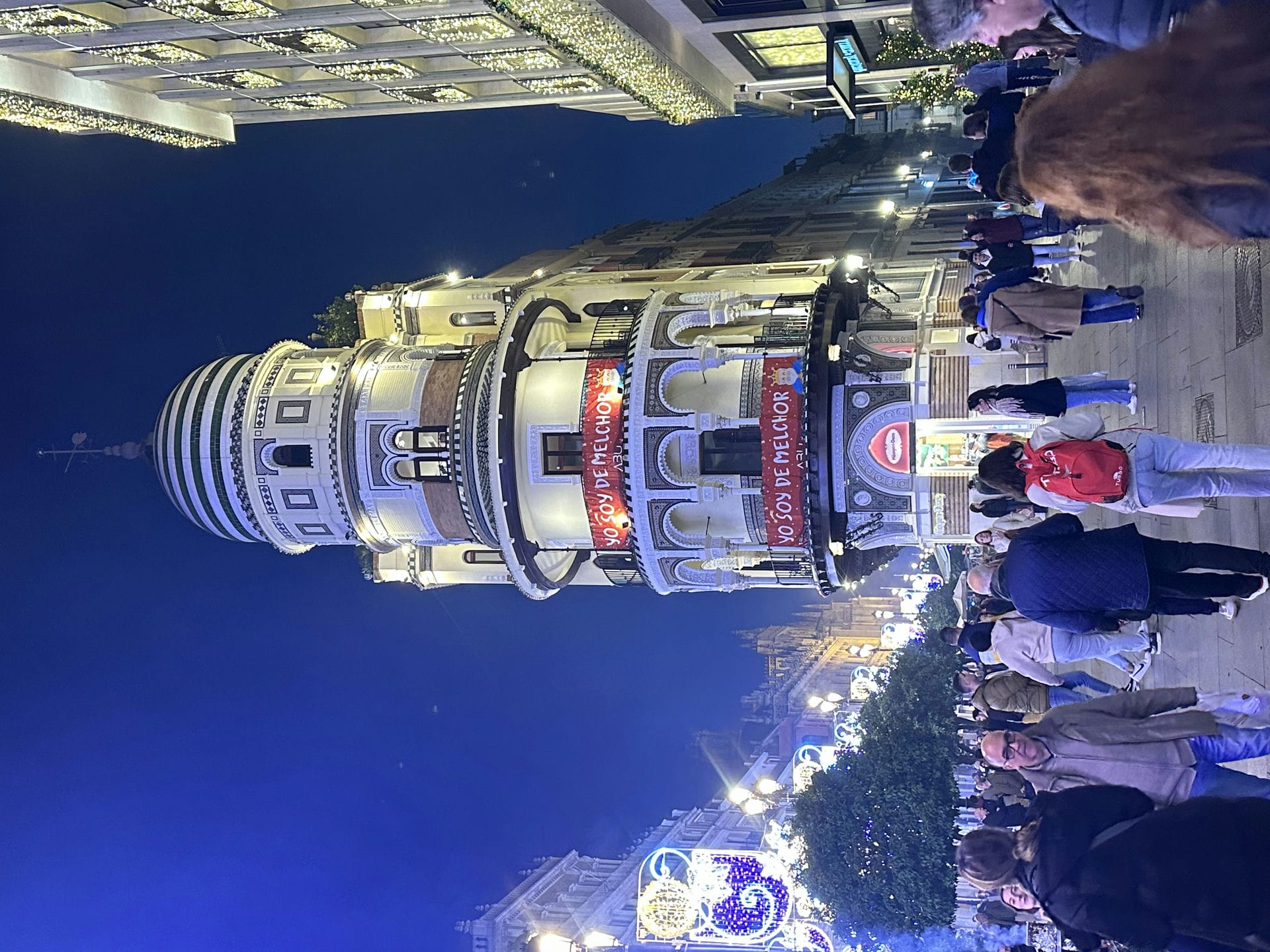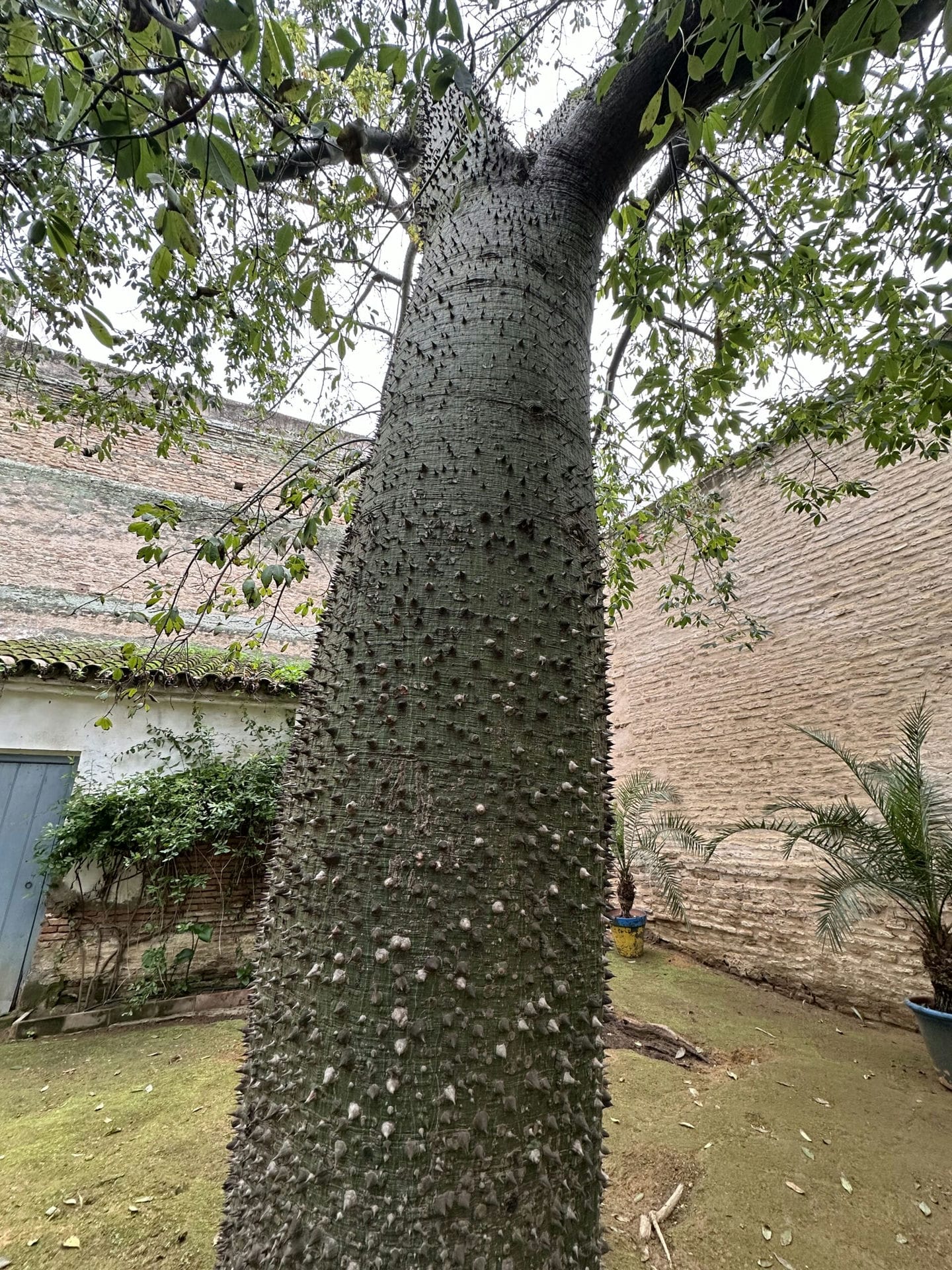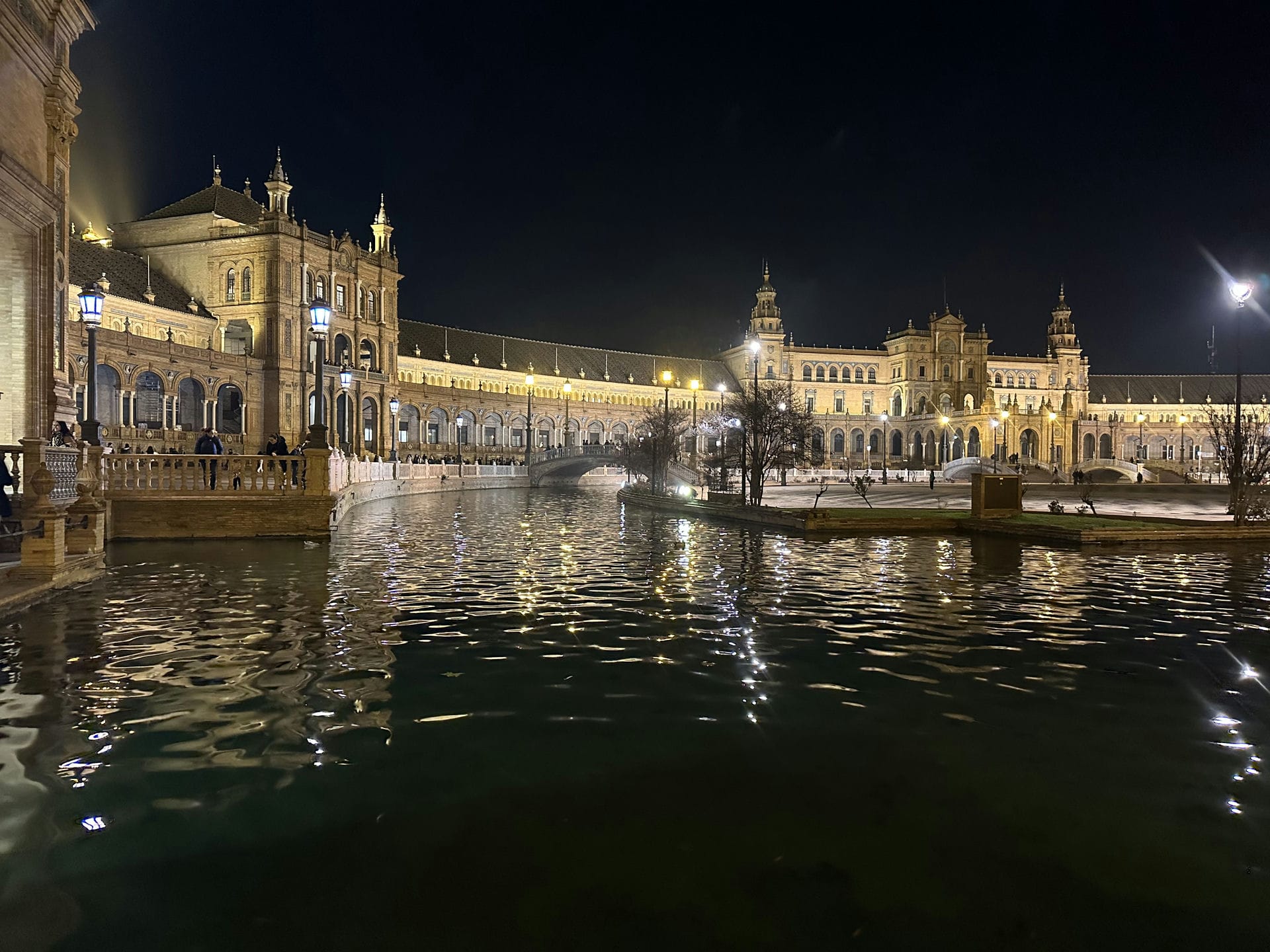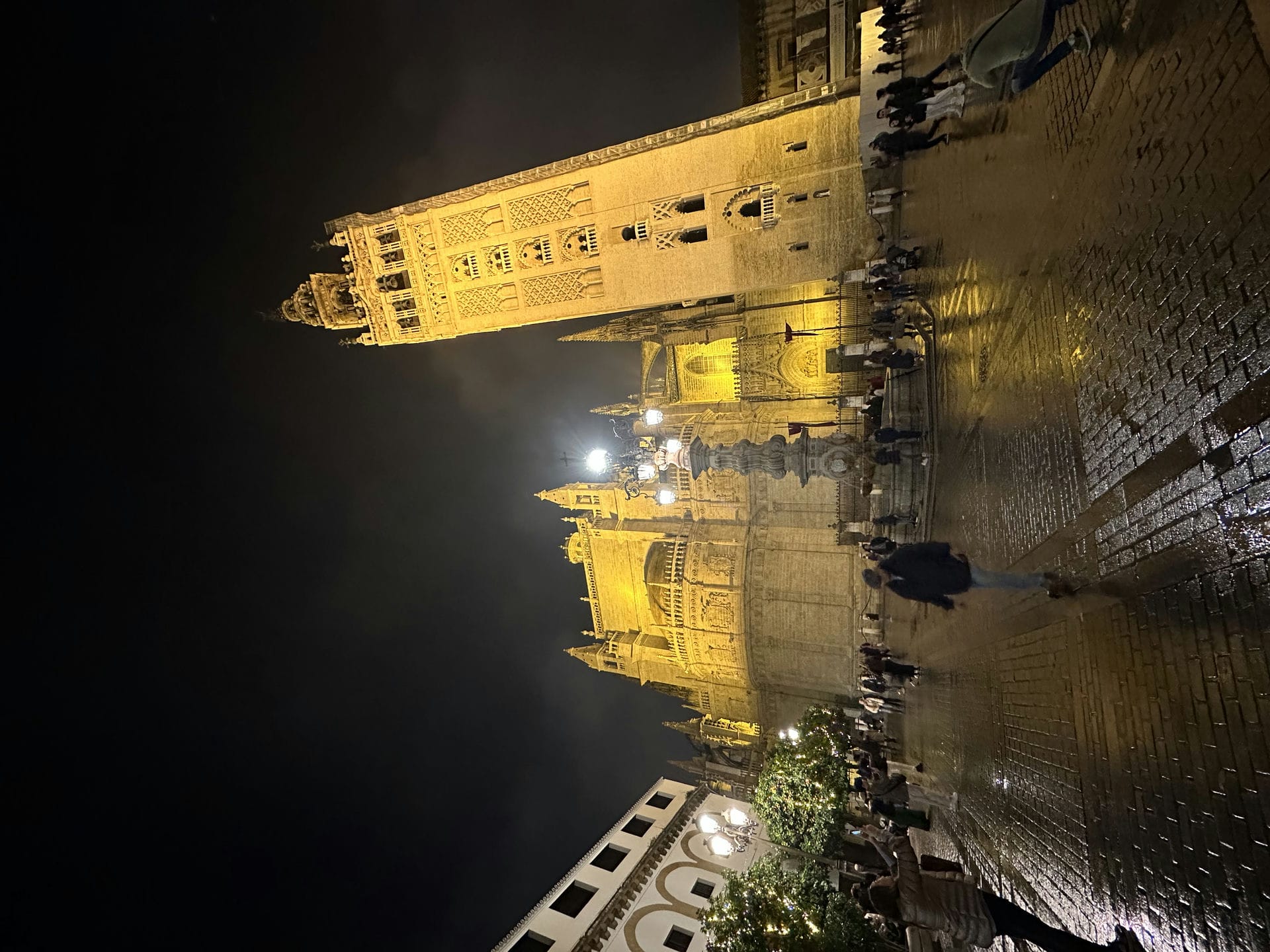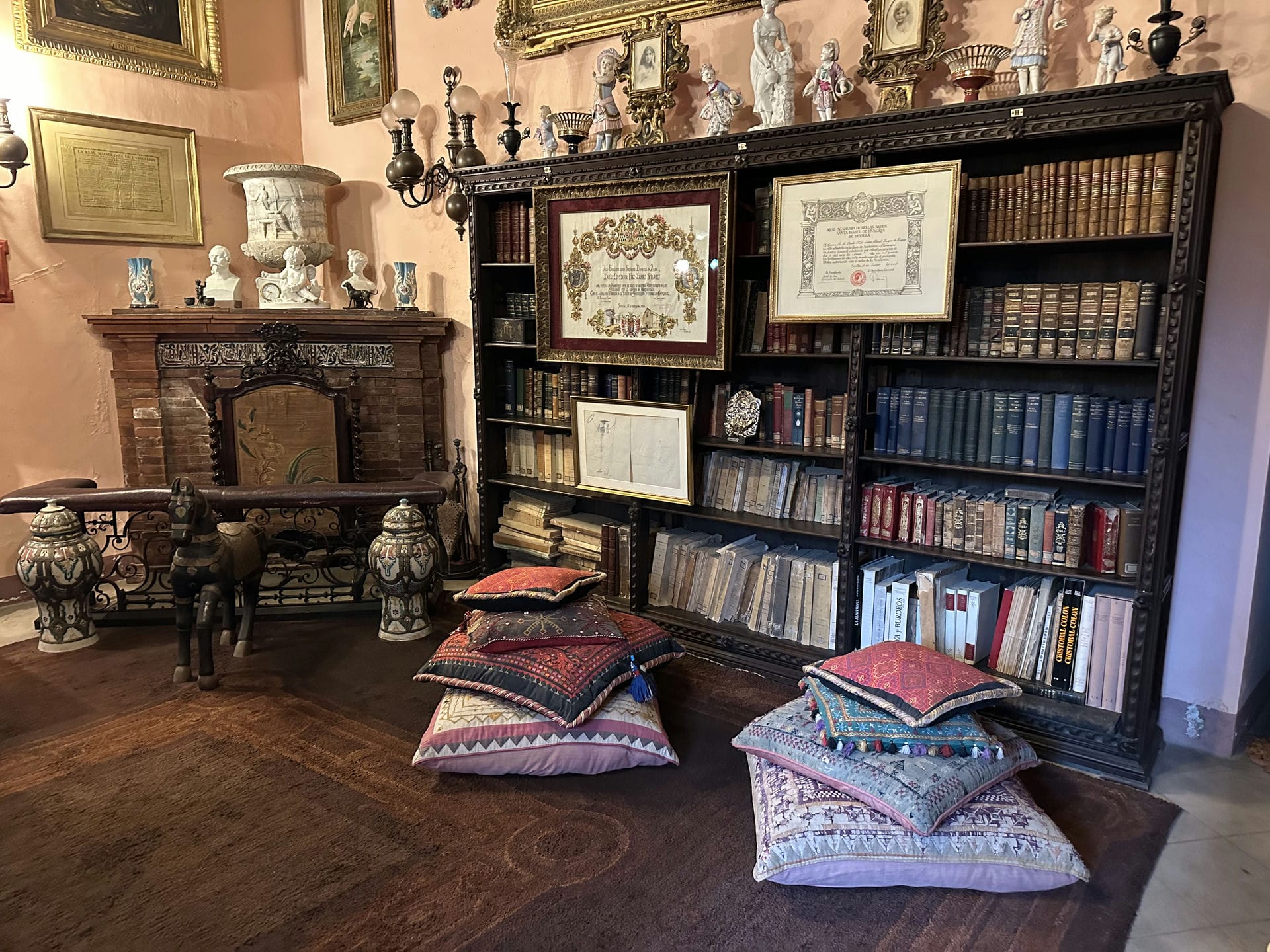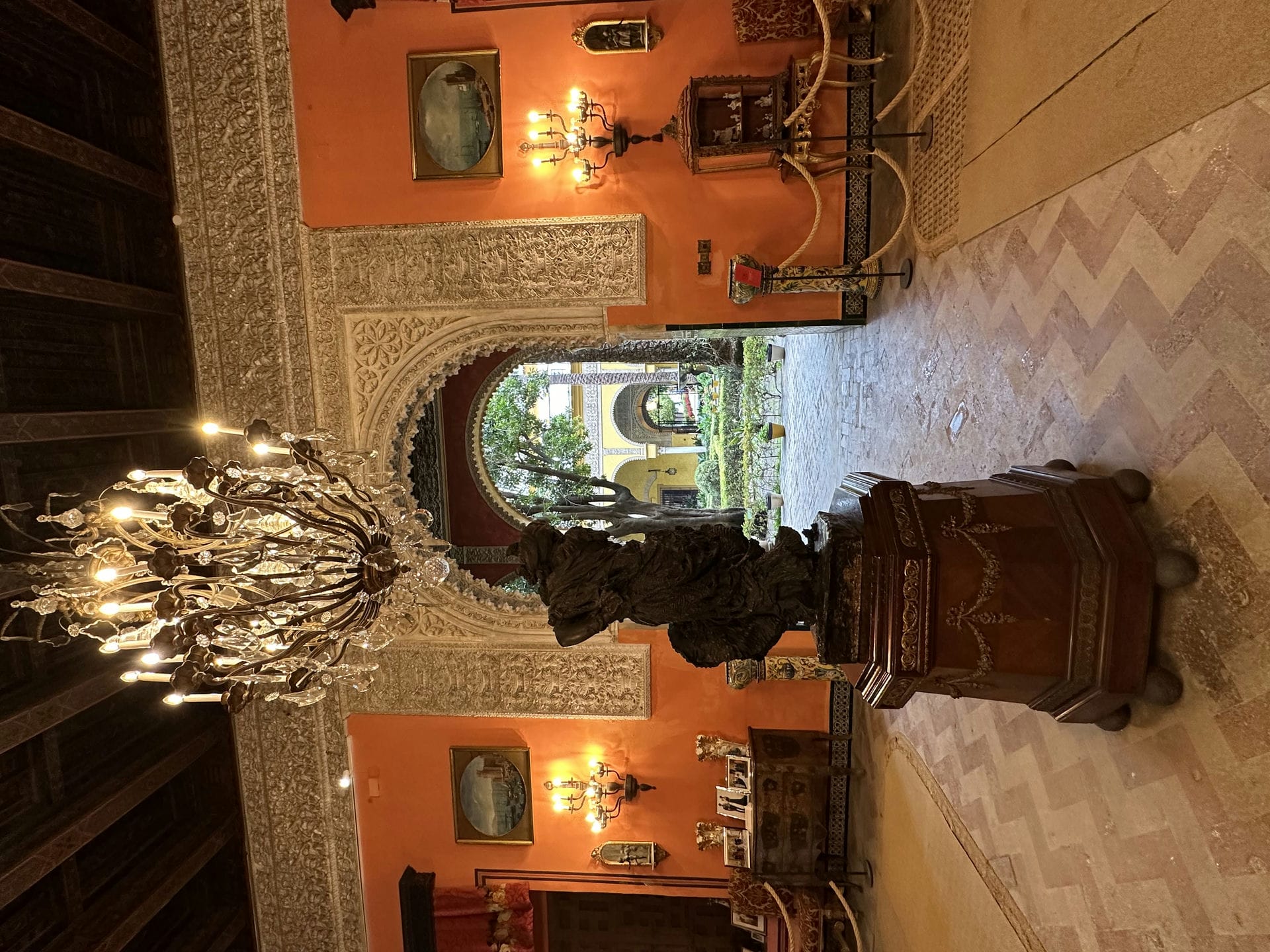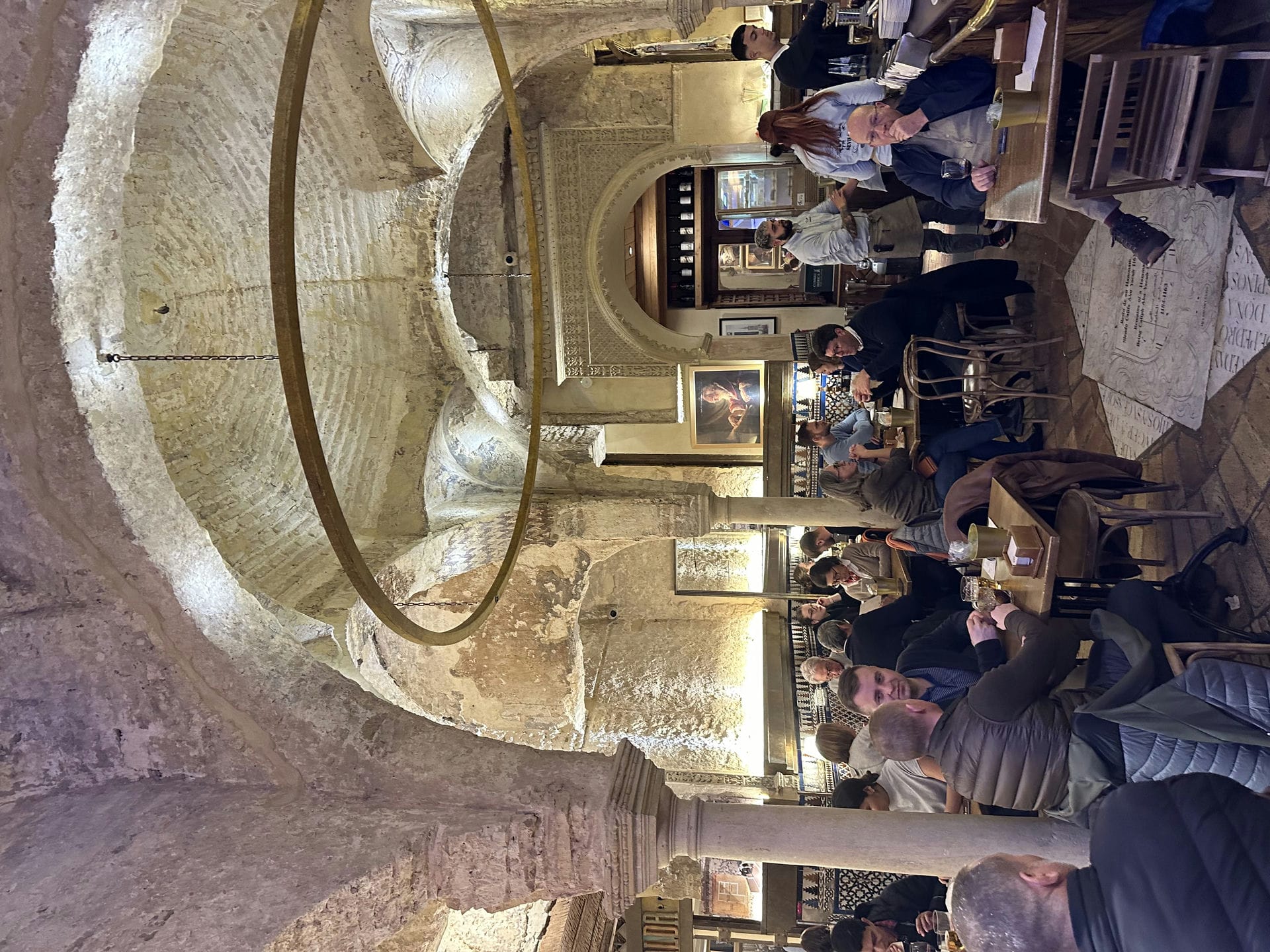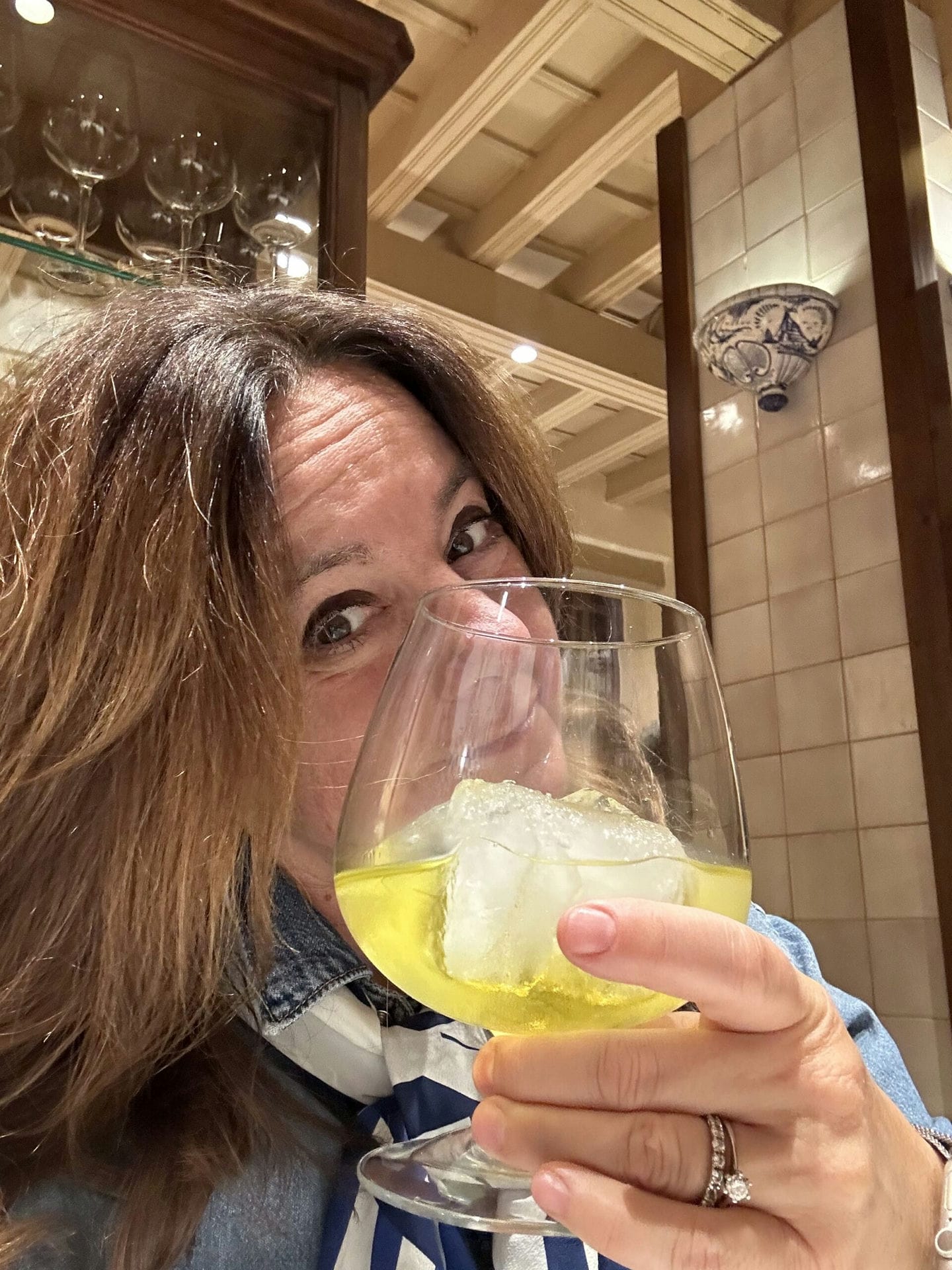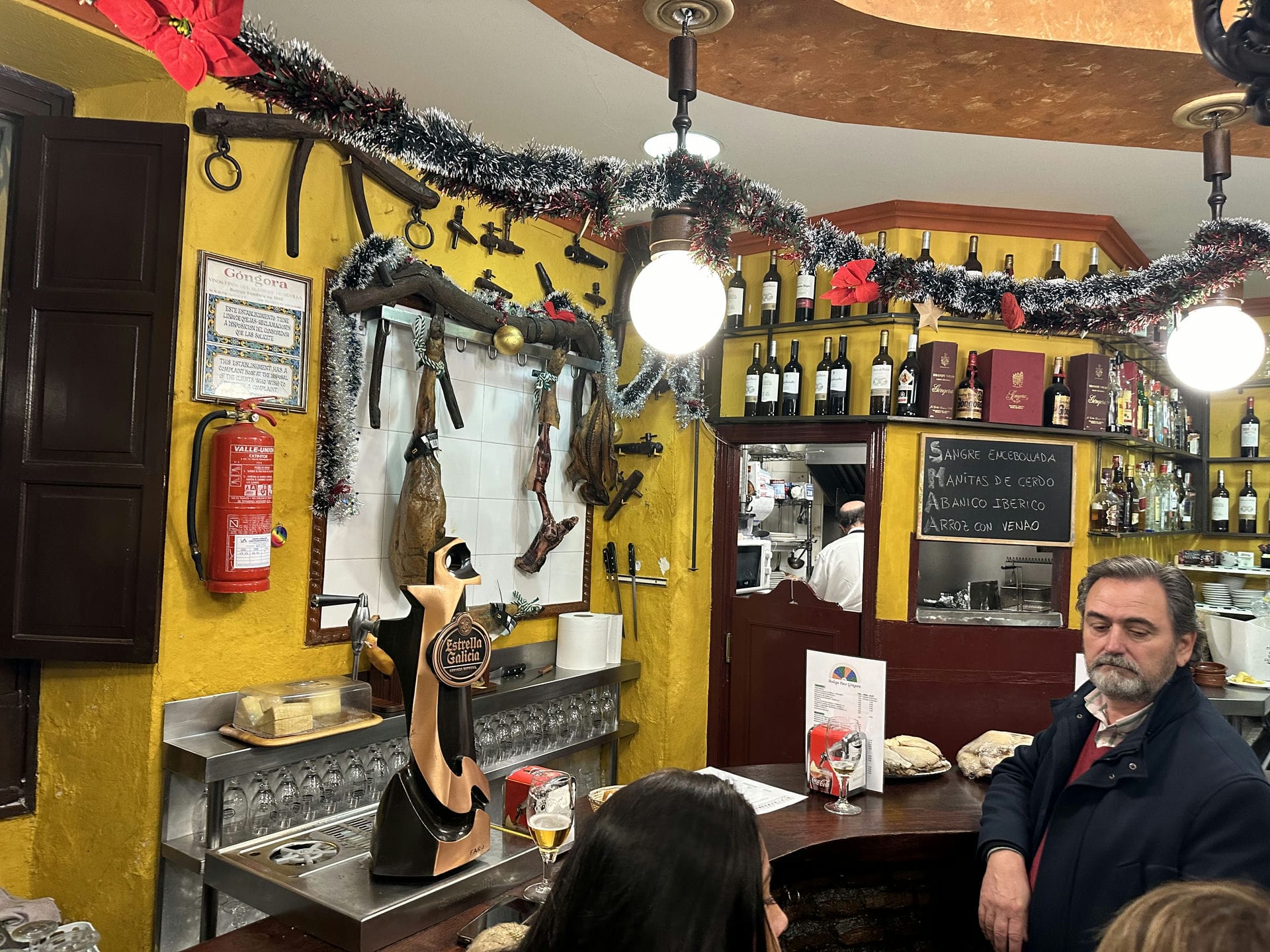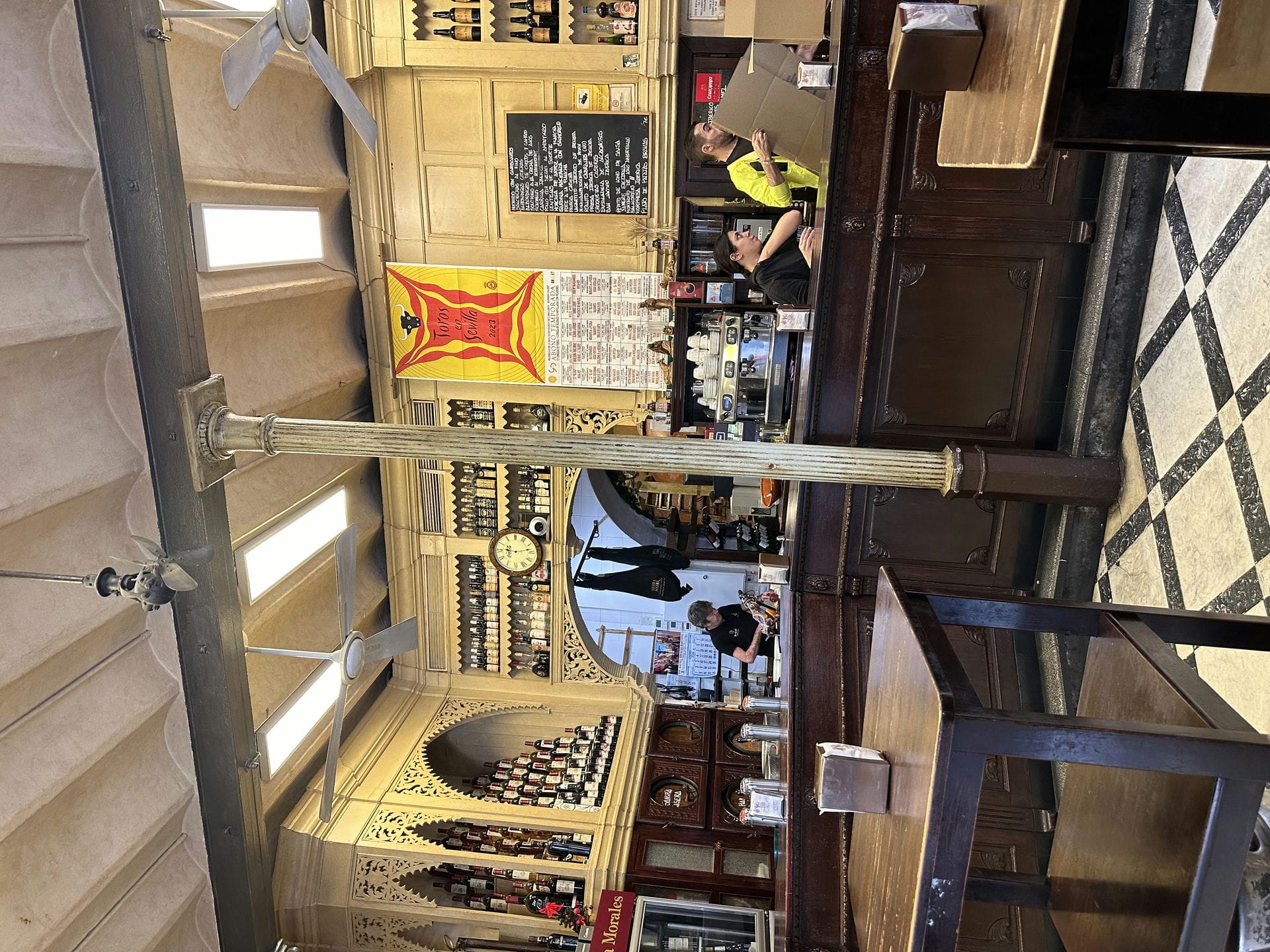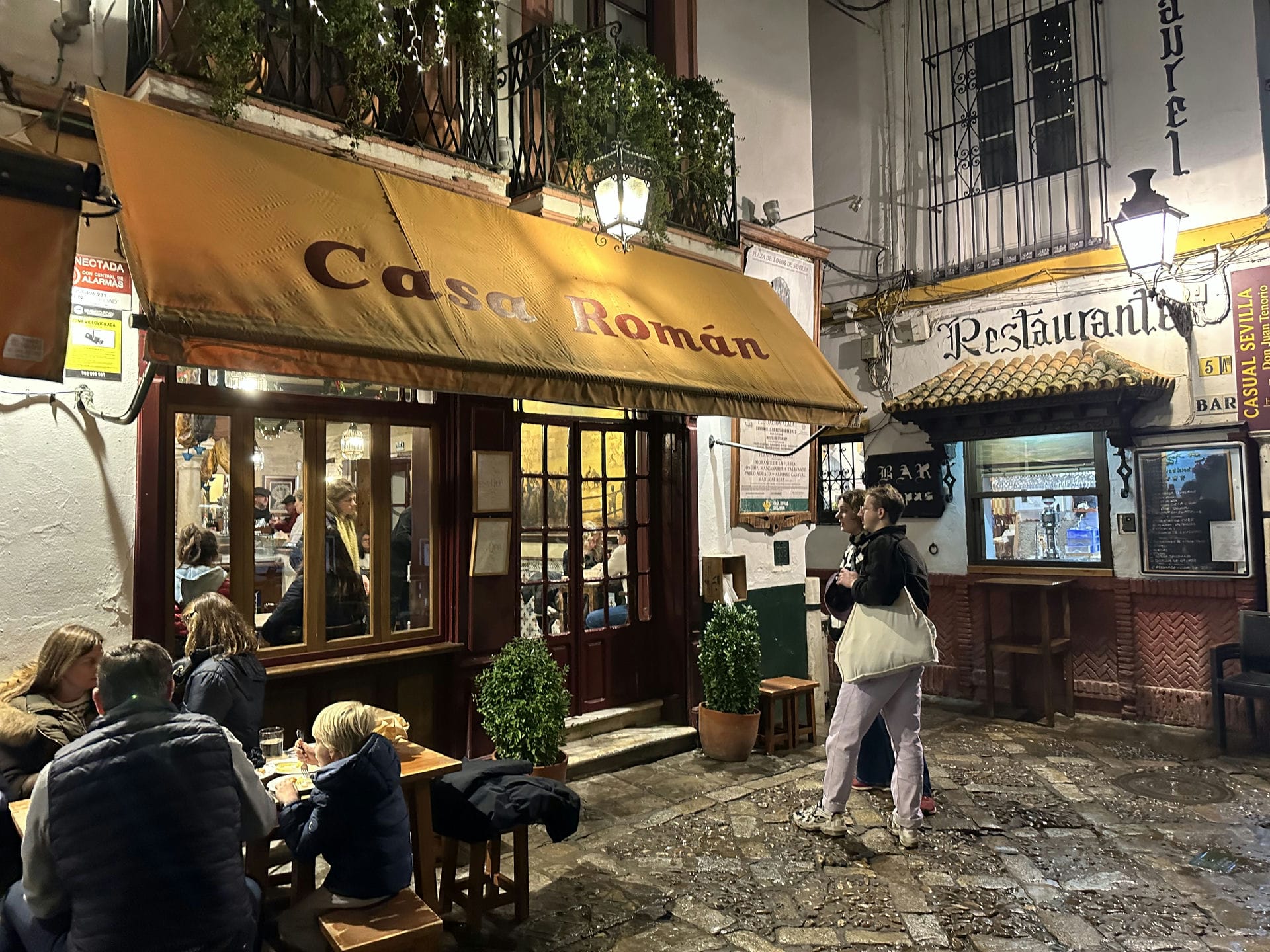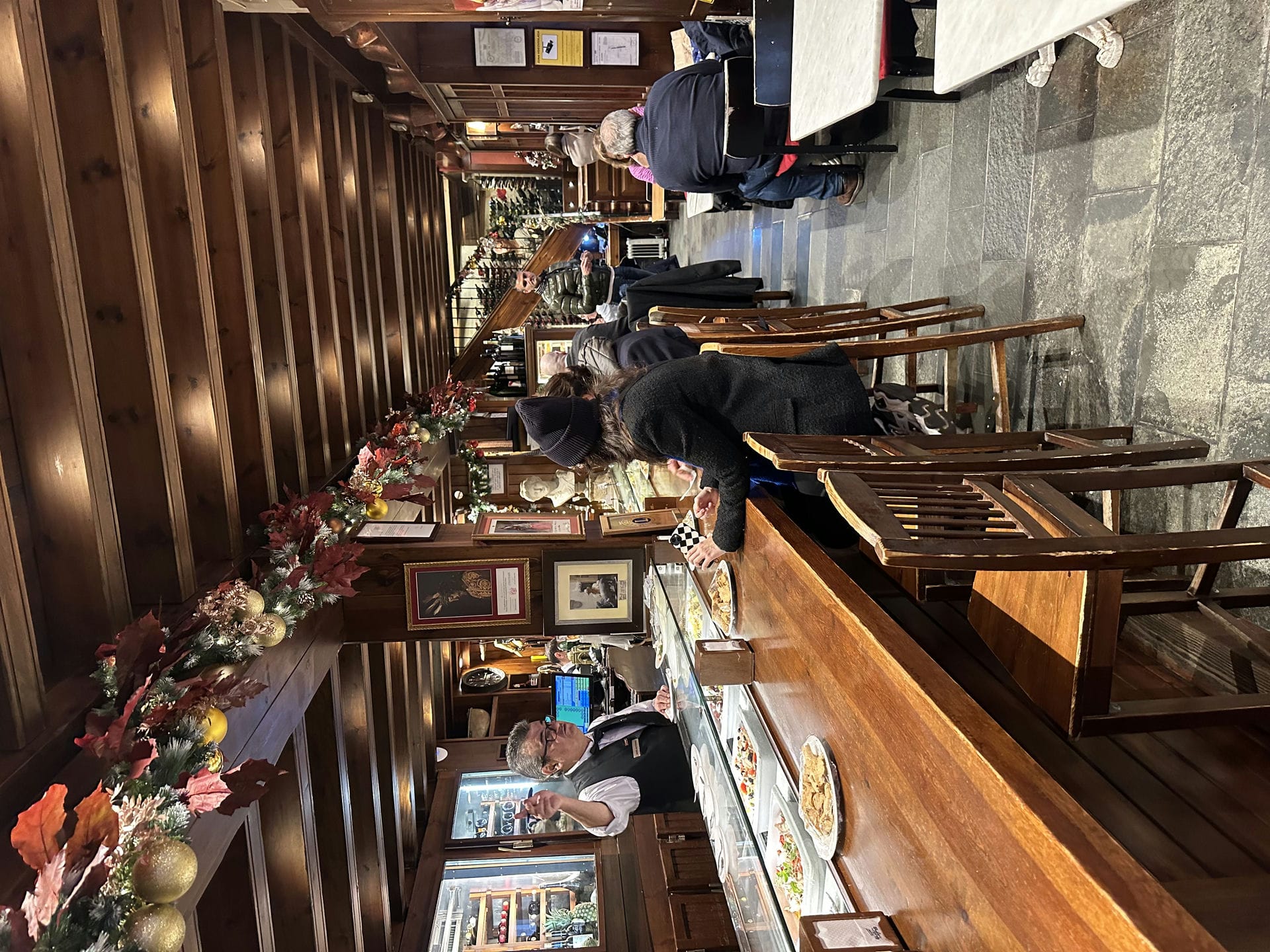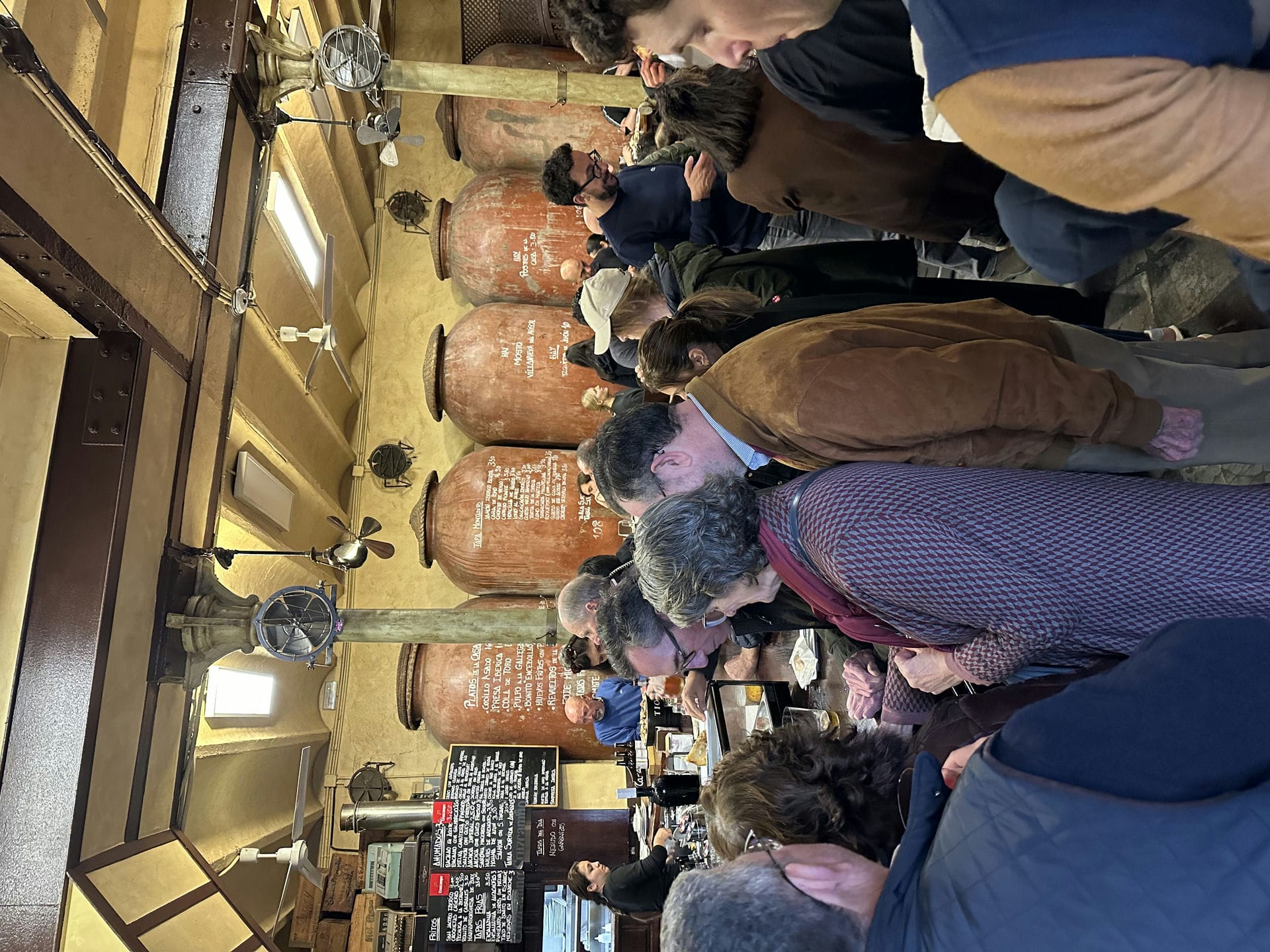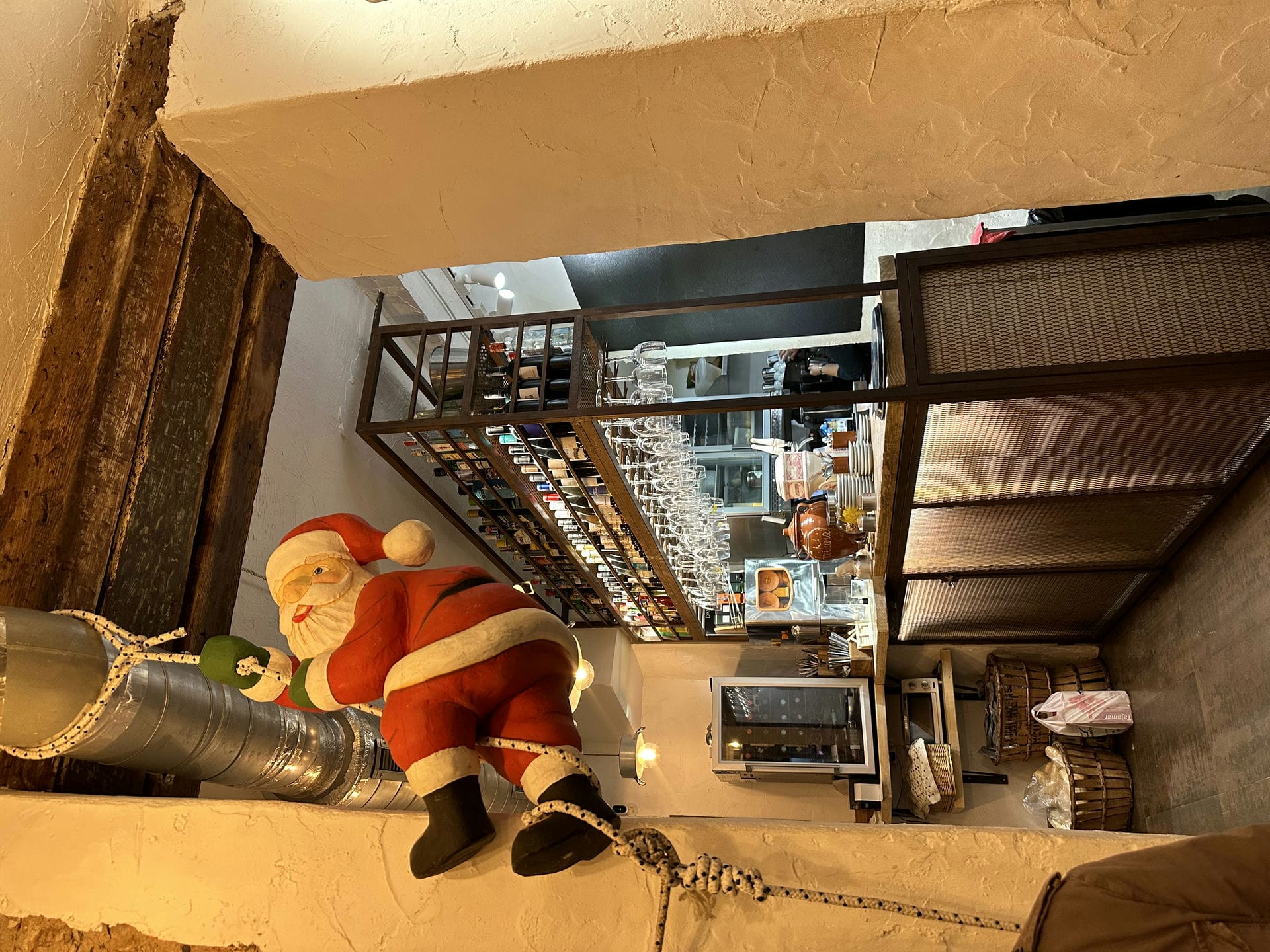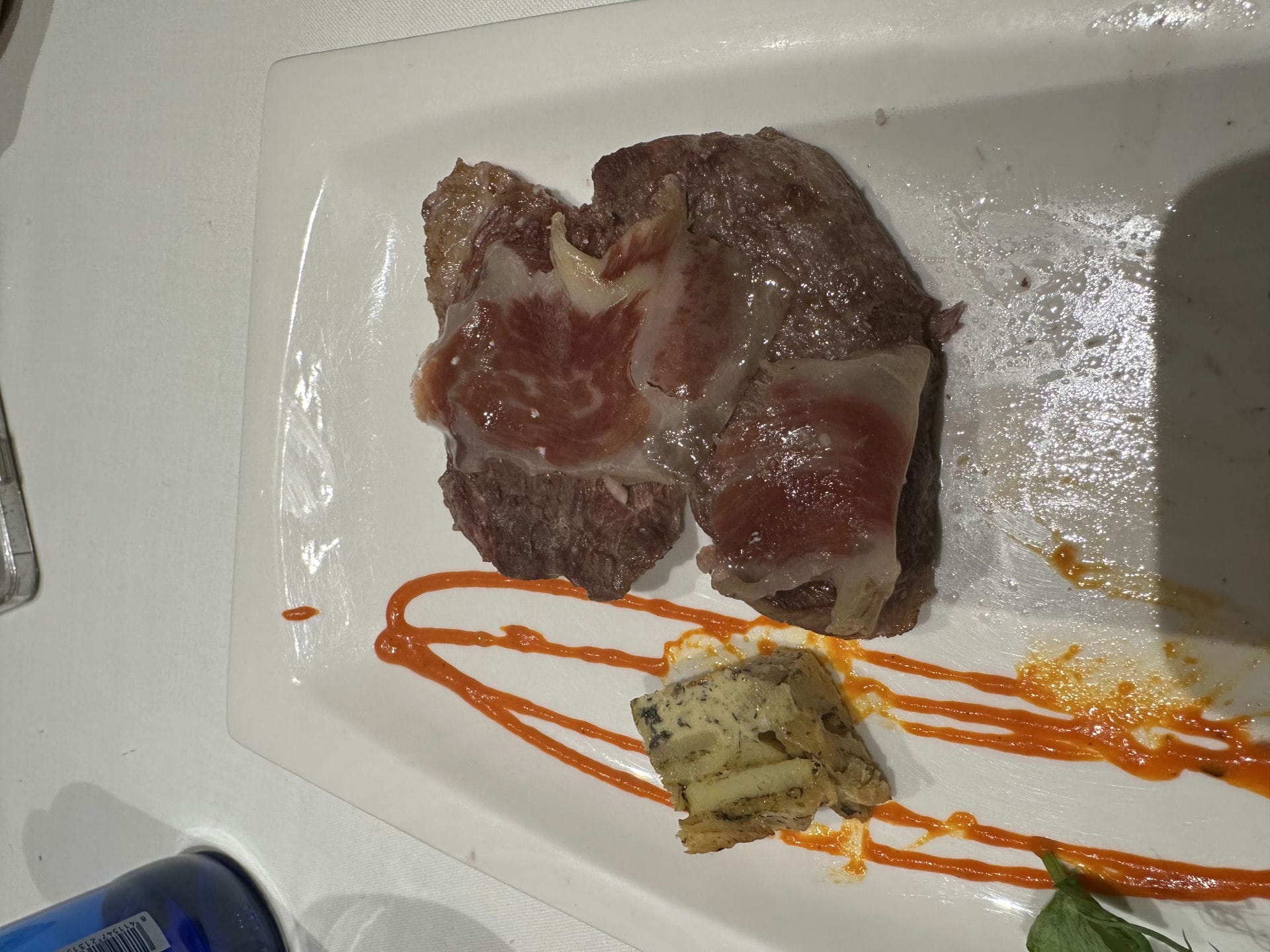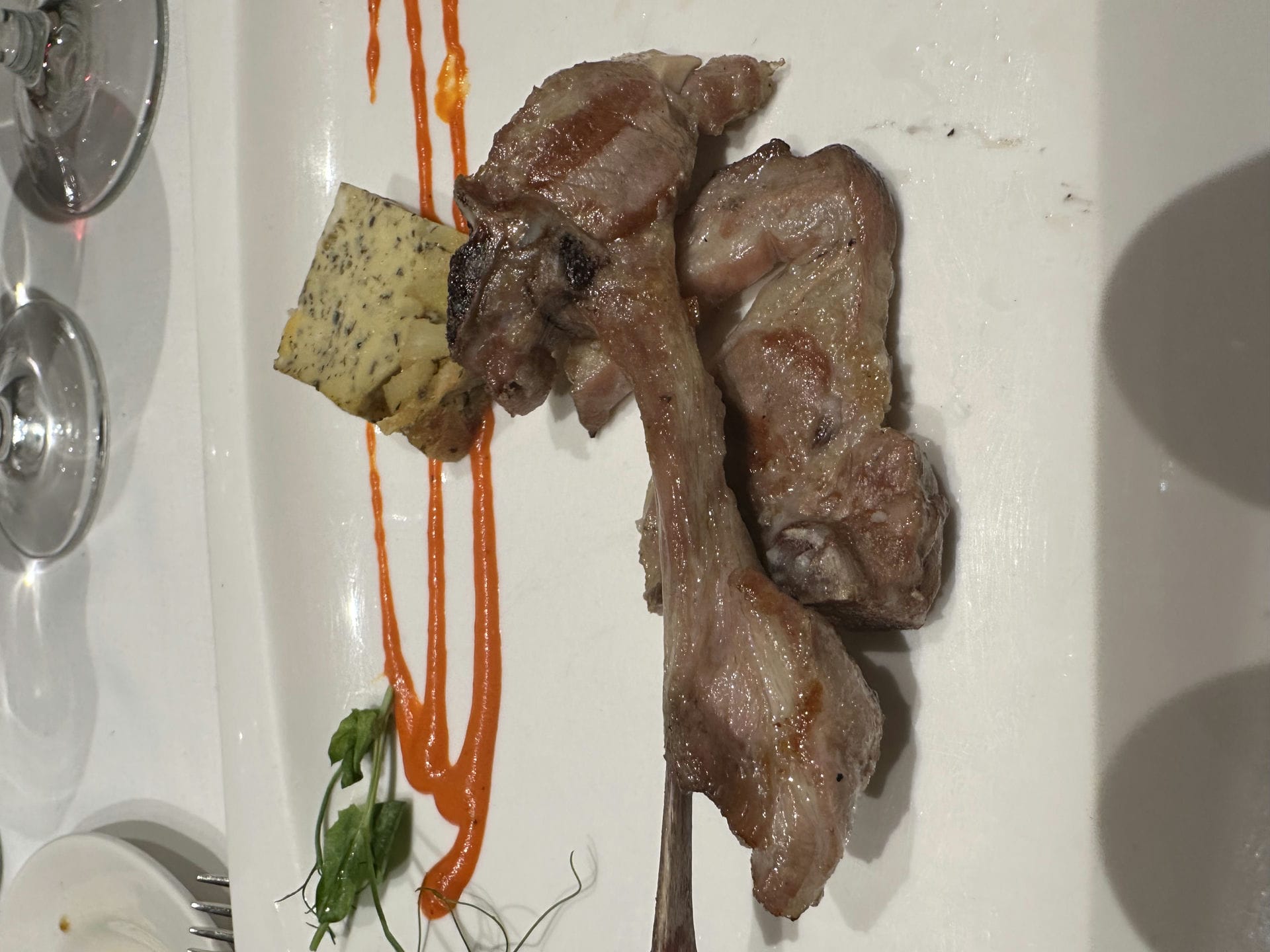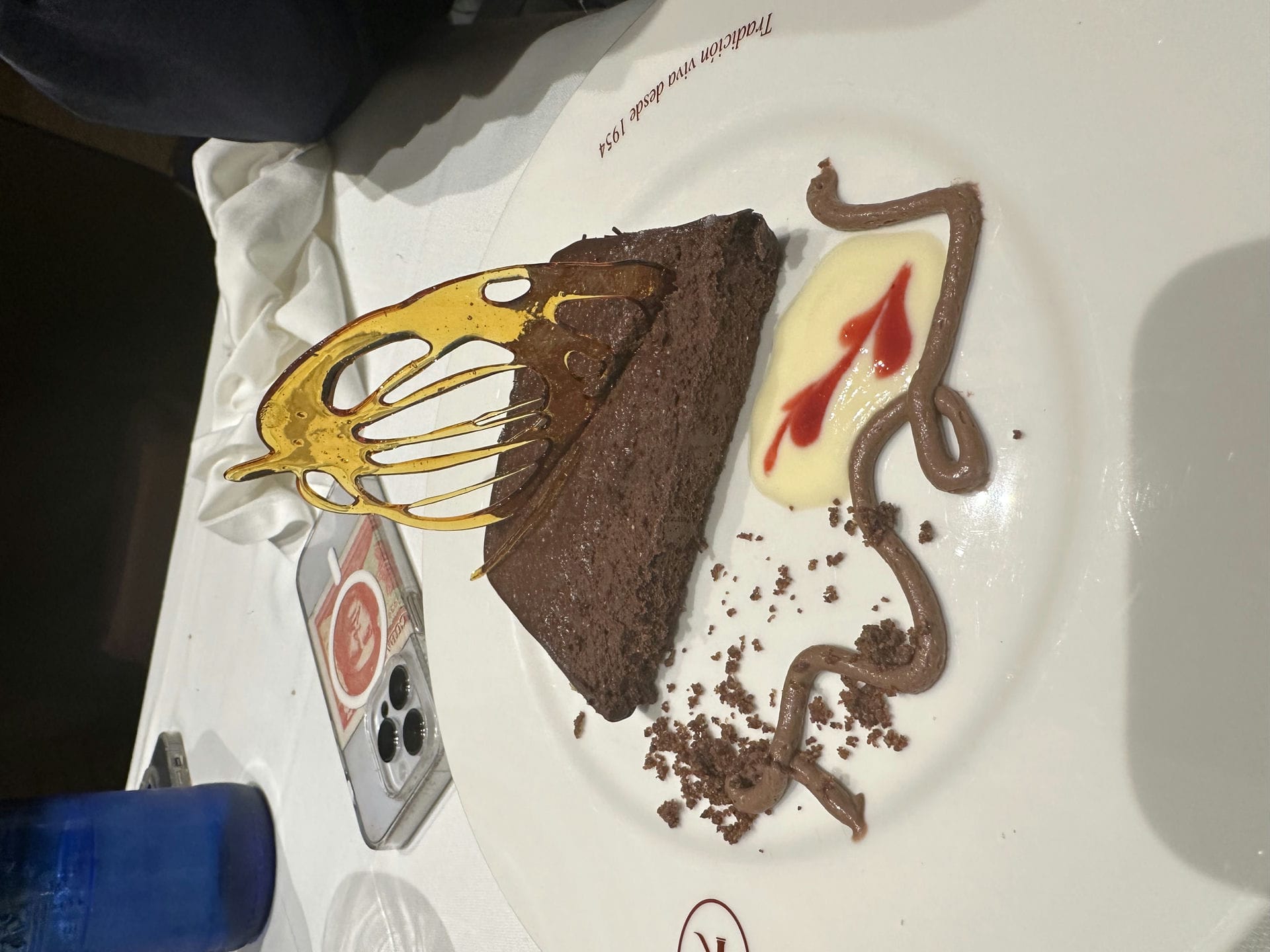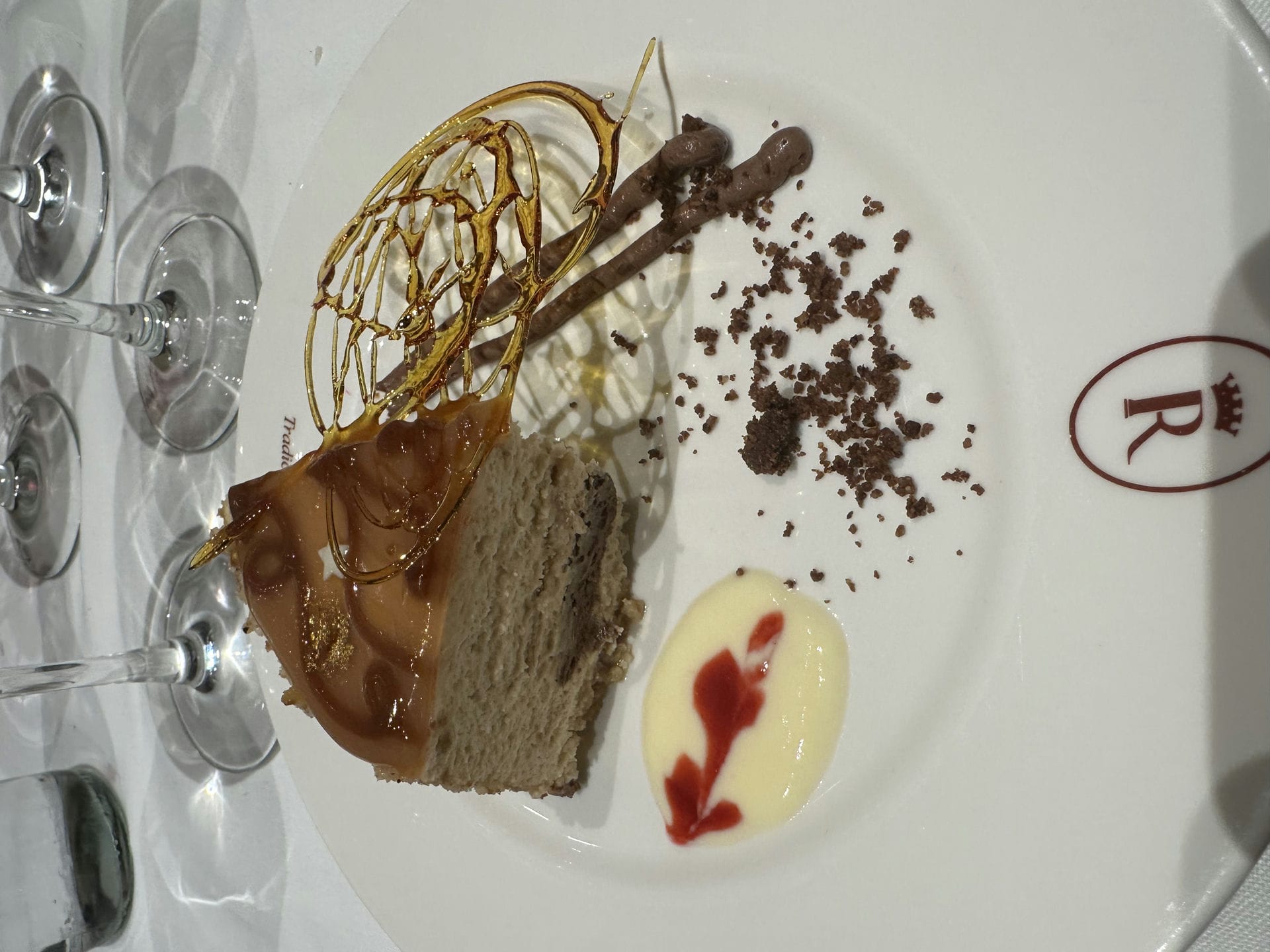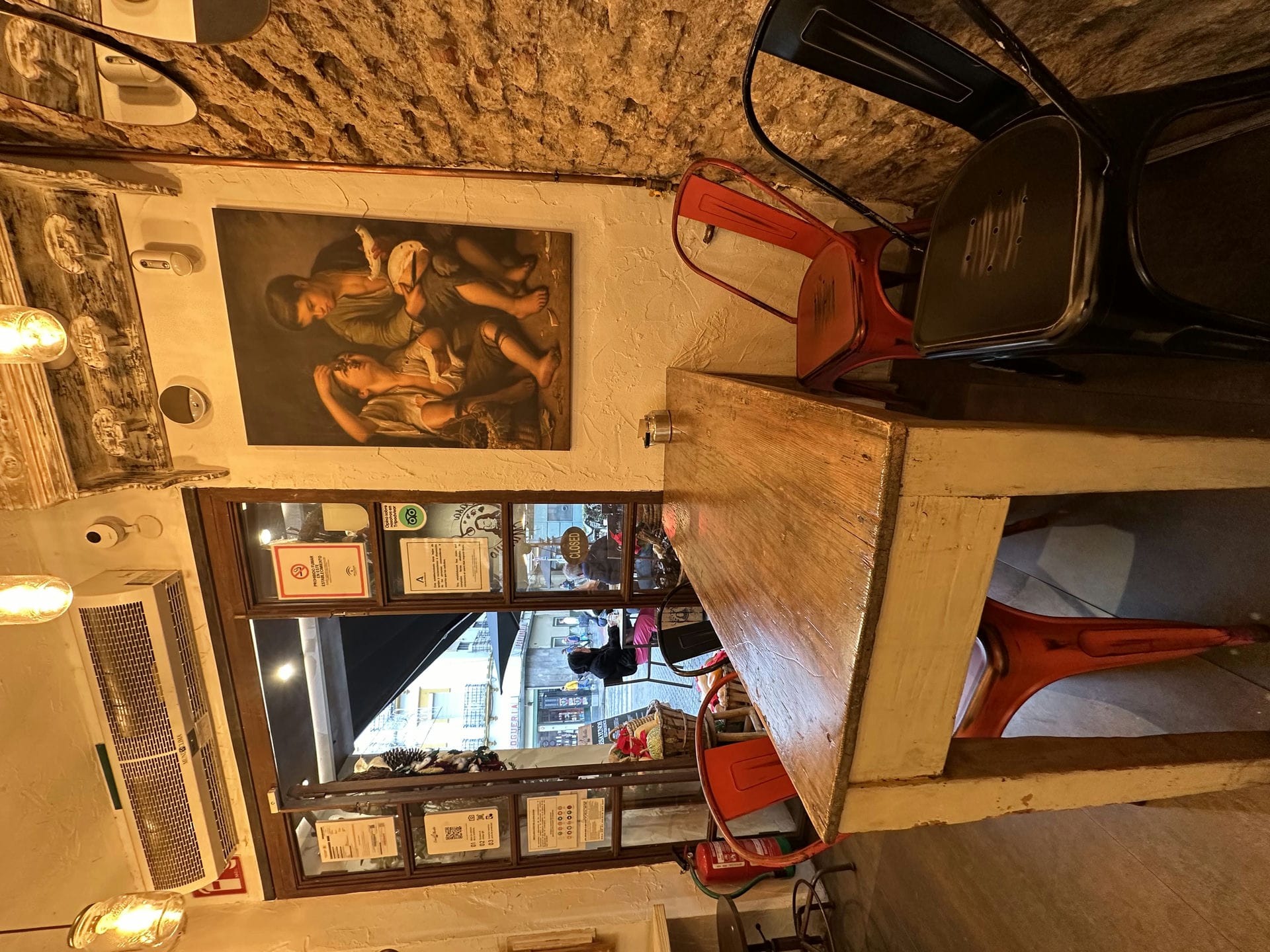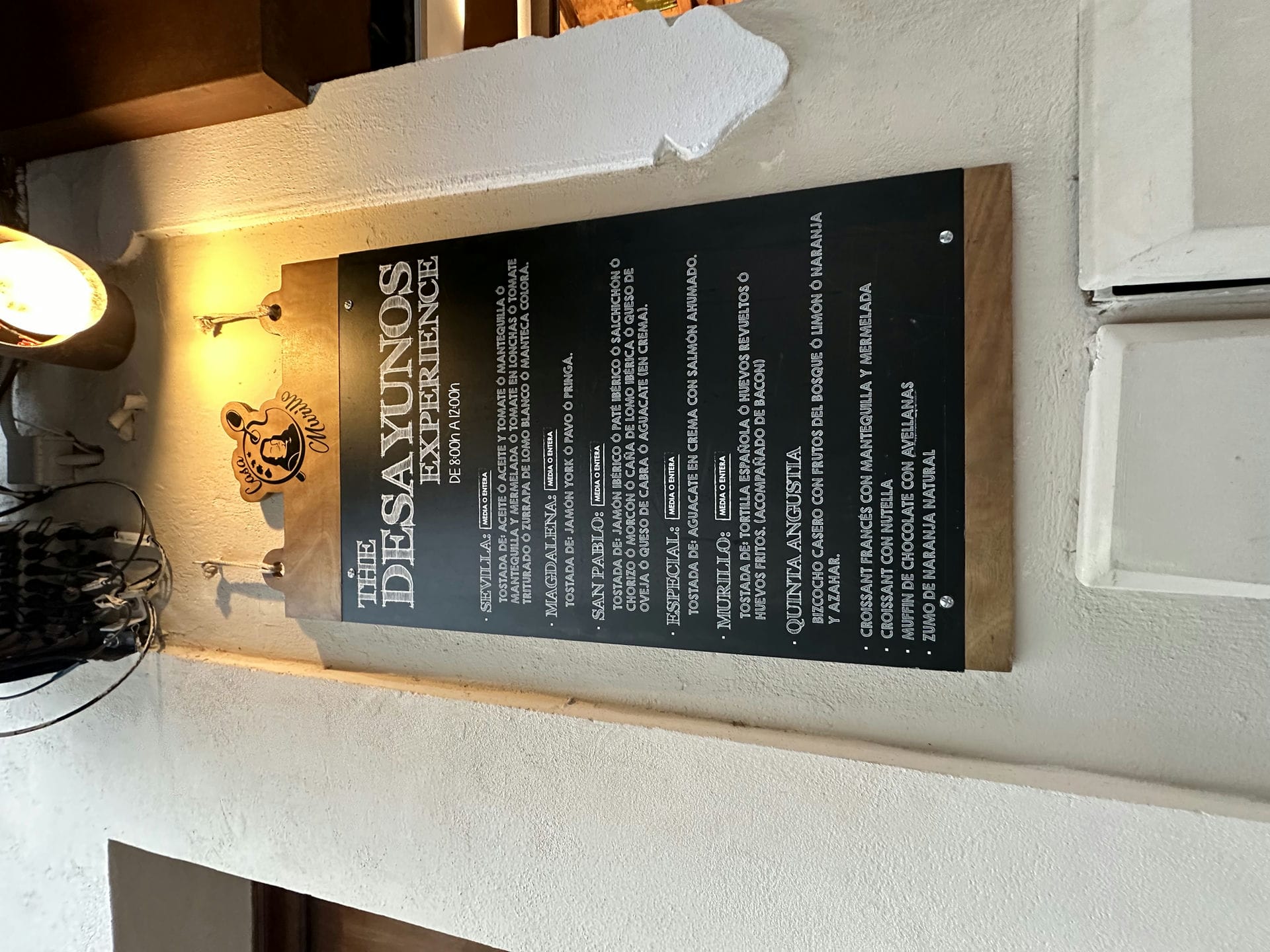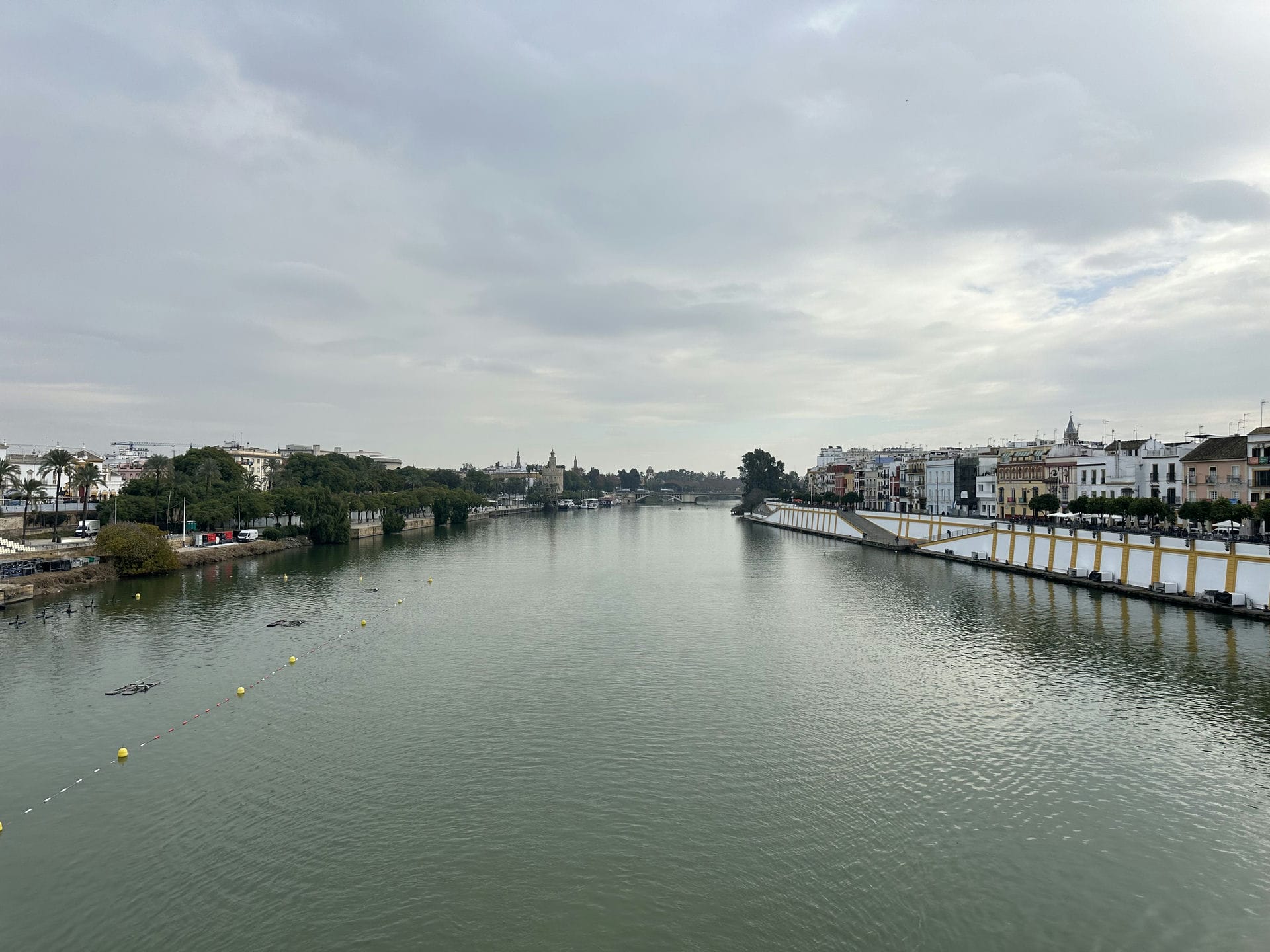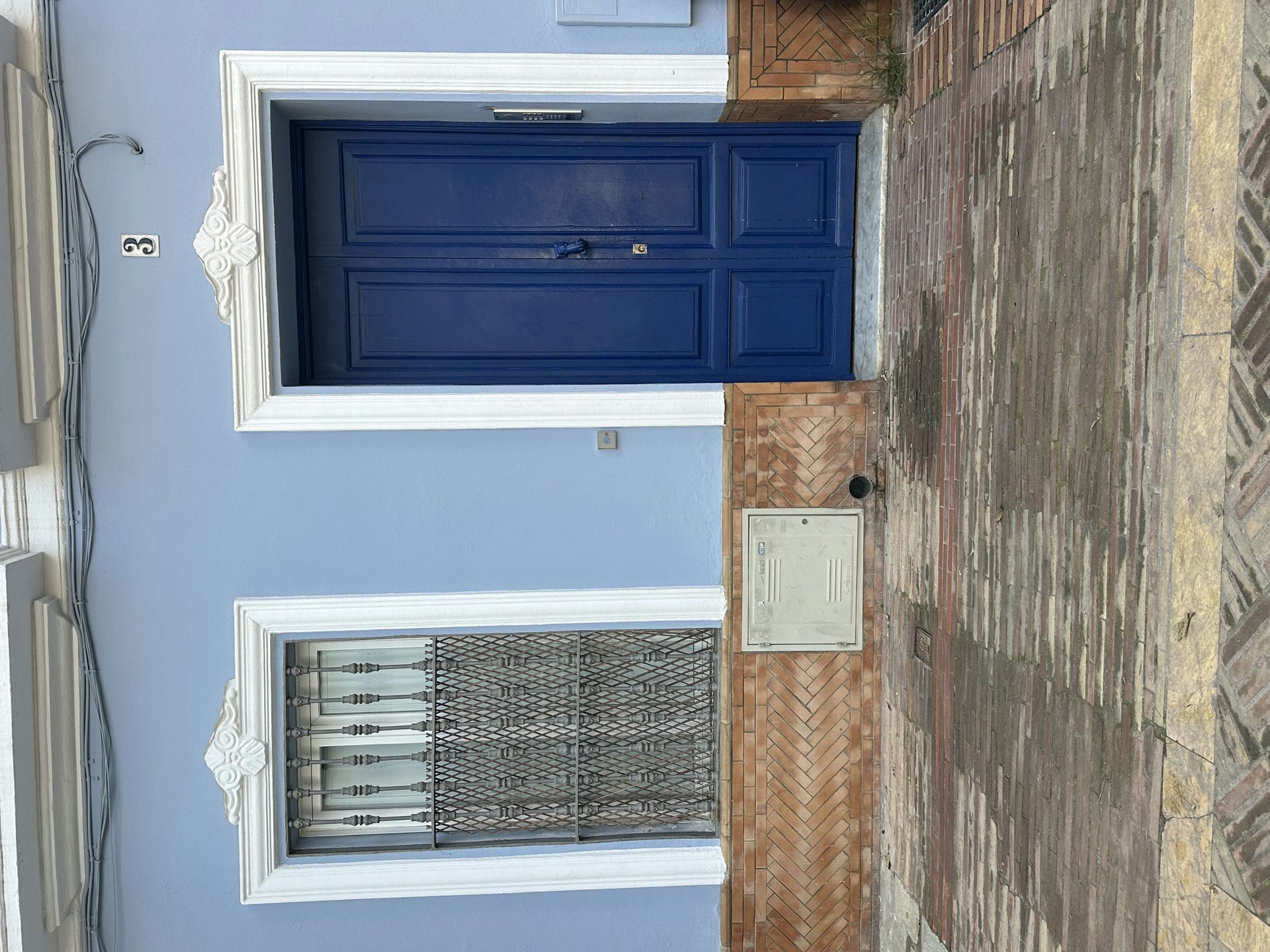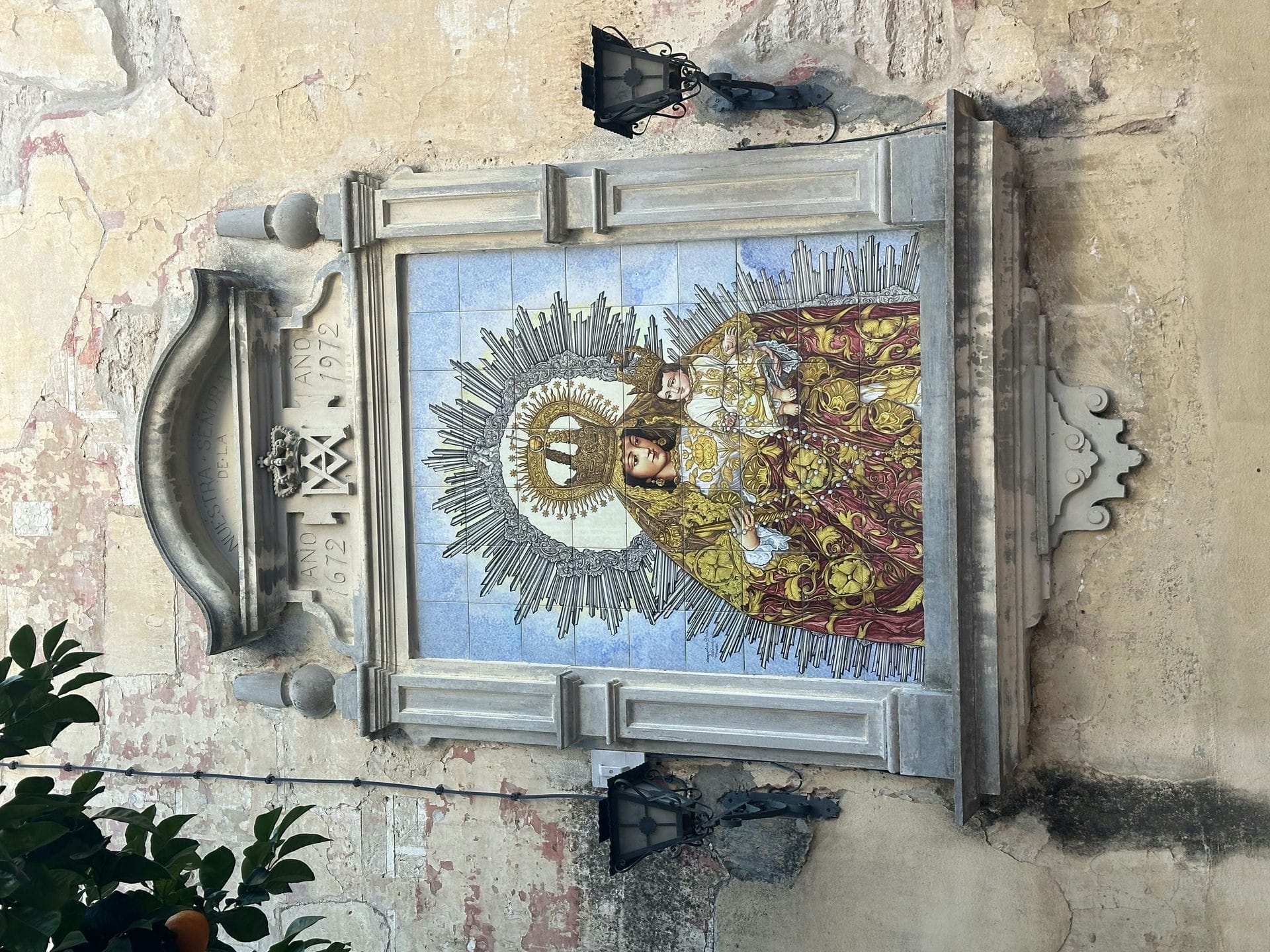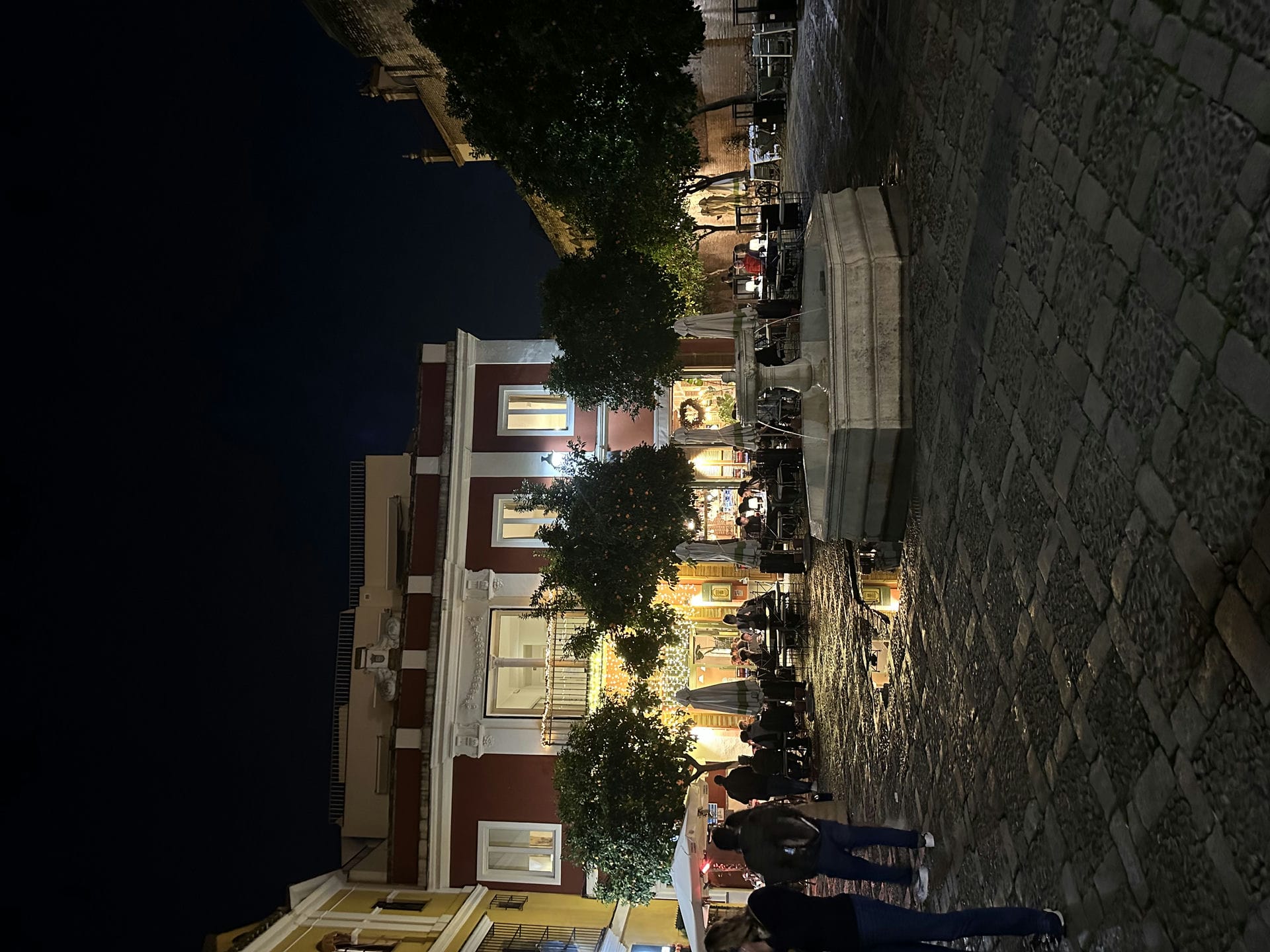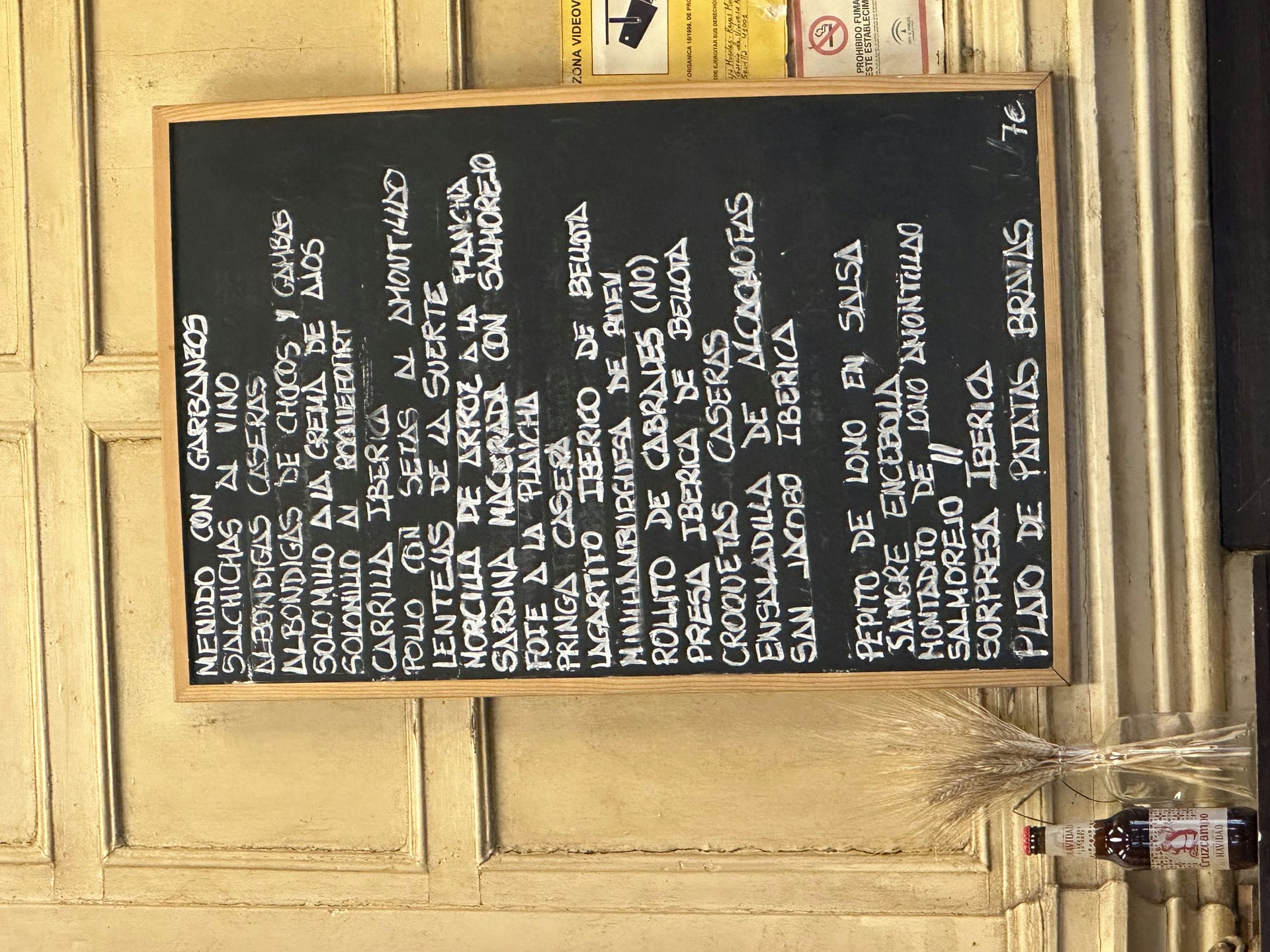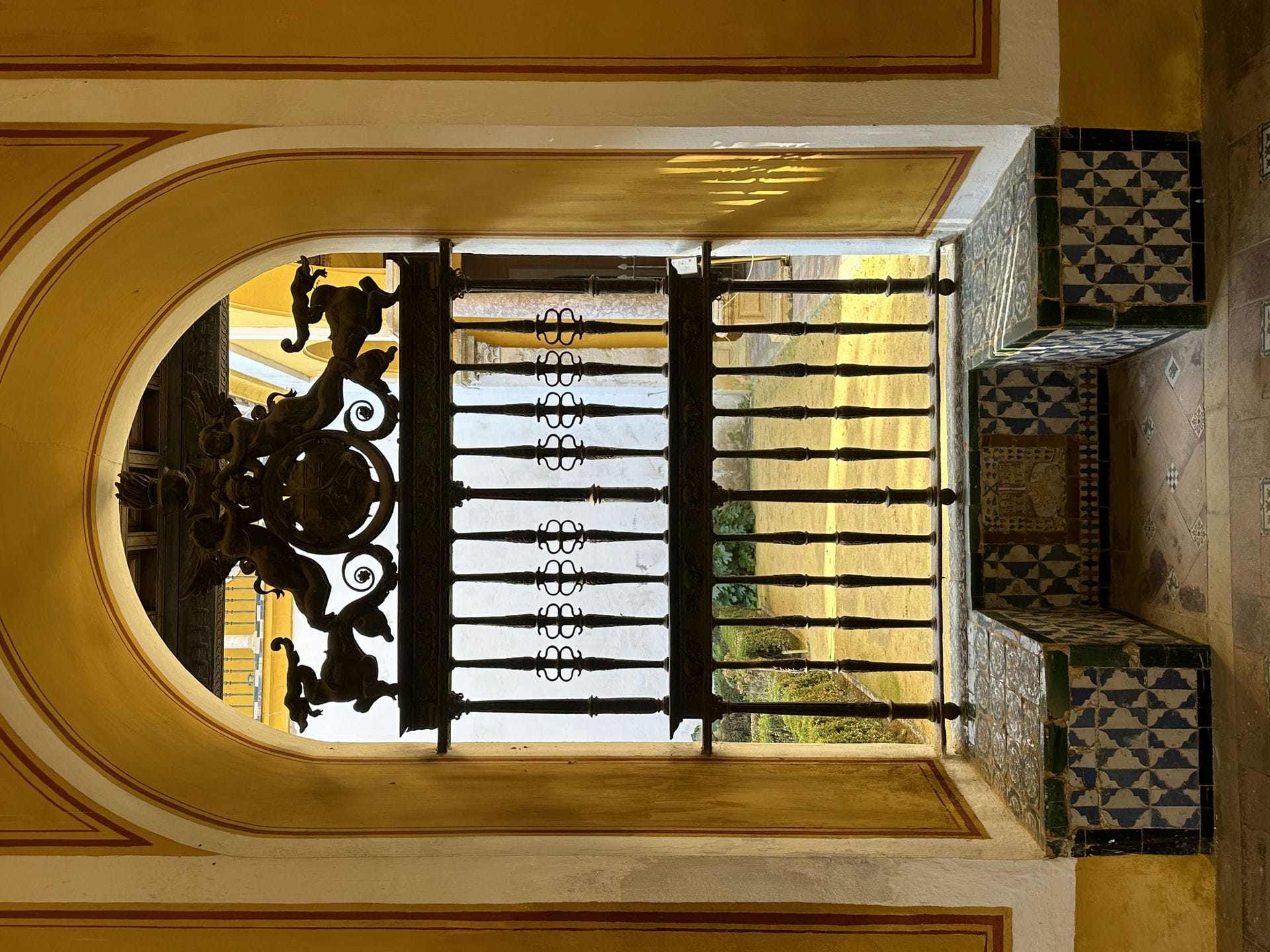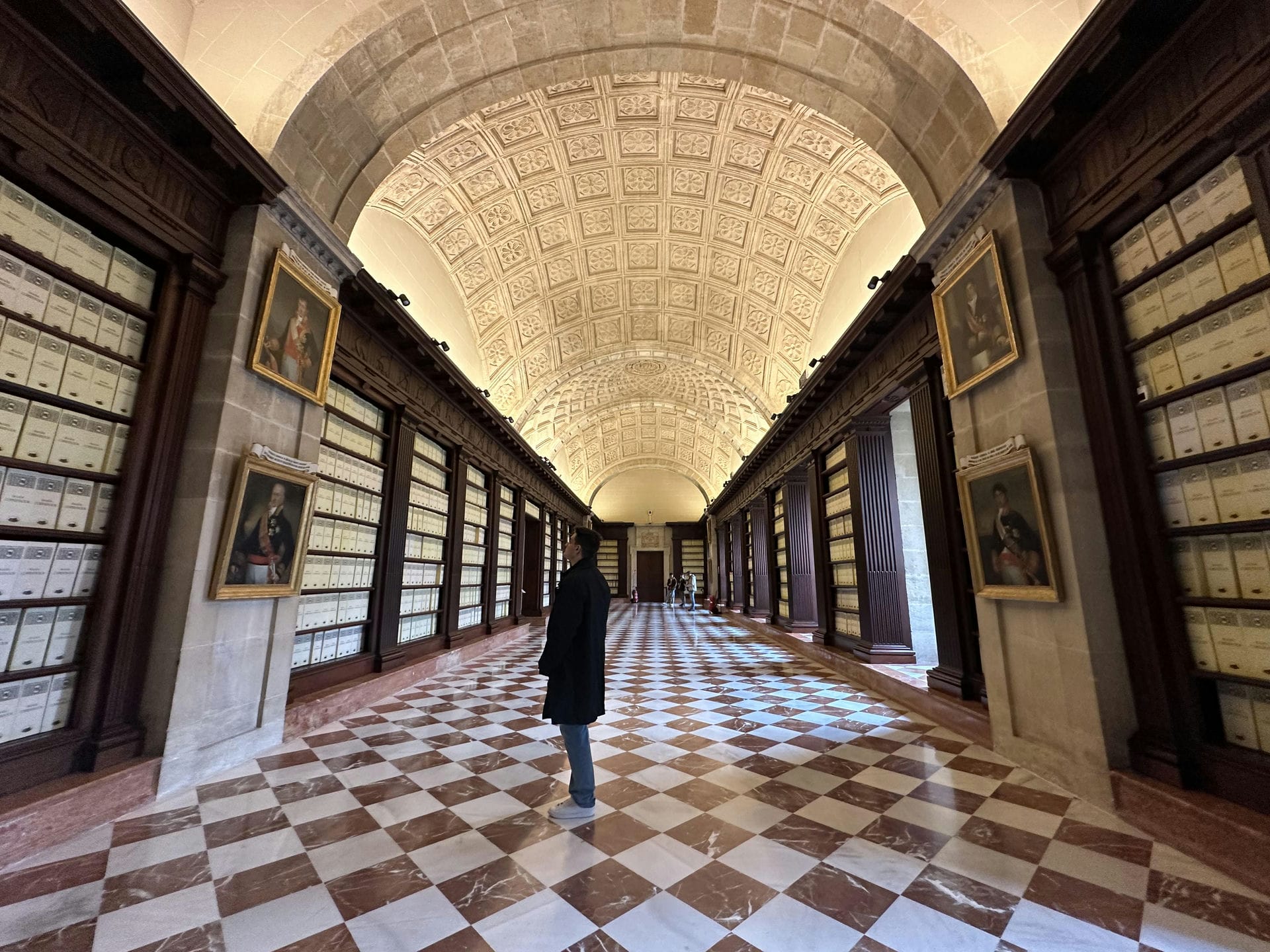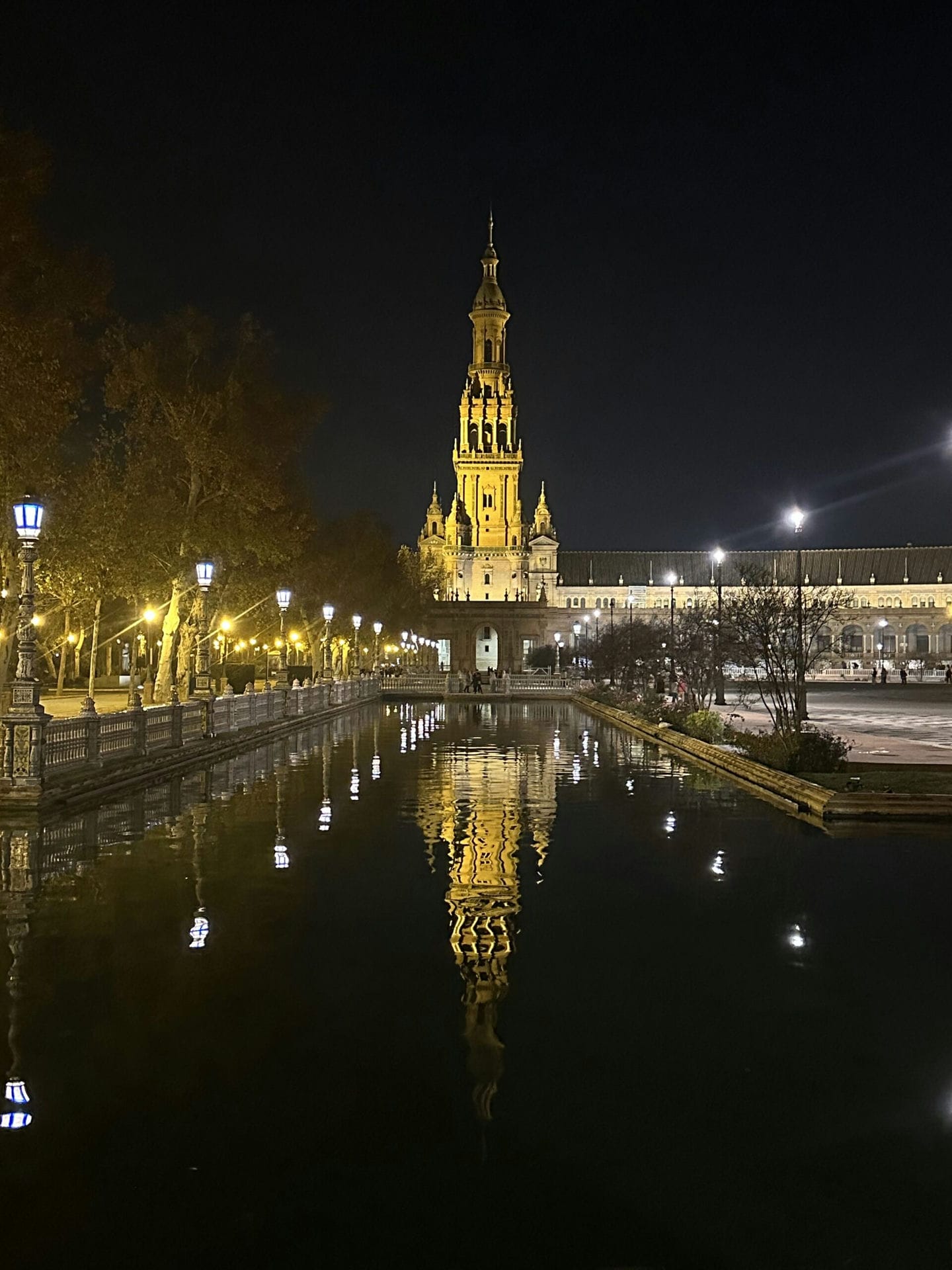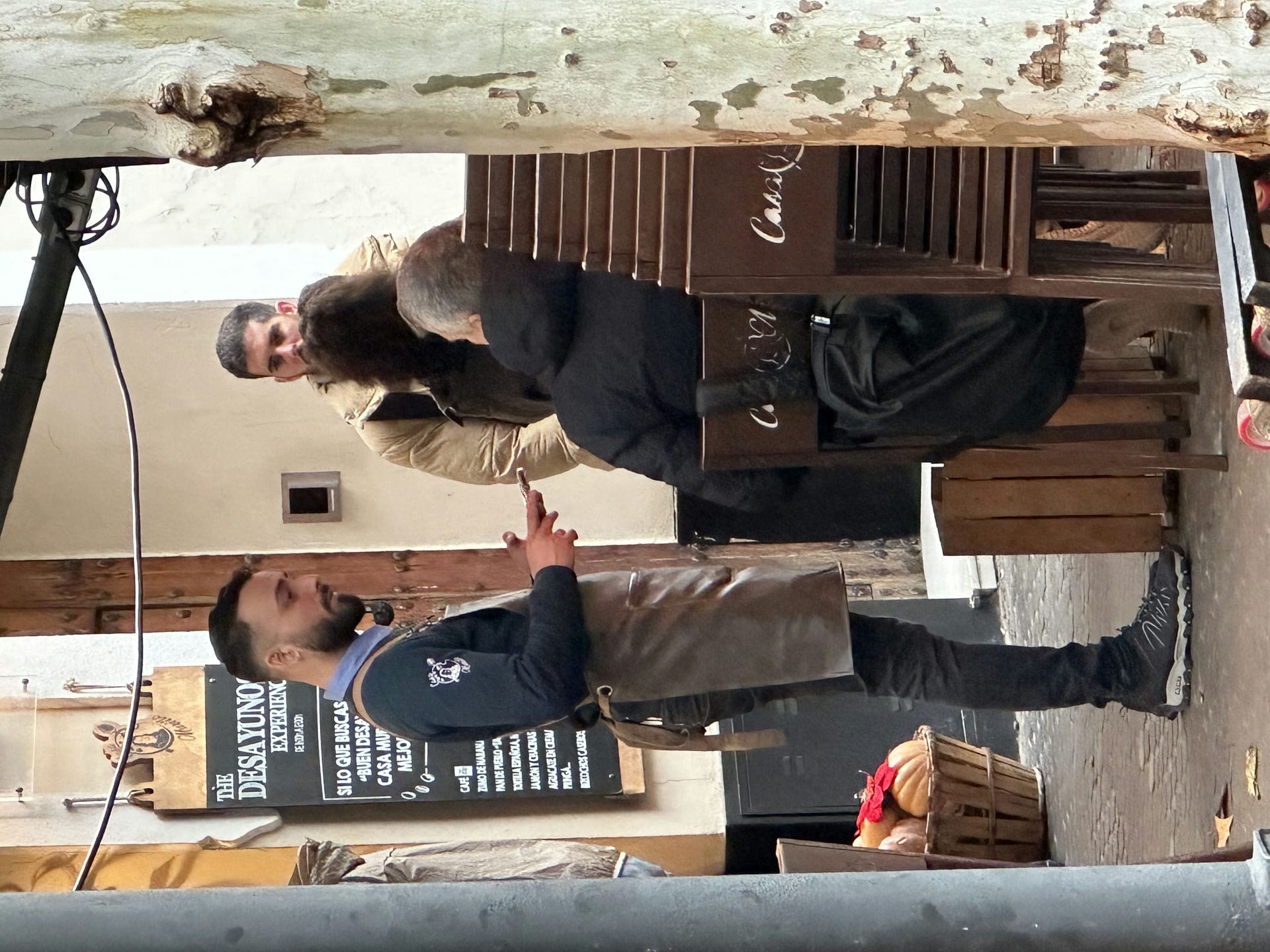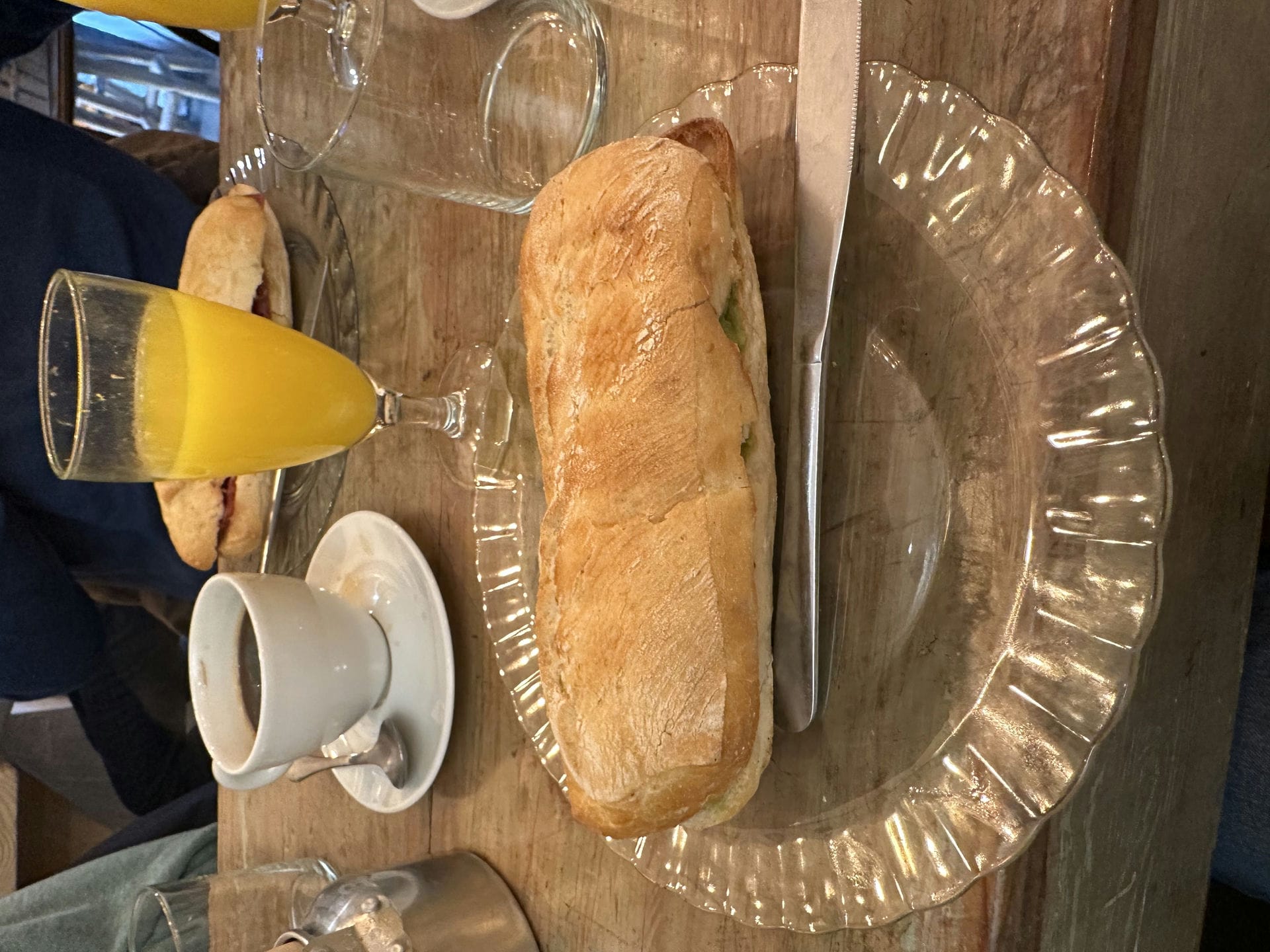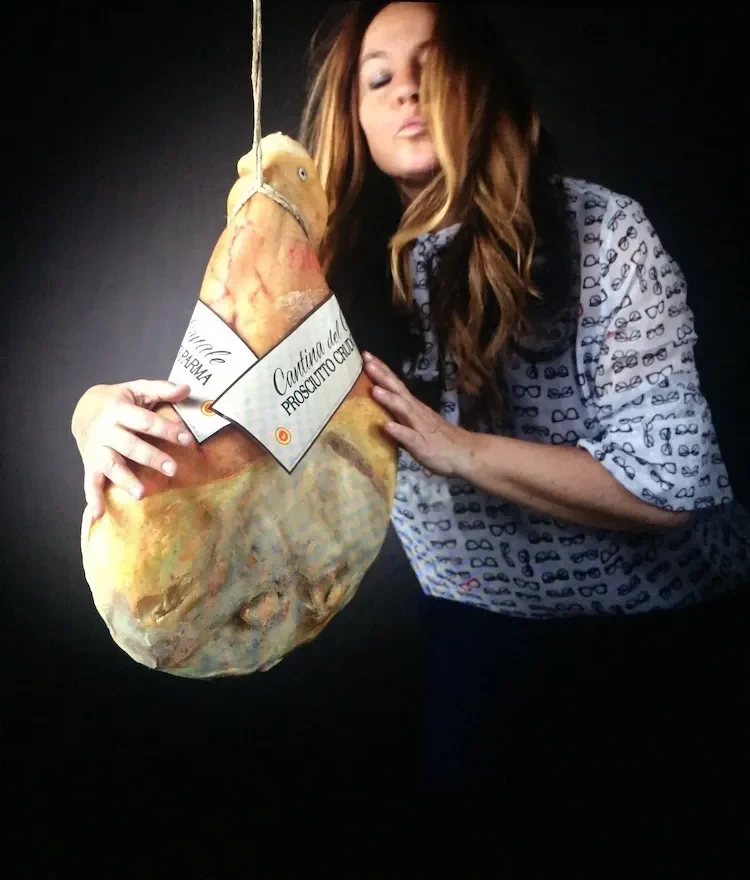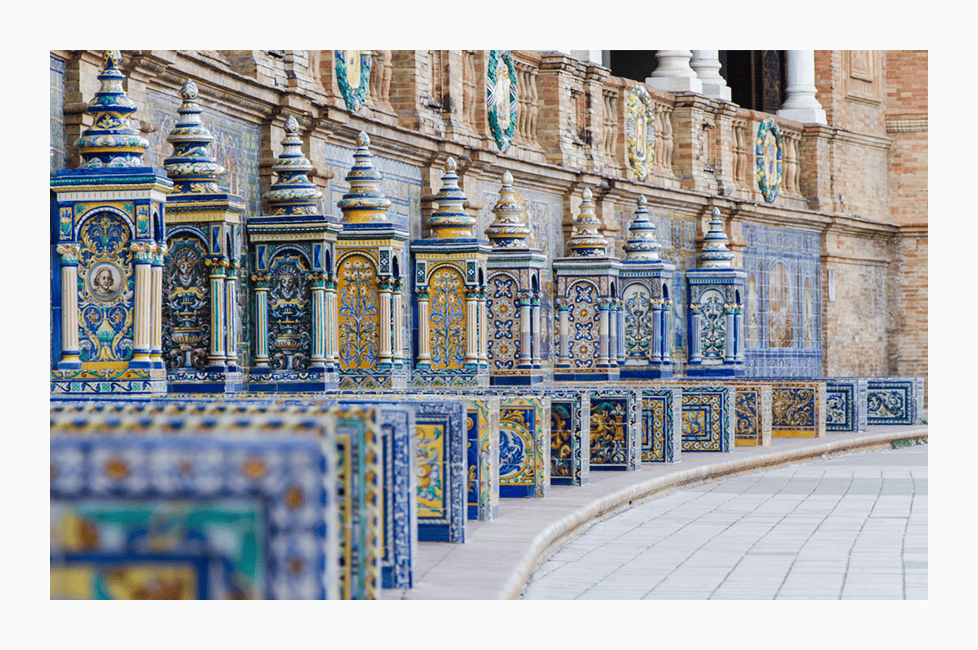
There is no rhyme more apt than that between Sevilla and maravilla.
The capital of Andalusia is a little gem that amazes from the first encounter.
The elegant architecture, the vibrant color of the majolica tiles, the lush greenery of the many parks and gardens, as well as a vast and tasty culinary offer, make it a perfect destination even for a short vacation.
When to go to Seville?
In my experience, the best time to visit Seville is from October through May. Even in the generally colder months the temperature is never harsh, you need to beware of the temperature excursion, which makes a light quilted jacket and a wool sweater useful until mid-morning and in the evening, switching to just a t-shirt in the warmer hours. I recommend classic “onion” attire without neglecting that bars and restaurants also have outdoor seating in December and January.
If you want to add a touch of magic go there from mid-December to April, when the oranges are ripe: you will feel as if you are walking inside an immense orange grove! Seville is in fact the capital of oranges, with trees originally from China and India that the Arabs began cultivating throughout Andalusia not only for the medicinal properties of the fruit but also because, according to tradition, planting an orange tree was a good omen. If you are tempted to pick one and taste it, be aware that you will be faced with a very bitter version of the fruit, which is not consumed but only used to make jams, liqueurs, and essential oils.
The Christmas season is certainly the busiest, but Seville leaves you speechless with the amount of illuminations and elegant decorations with which it is festively decked out. Evening strolls are a source of continuous amazement. Epiphany is a special time marked by the popular events tied to the coming of the Three Kings who bring gifts to baby Jesus. On the days between the 4th and 6th, the city is filled with processions, parades, bands playing, and figures giving sweets and small gifts to the children waiting for them to pass by the roadsides.
In the summer months, the temperature rises, even up to 48/52 Celsius degrees. There is no humidity, but the heat slows down all activity and allows less enjoyment of the beautiful outdoor spaces.
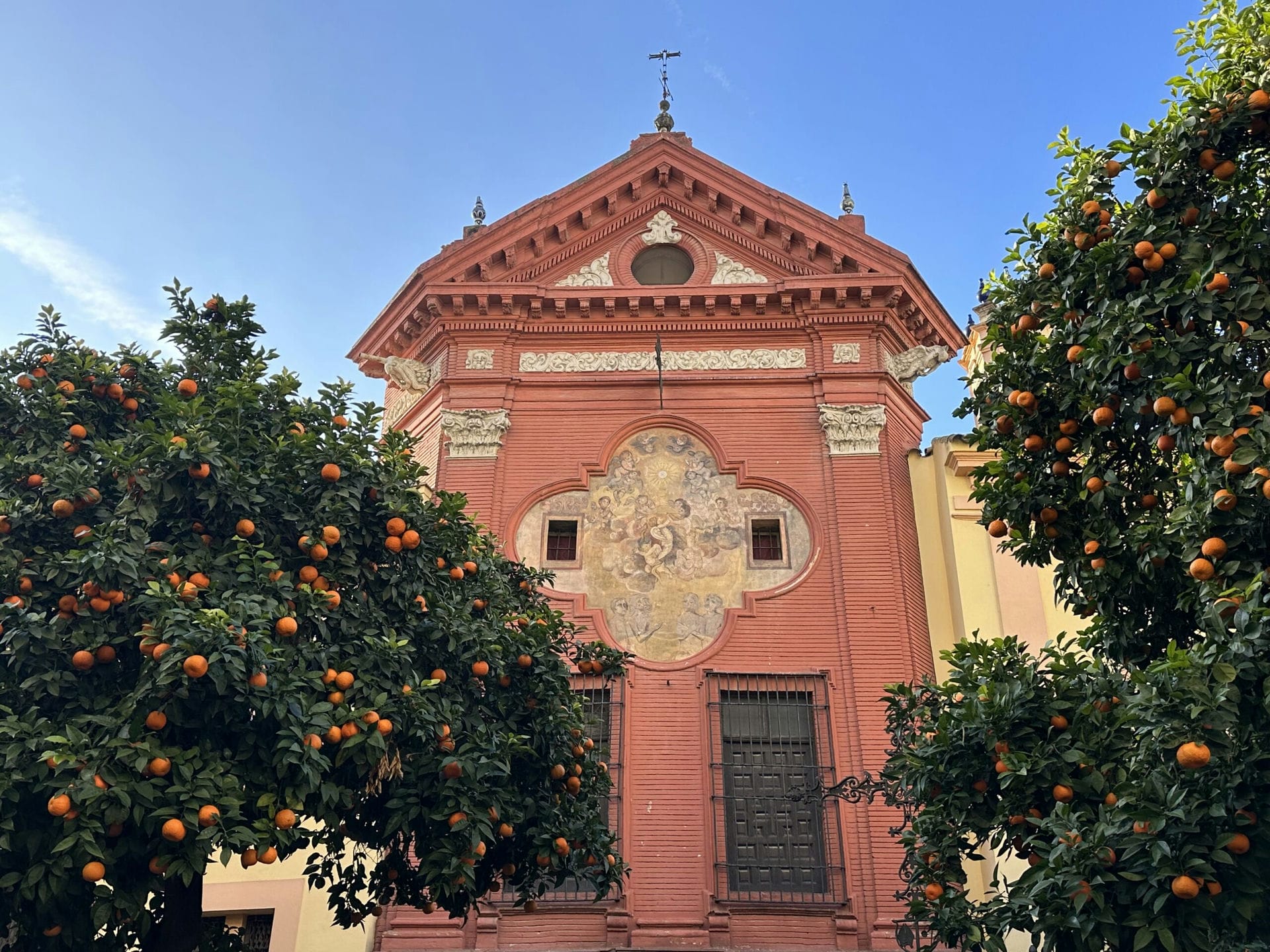
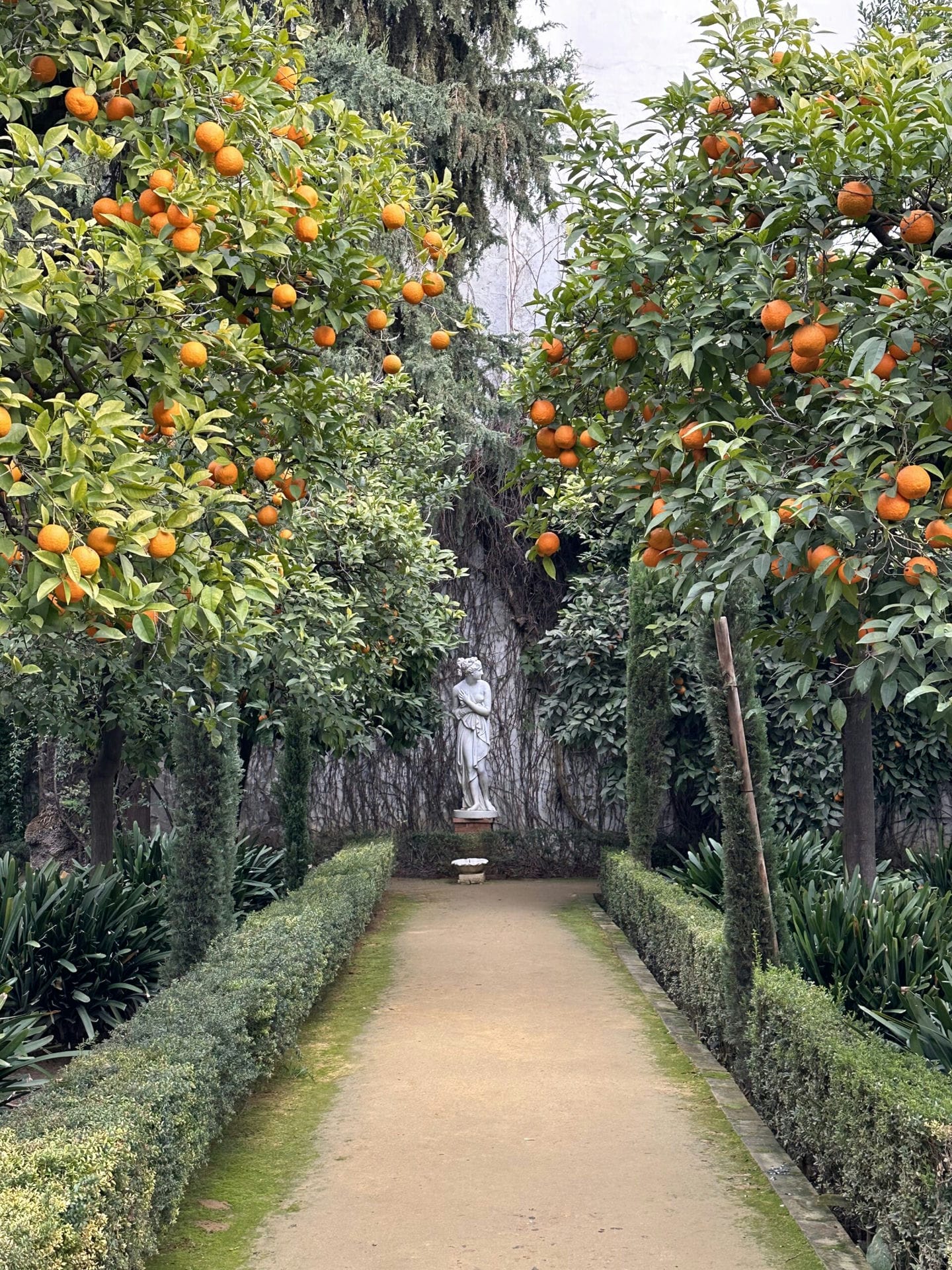
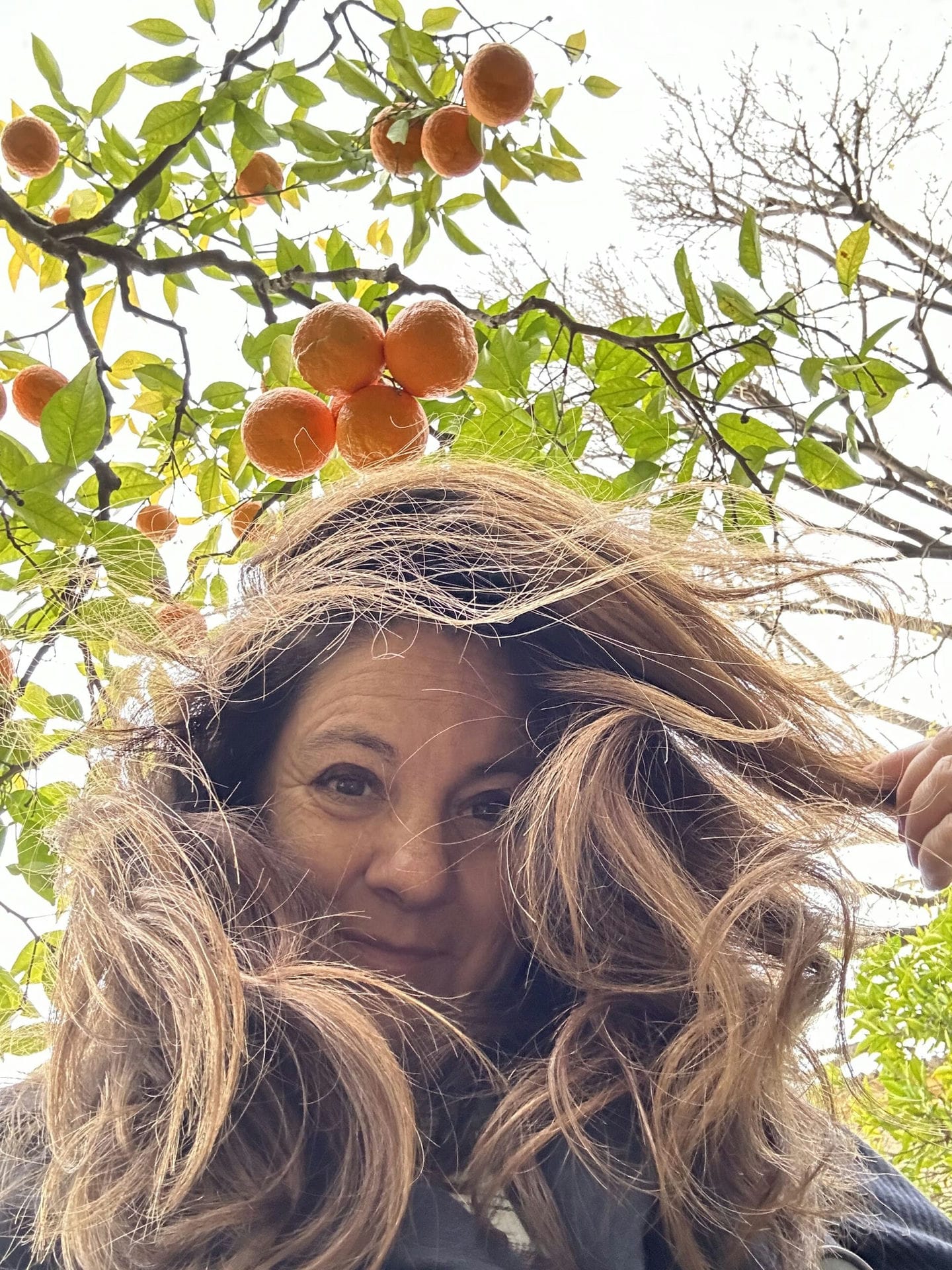
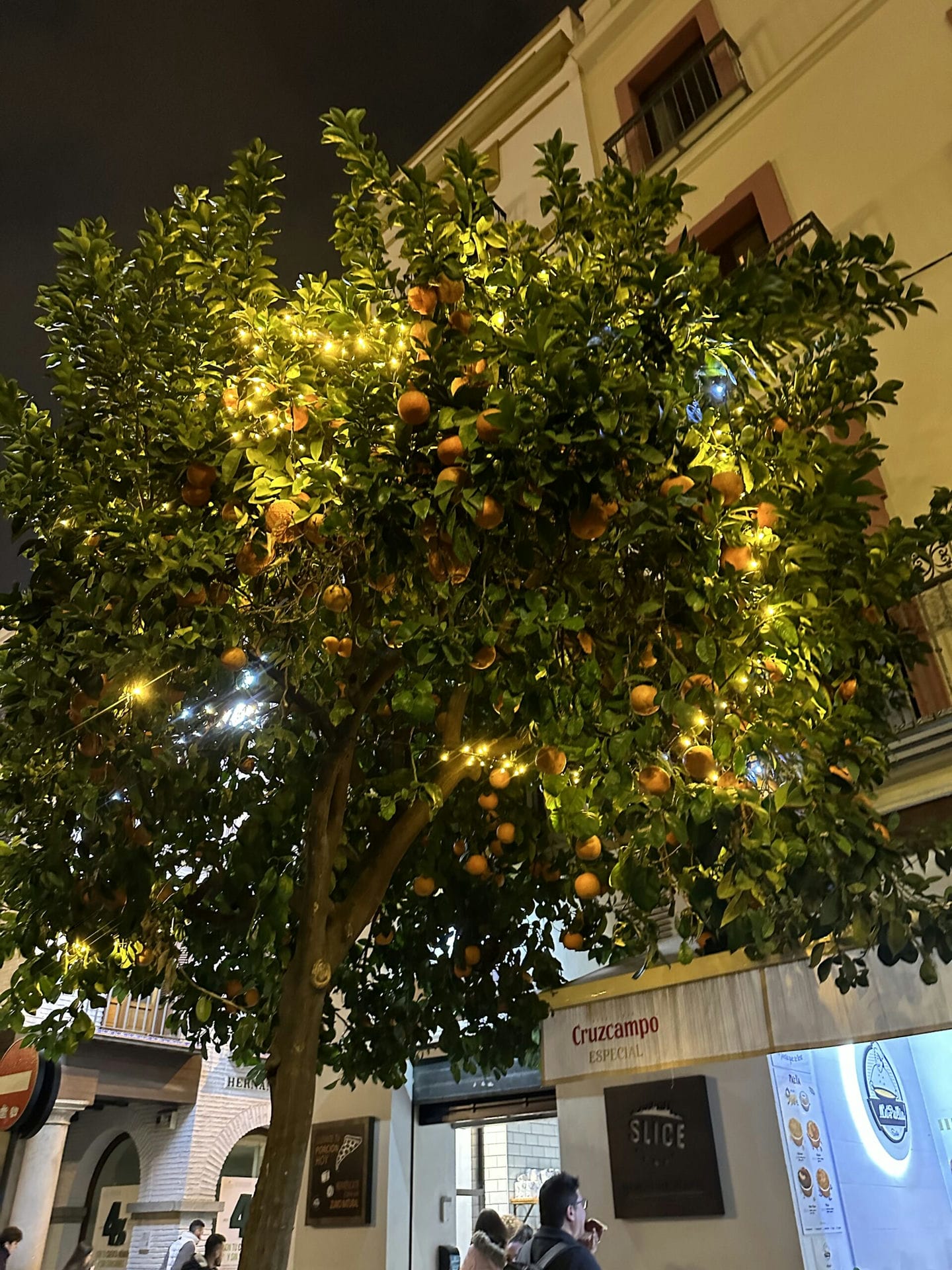
How to get there
Ita Airways and Spanish airlines have no direct flights from Italy, operated instead by Ryanair with departures from Orio Al Serio, Ciampino, Naples, Bologna, Venice (Treviso), and Pisa.
Where to sleep
The hotel options are vast, ranging from international chains, local hotels, cheaper guesthouses to hostels. I have no experience with B&Bs but it is worth looking at Airbnb or Trivago or Booking if your budget is not very high.
Hotels are not prohibitively priced either, so it is better to go for a higher category and have the peace of mind of services that a hotel facility can provide.
It is always helpful to take a look at Booking and Tripadvisor reviews, but remember that these are subjective opinions.
When choosing a hotel, I suggest adopting more objective criteria, such as those outlined in “Tips for inexperienced travelers” under “How to choose a hotel.”
Before booking, it is important to figure out what area to stay in. Seville is divided into neighborhoods, which are more or less crowded. The Casco Antiguo is the so-called Centro Historico, which is located on the left bank of the Guadalquivir, the great river that runs through Seville. It is divided in turn into small neighborhoods, the “Barrios.” Barrio de Santa Cruz-where the Cathedral and the Alcazar are located-is part of Seville’s old Jewish ghetto and also the most touristy area of the city. It is also among the best places to stay because it allows you to reach all the main sights on foot. Other pleasant and convenient neighborhoods are Alfalfa, Seville’s oldest area, and El Arenal, between the Avenida de la Constitucion and the banks of the Guadalquivir, where the Golden Tower and the Plaza de Toros are located. I don’t particularly like the Encarnacion-Regina neighborhood, which should still be visited both because it is home to the aristocratic Duenas Palace and El Metropol Parasol, the world’s largest wooden monument. Halmeda de Hercules is the neighborhood where Seville’s alternative nightlife finds its place, with avant-garde clubs and restaurants, but far from the city’s tradition. I don’t recommend it for sleeping there, but the Triana neighborhood, on the right bank of the river, is also definitely worth a walk.
I stayed at the Radisson Magdalena Plaza, a newly renovated five-star hotel in the heart of Casco Antiguo, close to everything but at the same time quiet.
What to see
Seville is easy to get around all on foot. If you are not particularly lazy walking allows you to enjoy the beauty of the city to the fullest. Getting lost in the alleys is the best way to visit. Abandoning the shopping streets and slipping into some small calle (that’s the name of the streets in Seville, exactly like the Venetian ones) where colorful balconies, terraces with climbing plants, entrances carpeted with colorful majolica tiles, crossing a bar and stopping for a tapa and a Tinto de Verano (a typical Spanish drink, made of red wine and soda, served cold with ice and – if you choose -, a slice of lemon or orange) is perhaps the best experience to have.
But you cannot leave Seville without seeing the most important monuments. Here I list a few, the ones that absolutely must be seen if you stay in the city 2 or 3 days, but the list is much longer:
The Cathedral, the largest Gothic Christian building in the world.
The Giralda, ancient minaret, the bell tower of the Cathedral, and symbol of Seville.
The Real Alcazar, a royal palace located in the city center, was designed and built by the Moors. It is a perfect example of Mudejar architecture and is still used today by the royal family during their visits to the city.
The marvelous Spanish Steps, built for the Ibero-American World’s Fair in 1929, is a small gem studded with majolica tiles that tell the story of Spain’s 48 provinces and bear the marble faces of famous people, including painters, sculptors, and leaders who have made Spanish history. A little trivia for those who are Star Wars fans: inside the large colonnade and in the square in front of it, scenes from the second episode “Attack of the Clones” were filmed, where the Plaza of Spain depicted a palace in the city of Theed on the planet Naboo.
The Golden Tower was built in 1221 to defend the city’s harbor.
The Archives General des Indias was built in 1572 by order of Philip II, and destined since 1785 under Charles III to archive all documents related to the colonies, which can still be consulted today. Admission here is always free.
The Casa de Pilato is a palace combining Italian Renaissance and Spanish Mudejar styles adorned with precious azulejos and gardens built in 1493 by Marquis Pedro Enriquez de Quiñones and his wife Catalina de Rivera. Many think the palace is a copy of the House of Pilate (hence the name), but the story is another. The marquis, upon returning from his trip to Jerusalem discovered that the distance between his home and the church located outside the walls, known as the Cross of the Field was the same as the distance between the ruins of Pontius Pilate’s residence and Calvary. Surprised by this coincidence, the marquis established along the way the fourteen Stations of the Cross, of which the first, his home, corresponded to Pilate’s House.
The Palacio de las Dueñas is a majestic building full of objects and memorabilia belonging to the Casa d’Alba. It is currently one of the most visited monuments in Seville, a beautifully preserved work of art with patios and gardens that preserve at least 7,000 species of plants.
The Palacio de la Condesa de Lebrija located on Calle Cuna, is characterized by the wealth of artistic works it contains. The countess was a great lover of archaeology and collected artifacts from various eras and cultures throughout her life. The Ochavada Room contains mosaics from Italica, an ancient Roman colony, which were acquired by the countess in 1914.
The Palacio de San Telmo is home to the presidency of the government. In the gardens of the palace is the Costurero de la Reina (The Queen’s sewing room), the neomudéjar oldest in Seville built in 1893 as a small hexagonal castle with turrets at the corners and now inside María Luisa Park. The building’s original name was “San Telmo Pavilion” and it owes its nickname to the legend that Mercedes of Orleans, who later became queen, spent time there sewing. It is strongly suggested to book your visit 2 weeks in advance.
As for the churches, it is always worth taking a look inside when you pass one. There are many it is true, as is normal in a very Catholic city, but the sight of some leaves you speechless.
Don’t miss the Iglesia del Salvador, Santa Maria La Blanca, and the Basilica de la Macarena in the Barrio of the same name. Of modern construction, it houses Seville’s most revered image, a sculpture from the mid-17th century popularly known as the Macarena. And if you still have some time, a stroll to the island in the middle of the Guadalquivir River that houses the Carthusian monastery of Santa Maria de las Cuevas also known as the Monastery of the Cartuja does not hurt.
Mind you, if you want to avoid kilometer-long lines and hours of waiting, (risking a full house) I strongly suggest booking visits to the Cathedral and the Alcazar online and in good time. If you pass in front of a Turist Point (there are several scattered around the city) get the mini-guide of free visits: on certain days of the week and/or at particular times in many city monuments, you don’t pay admission. You may queue a bit, but they are on average fast. The only non-positive (but understandable) note is that on a free day, places are not always visitable in all their beauty, with some areas remaining precluded.
Also on sale at Turist Points are tickets still available for visits to major monuments.
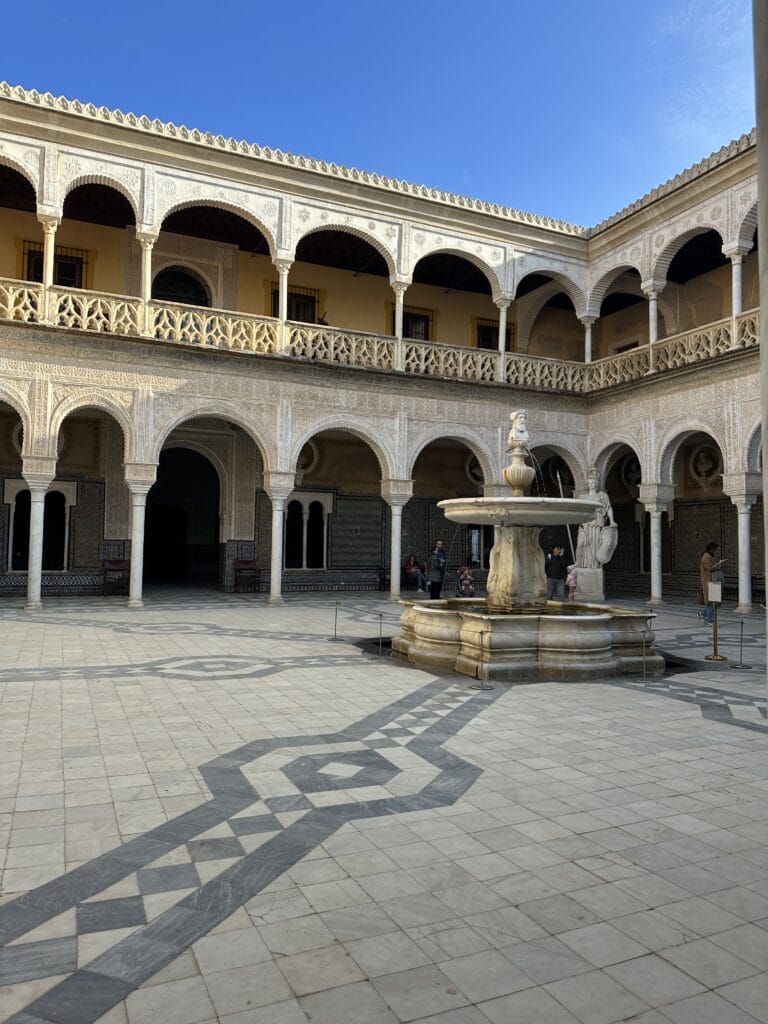
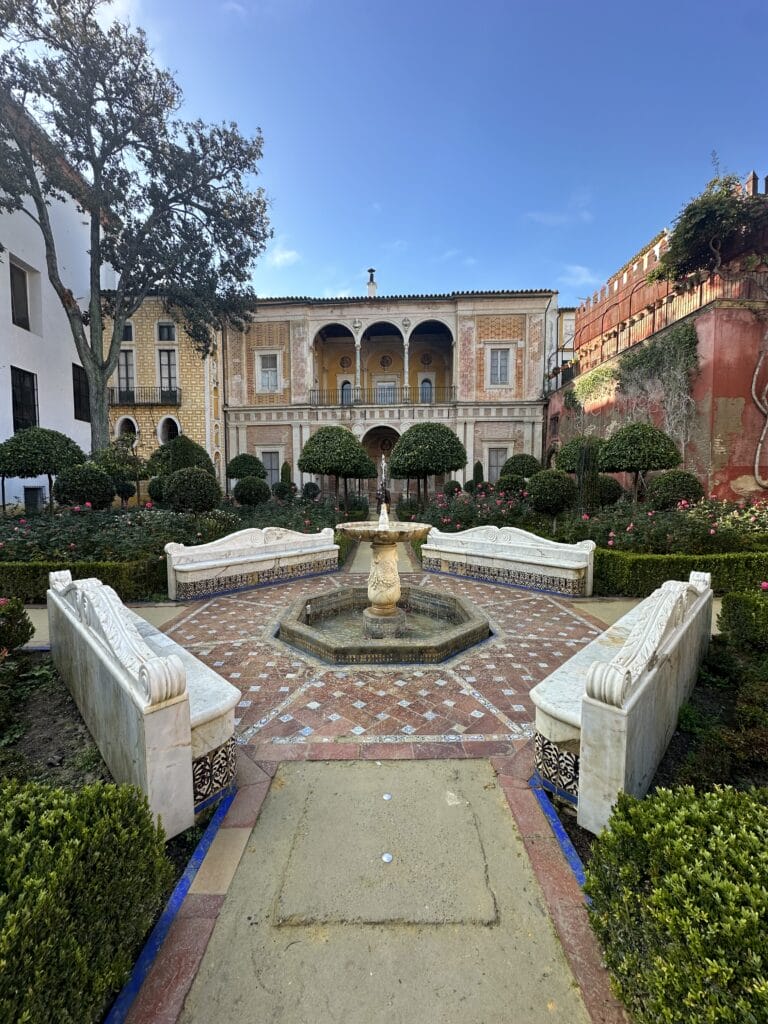
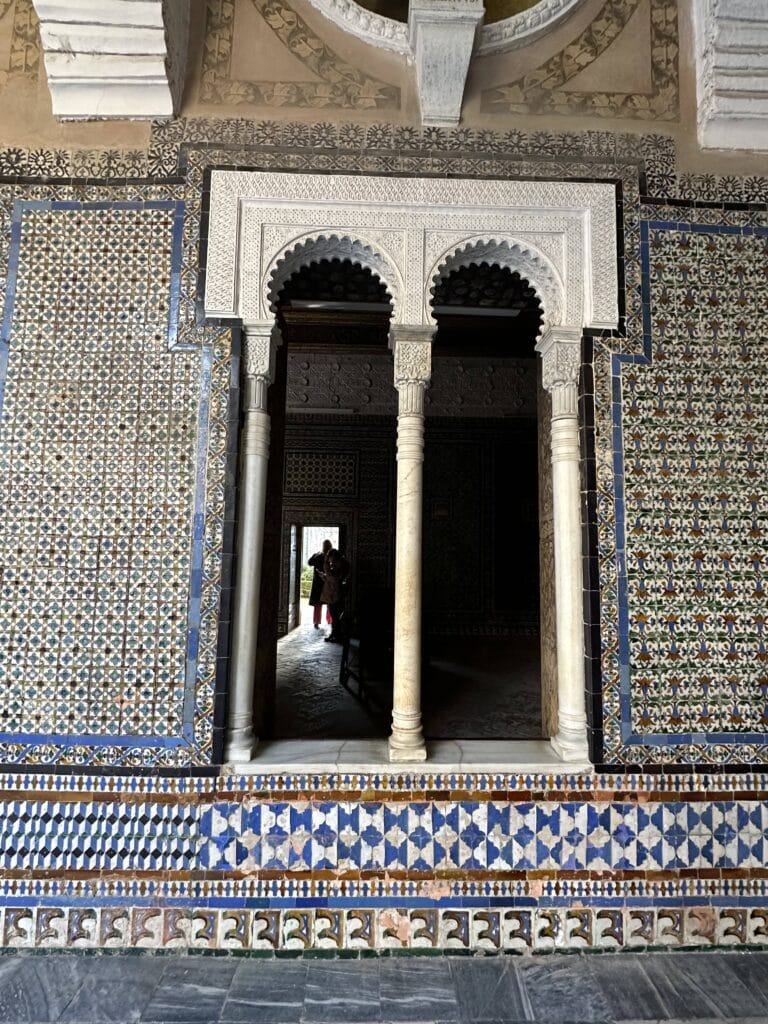
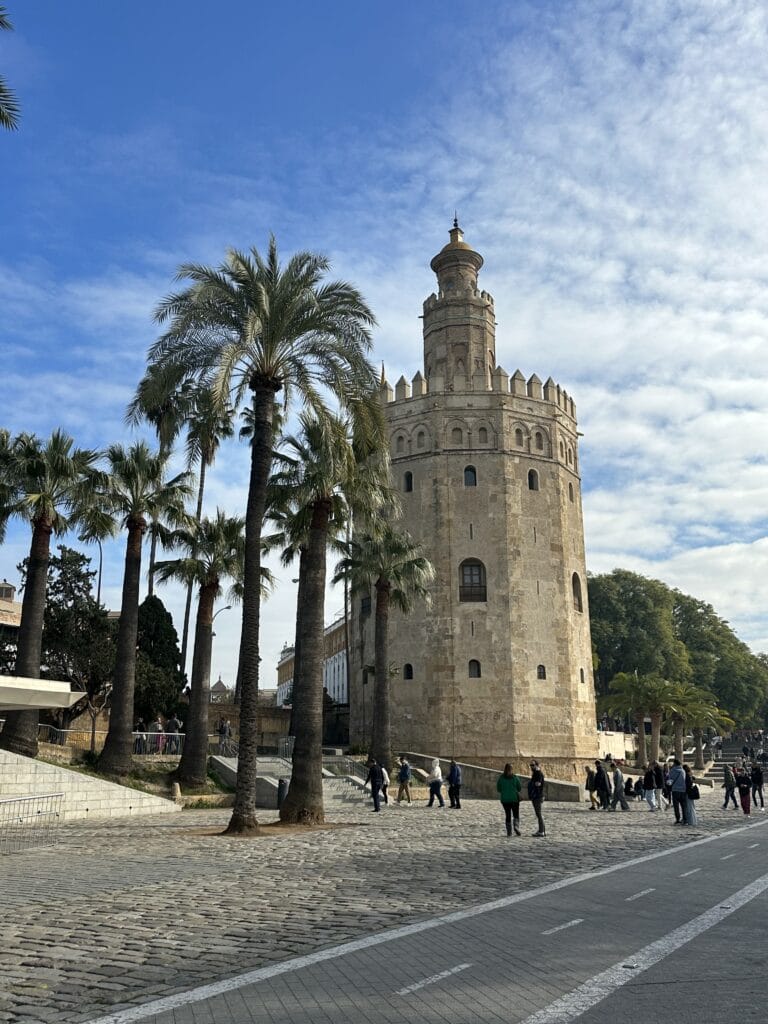
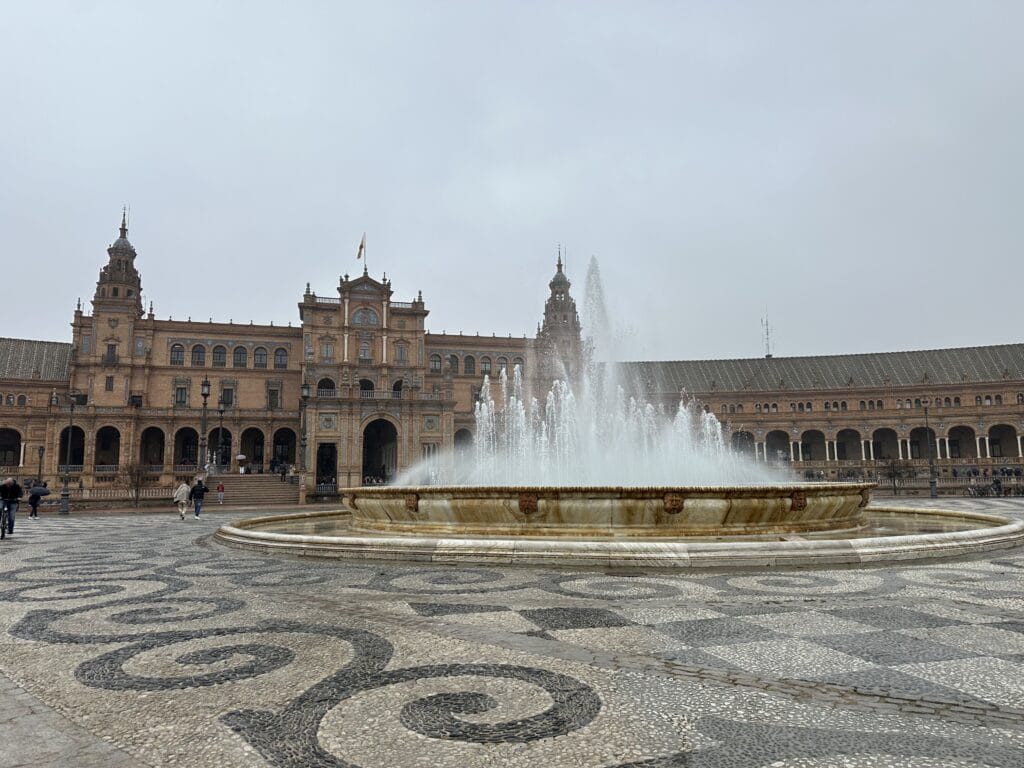
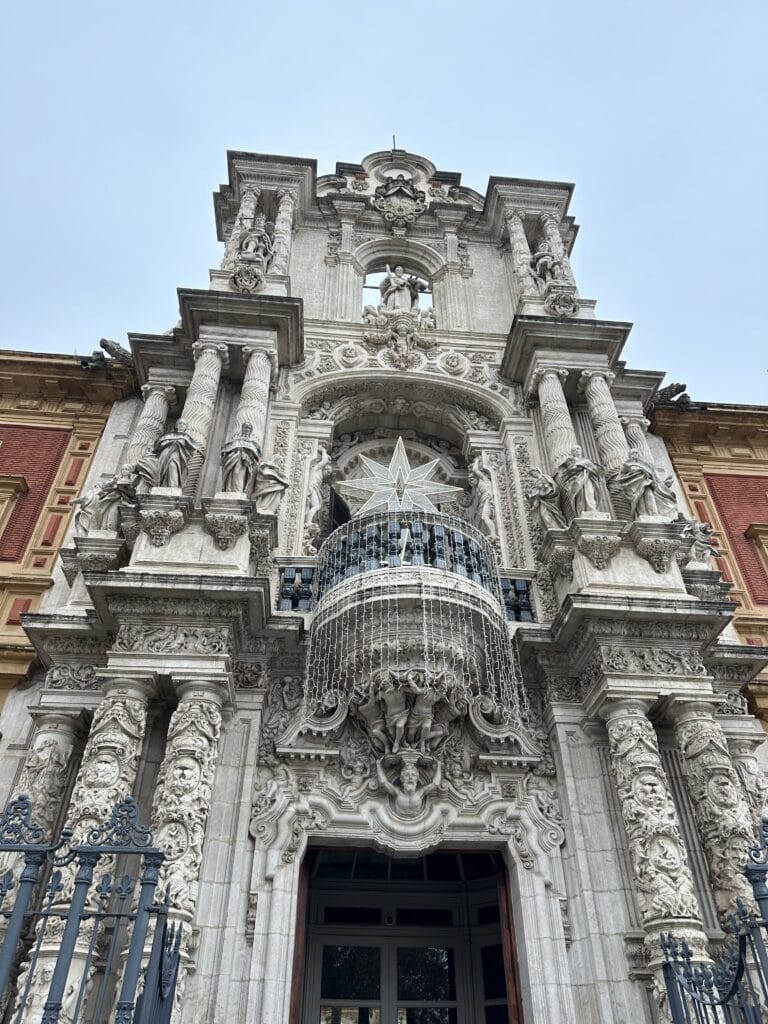
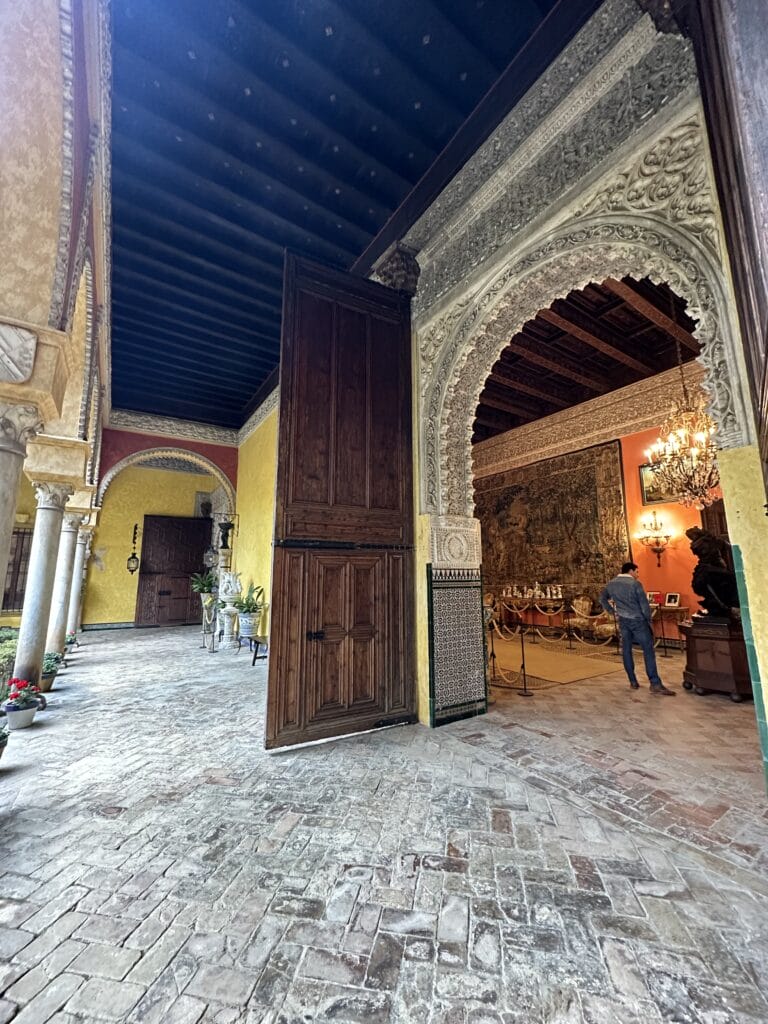
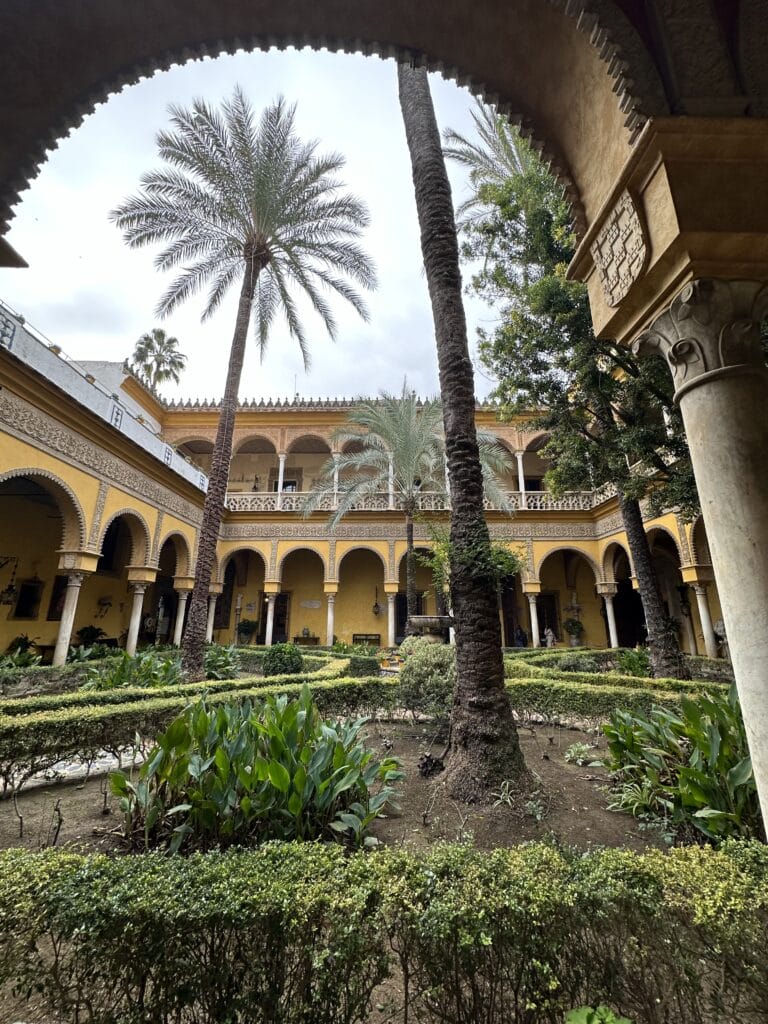
Eating
Tapas
Seville is an apotheosis for those who like to eat something at all hours. And even if it is not your habit you will still do it because stops for “tapas” are an integral and indispensable part of the trip.
Almost all establishments serve them, tapas are small samples (however, do not always take the word small literally….) , of a wide variety of food preparations typical of Spanish cuisine, cold or hot, usually eaten as appetizers or entrees. Tapas can easily be substitutes for dinner or lunch as well if you don’t need the comfortable table and tablecloth.
The tables are small and you often eat standing up, but in Seville this is the rule, not the exception! In any case, if you want the certainty of finding a seat…check the opening hours and be ready when they raise the shutters! The great thing about tapas is that they allow you to sample more things, preferably shared with those traveling with you. It’s an apotheosis for the senses to get lost in the Andalusian flavors: hamon iberico, anchovies, grilled mushrooms, secreto iberico, patatas bravas, chorizo (spicy salamino), bull tail, croquettes, olives, bacalao, eggs in all forms and shrimp tortillitas ….and the hungrier the more you taste!
All accompanied by a sangria or a glass of Tinto de Verano (to choose something local).
On places that serve tapas, the choice is also wide. My favorite is the historic Casa Morales, a place founded in 1850 that stands out for a great quality of the material. Here I have enjoyed the best Presa Iberiac and a delicious fote a la plancha (a kind of foie gras). If you want to enjoy some tapas in a 12th-century hammam restored in 2020, don’t miss Bar Giralda. At Bodega Paco Gonora, they make delicious langostinos al ajillo, and Casa Roman is a little piece of heaven overlooking a charming, quiet little square.
If tapas are not enough for you, many places also offer the “medium” portion (a little larger than the tapa) and the “plato,” or whole portion.
Restaurants
For a more relaxed and comfortable dinner you can also find excellent restaurants. I tried two of them:
Manolo Mayo: beautiful location and a very special dining experience.
Casa Robles: a three-story restaurant with a cozy atmosphere and extremely courteous staff. Don’t miss a tasting of raw fish (including a selection of Spanish oysters) as well as traditional dishes and desserts. The wine list is particularly interesting.
At the end of the meal a good Herbas, an infusion of 18 herbs native to Ibiza, helps digest all that your gluttony’ has brought you to enjoy.
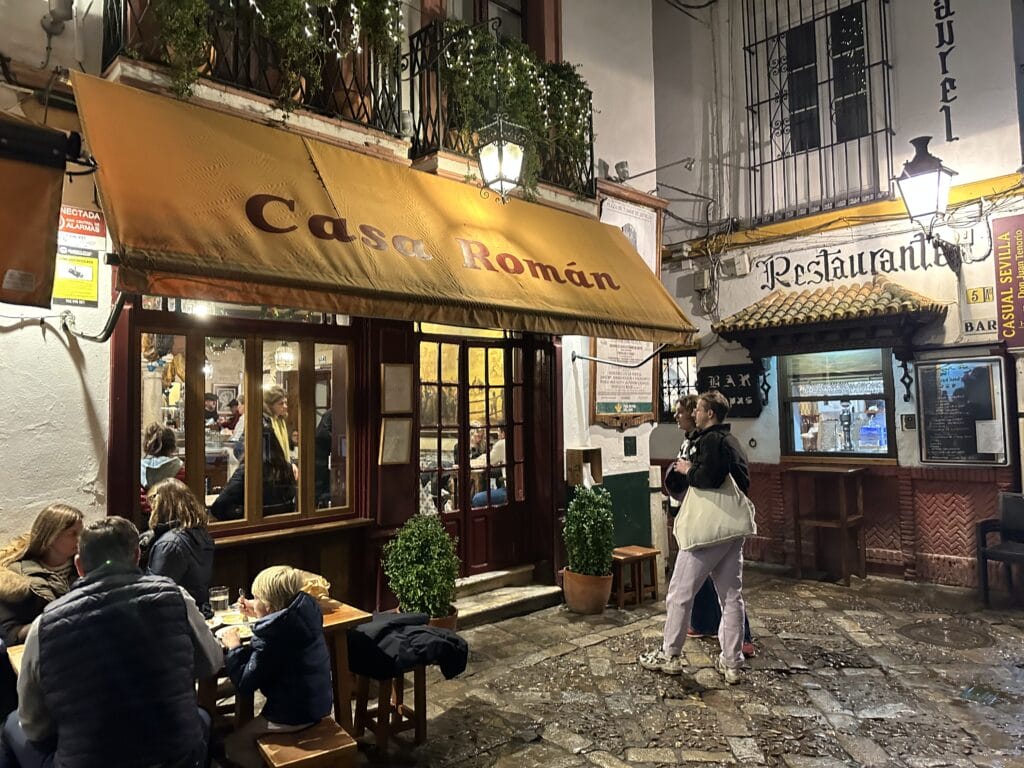
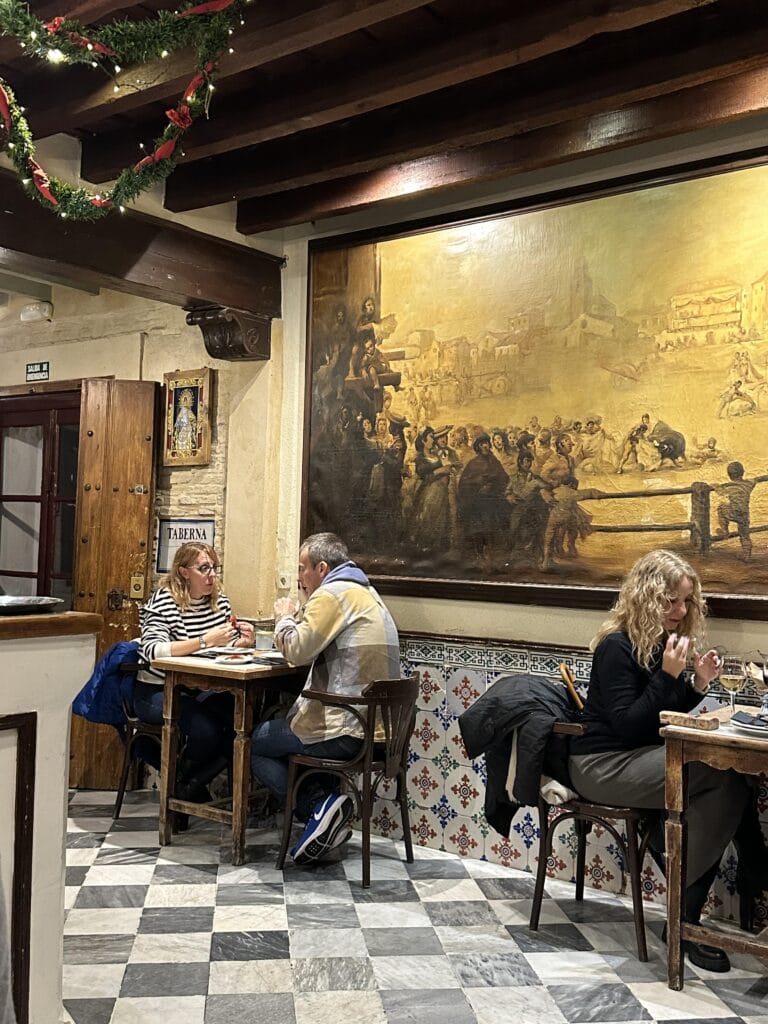
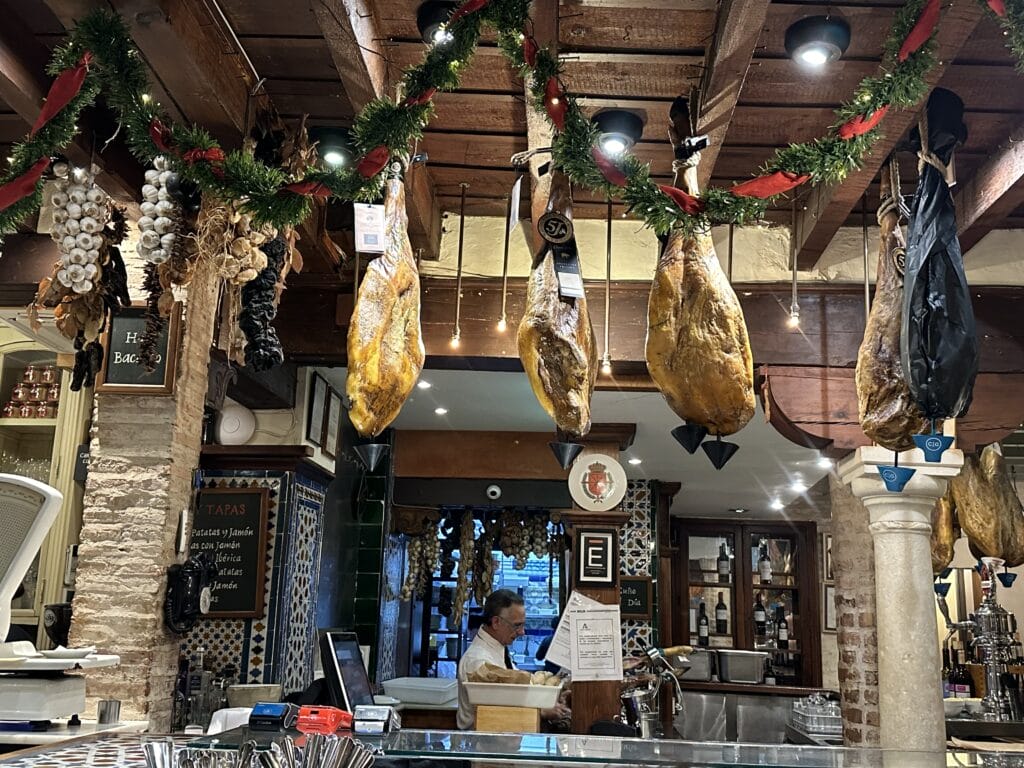
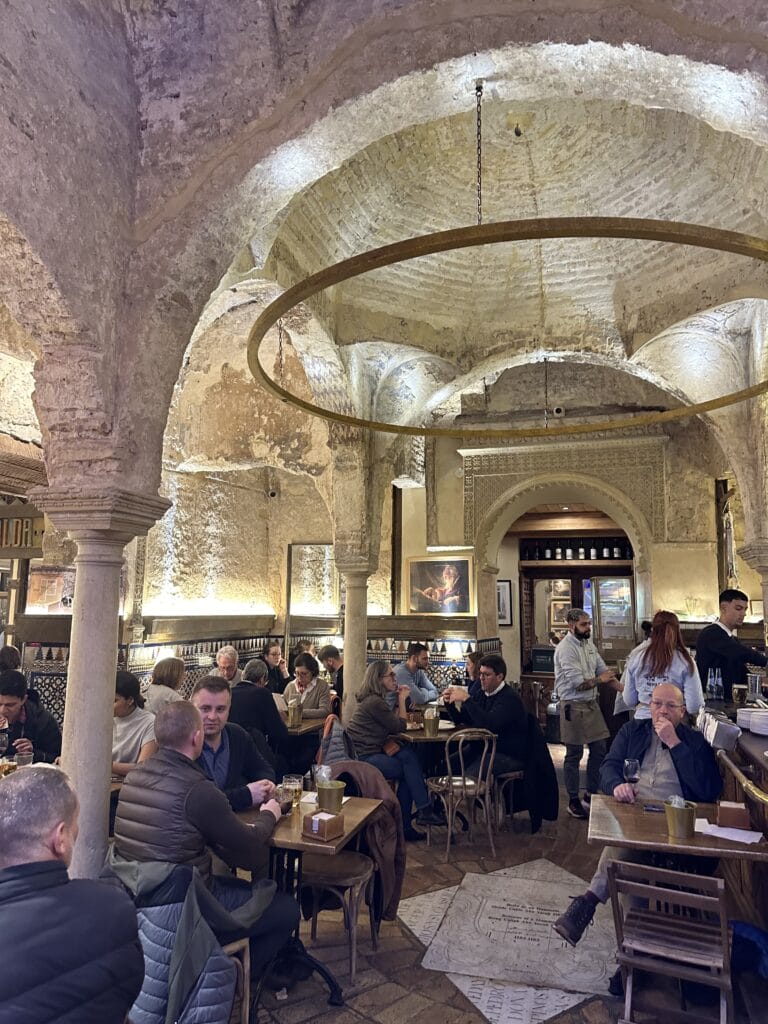
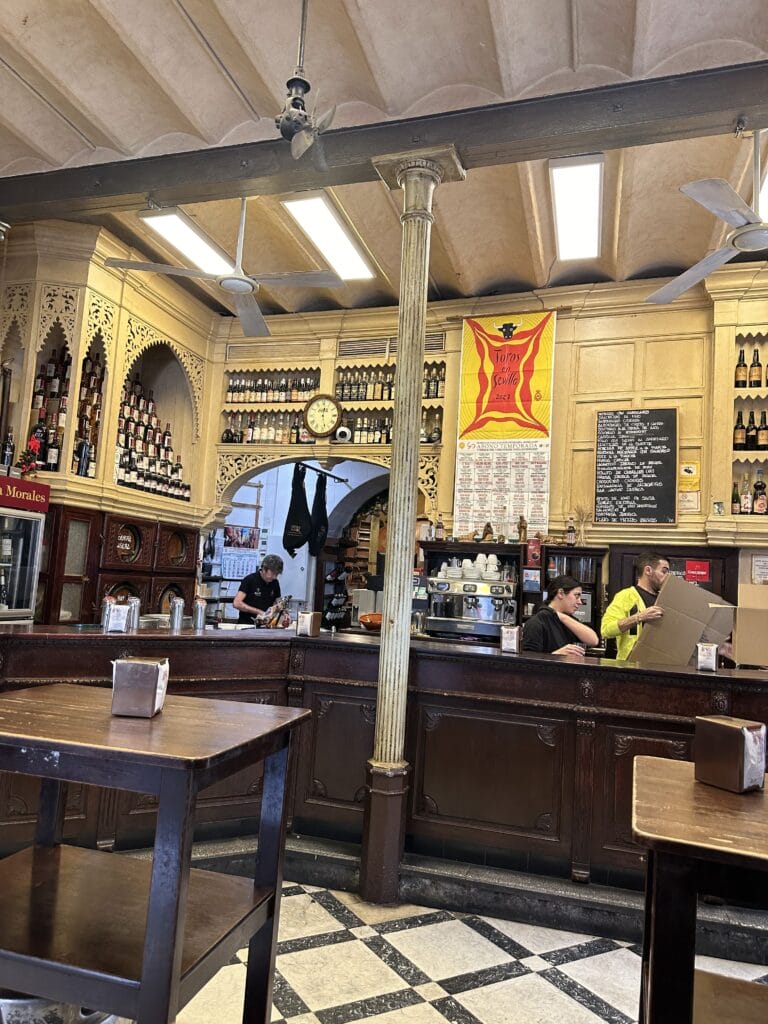
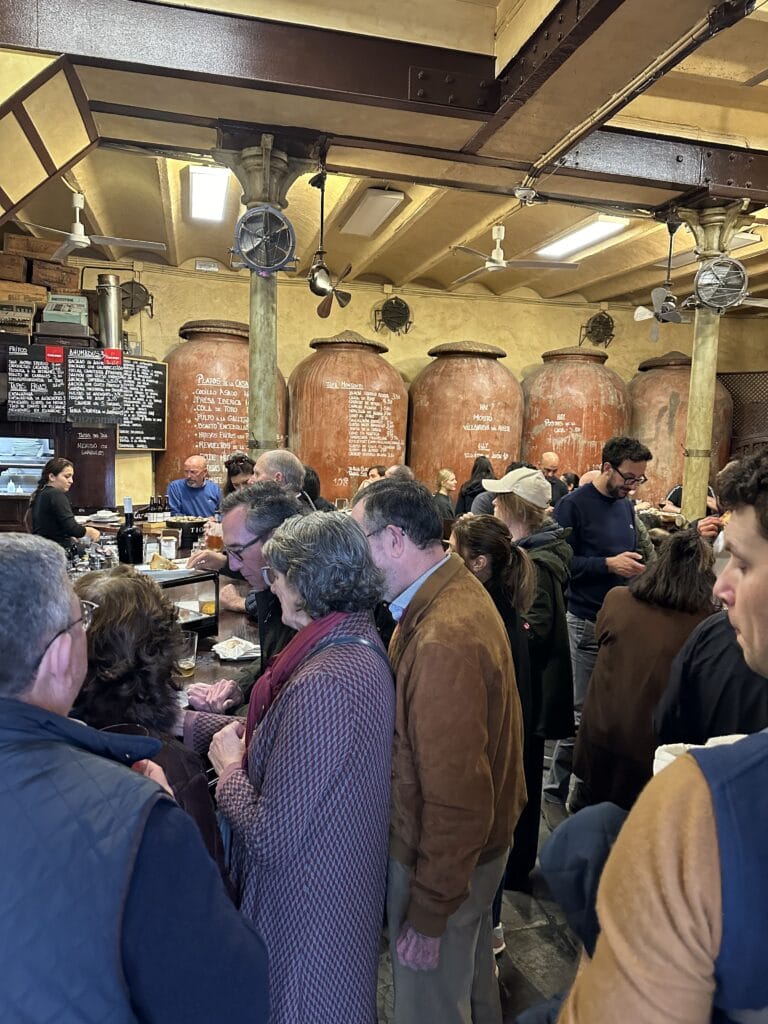
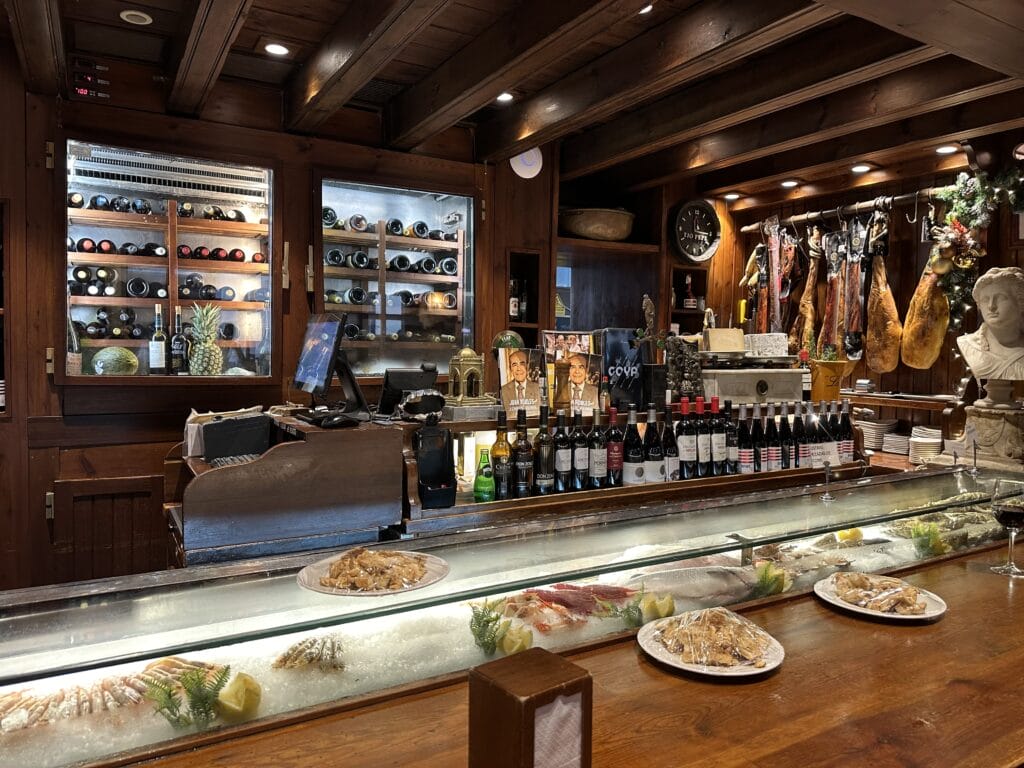
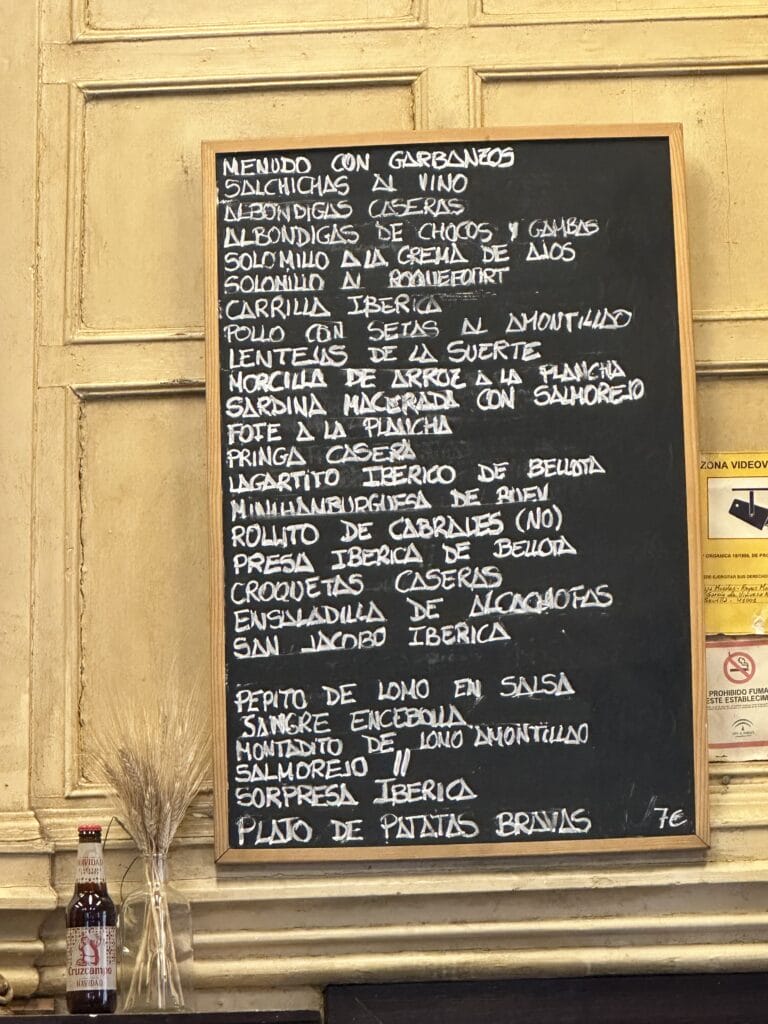
Breakfast
I went back there for three consecutive rounds…. and not because there was no other choice, but because I loved it from the first moment: Casa Murillo (C. San Pablo, 8,) offers breakfast ranging from sweet to savory, from bread, butter and jam to brioche, from (delicious) ham or salmon sandwiches to tortillas. A soft bread inside and crispy outside, warmed and toasted just right to which is added a great quality in the ingredients. And the coffee is Illy-which for a foodie makes all the difference!
A great alternative is Cafeteria Crustum Panaderia (Calle Cerrajera, 23), which is also an excellent bakery. Tortillas, brioches, and sandwiches of all kinds served in a very cozy place, the kind where you’d want to be chatting with your friends while feeling right at home!
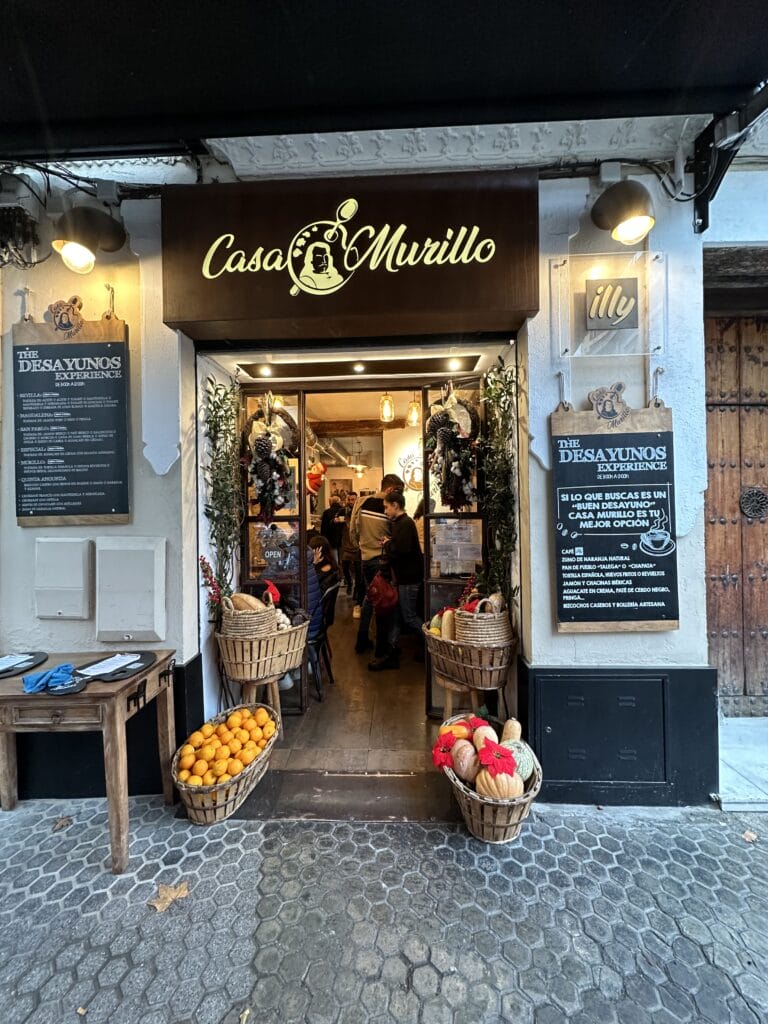
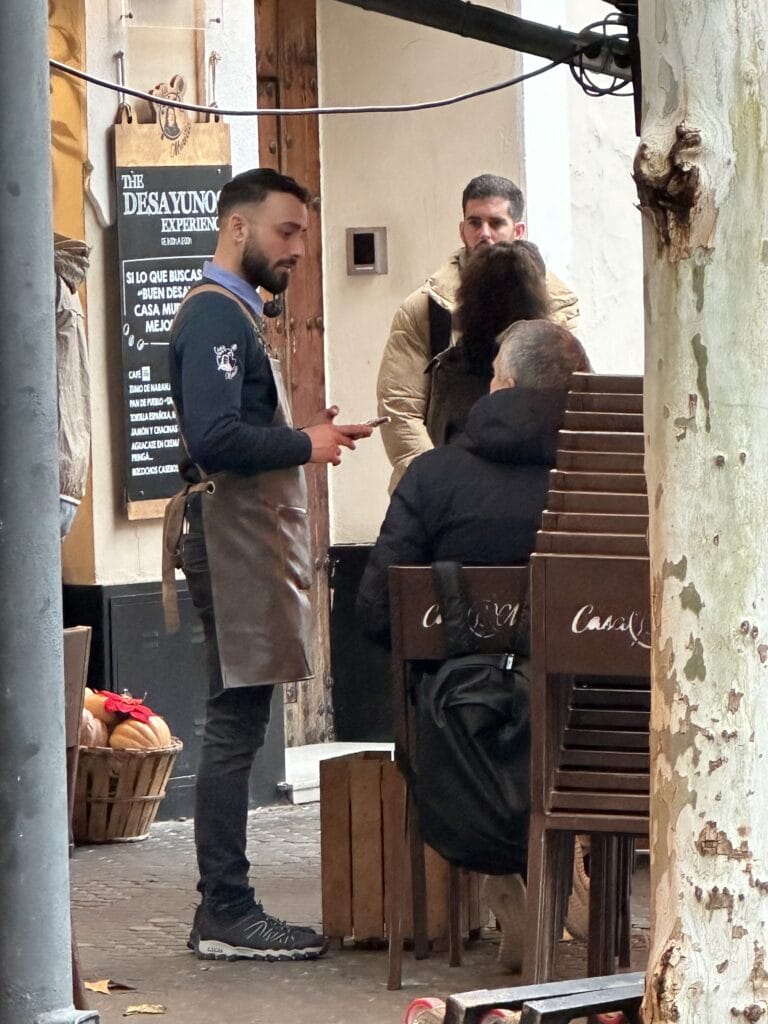
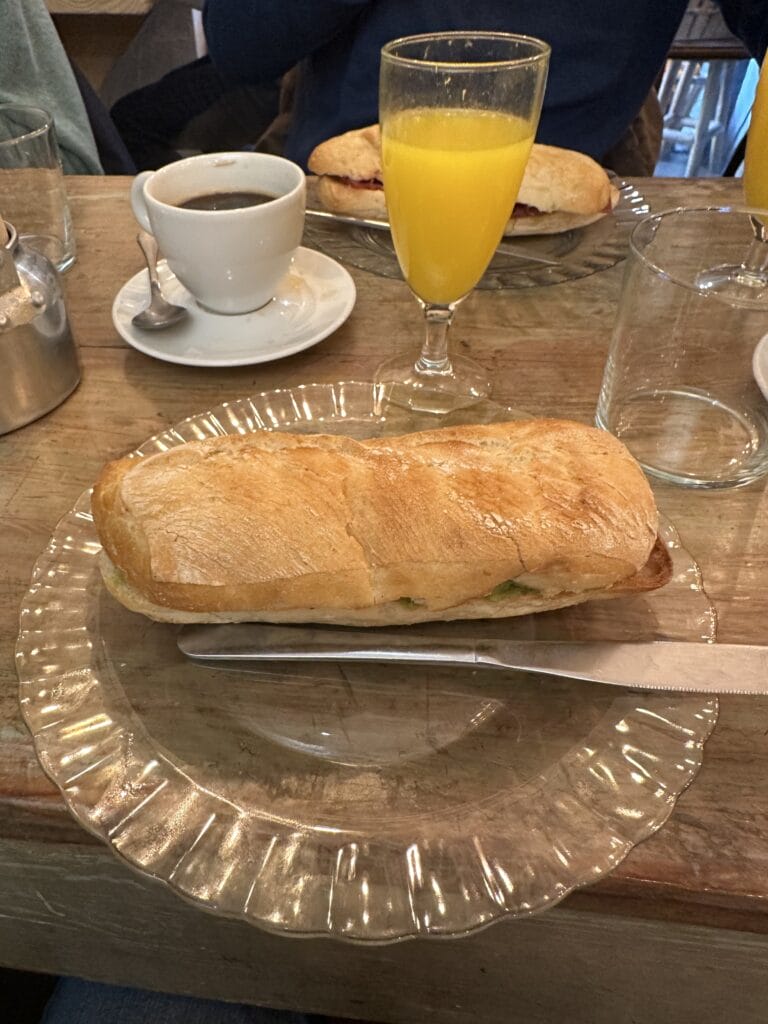
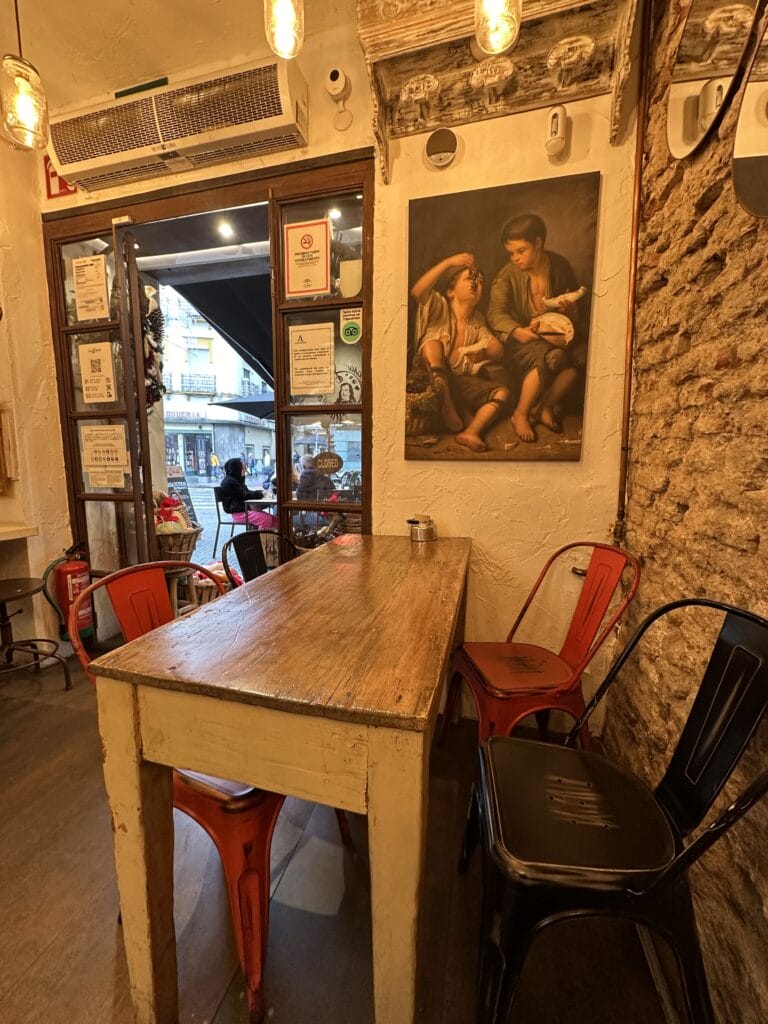
Seville guides
On the web you can find everything, it is true, but having a small up-to-date guide is handy for opening and closing times of places of interest, costs, general info, suggestions. Clearly, then, guides should not be followed to the letter…instinct or suggestions from trusted friends who have preceded you in your visit are always the most important.
In any case, I recommend the Lonley Planet paperback, reprinted in October 2023, short, compact, up-to-date, and useful!
Enjoy Sevilla! And as the Spanish say…Quien no ha visto Sevilla, no ha visto maravilla!

